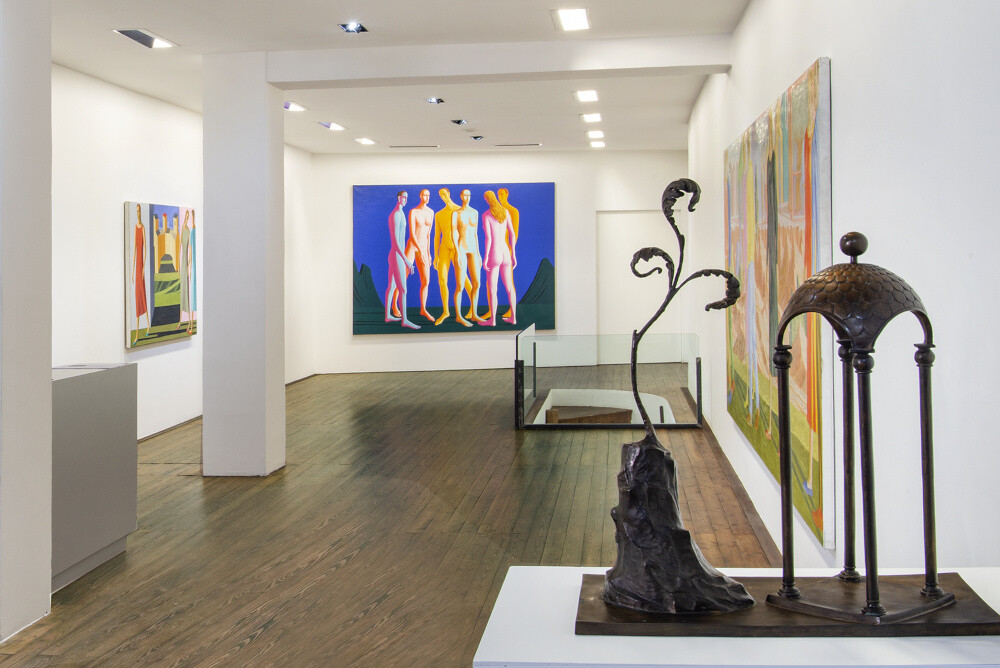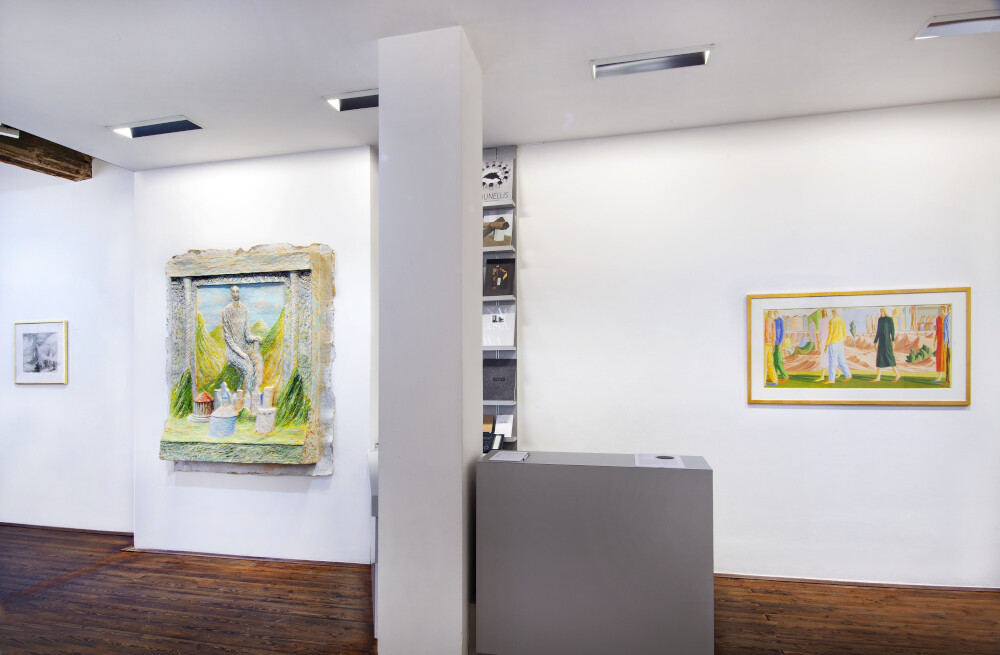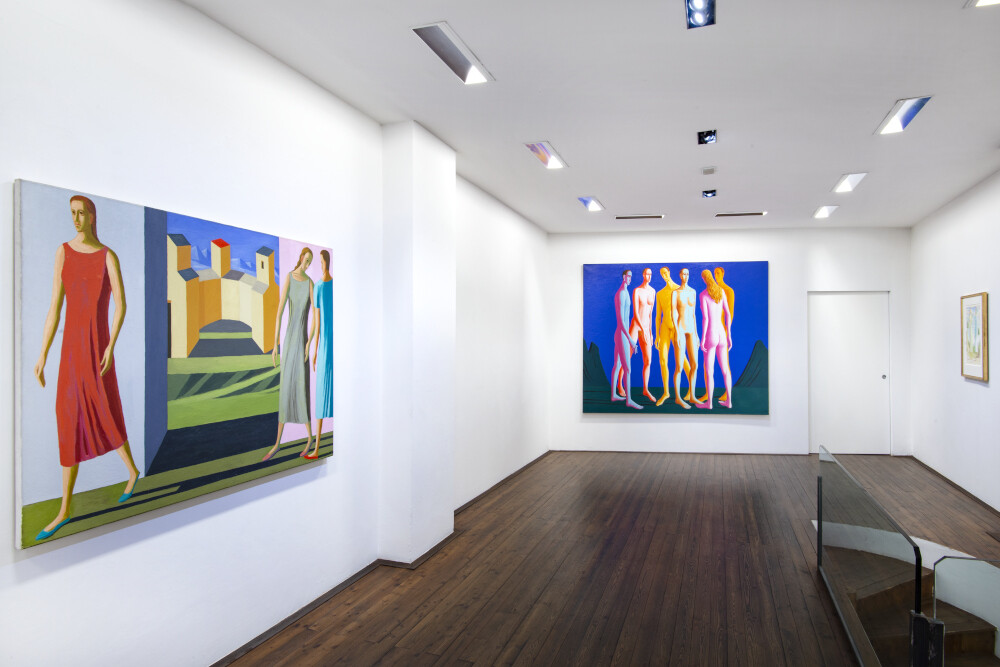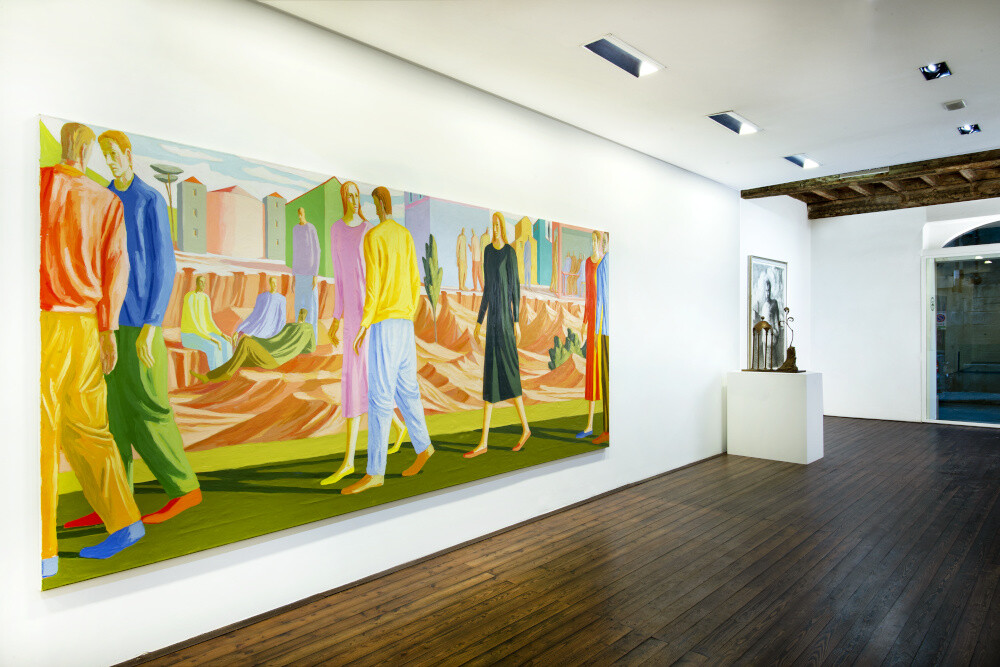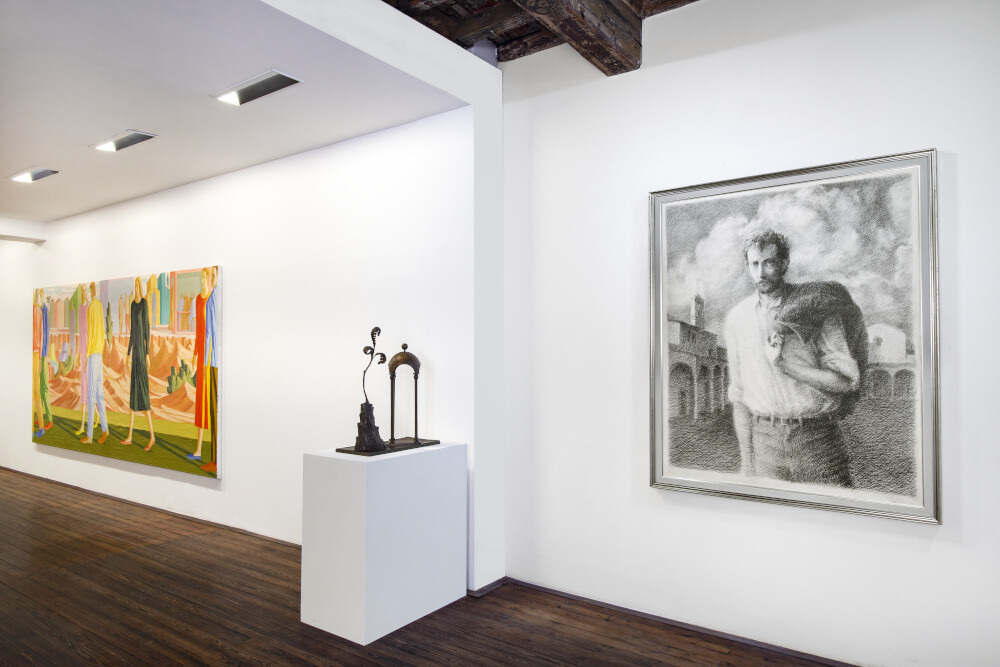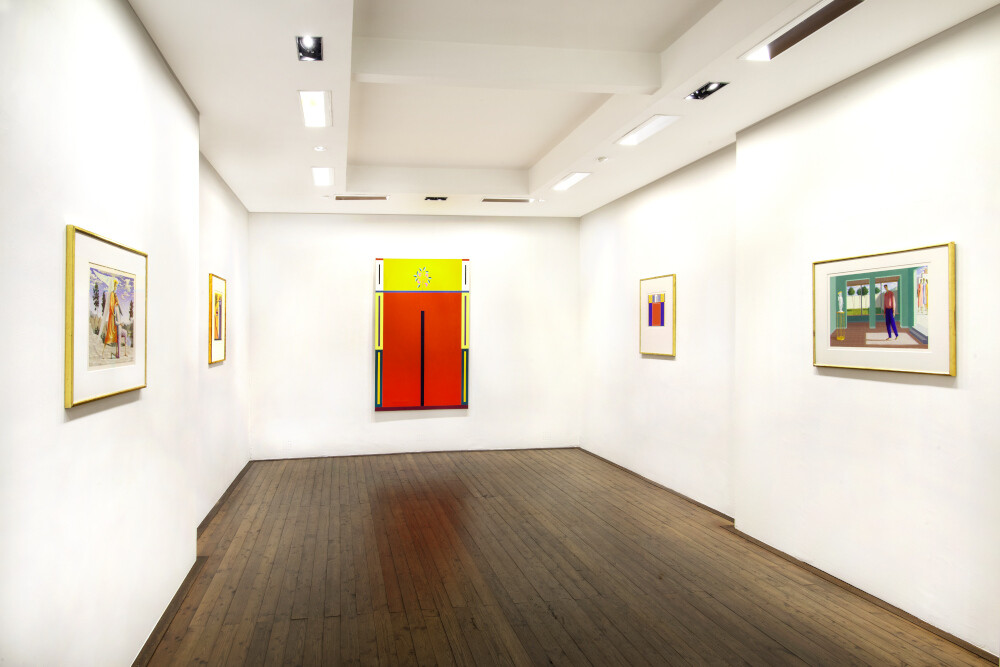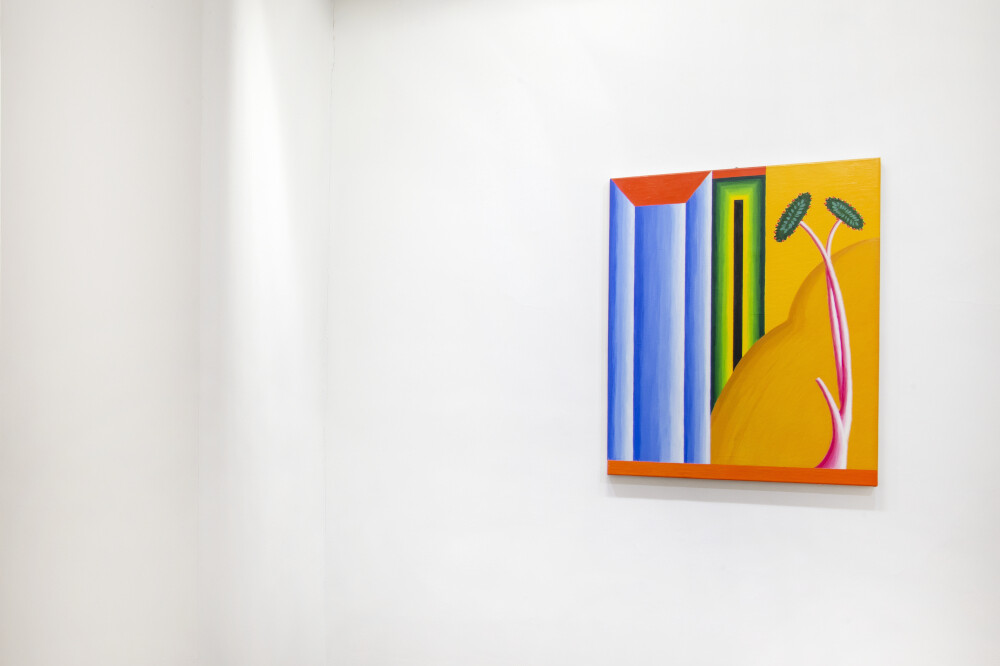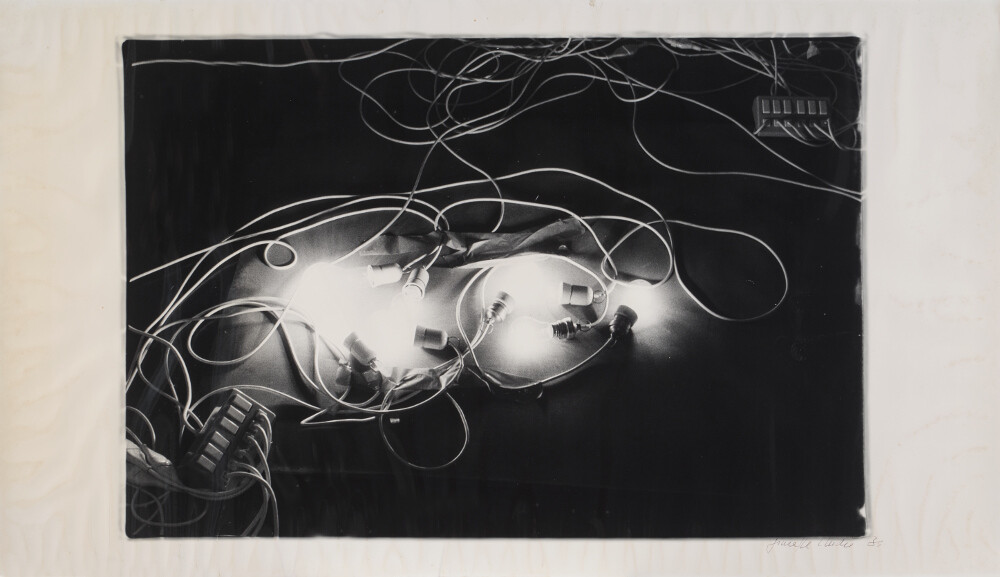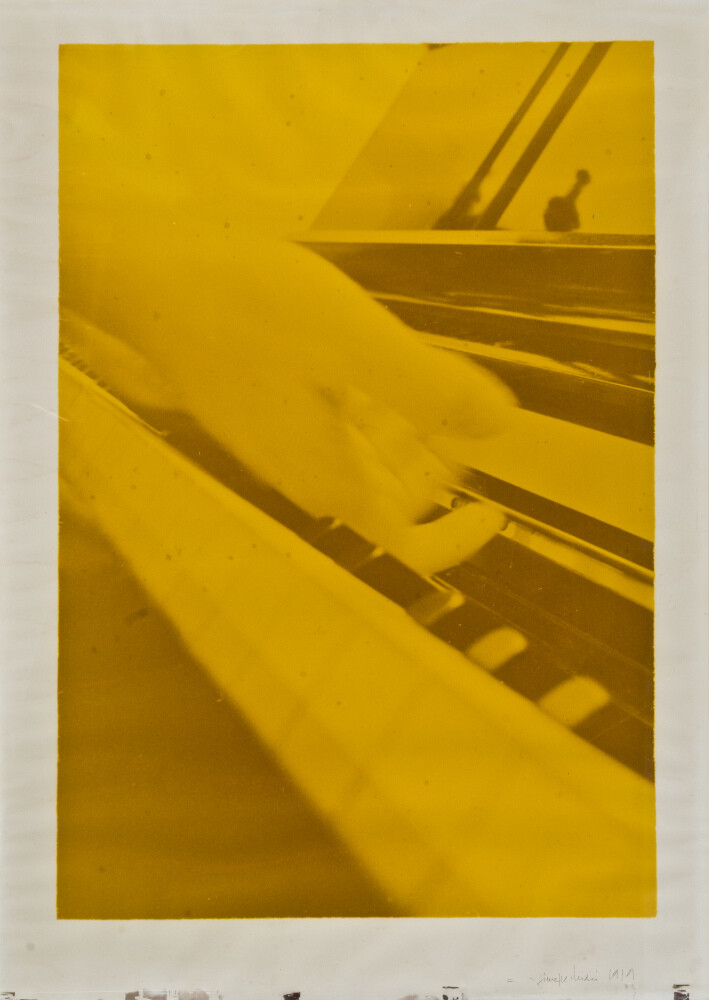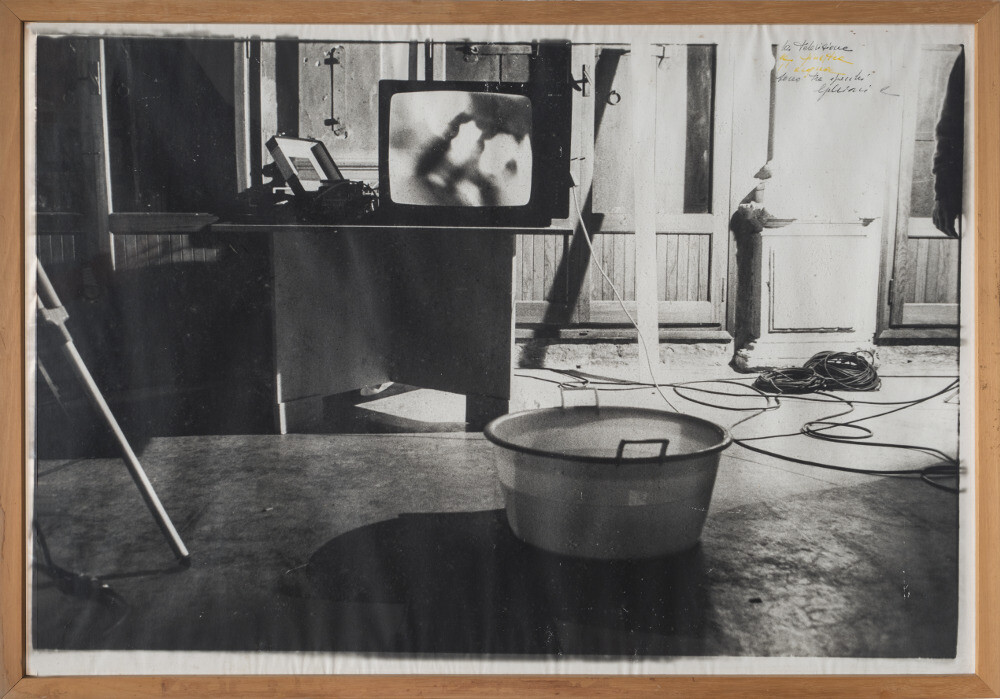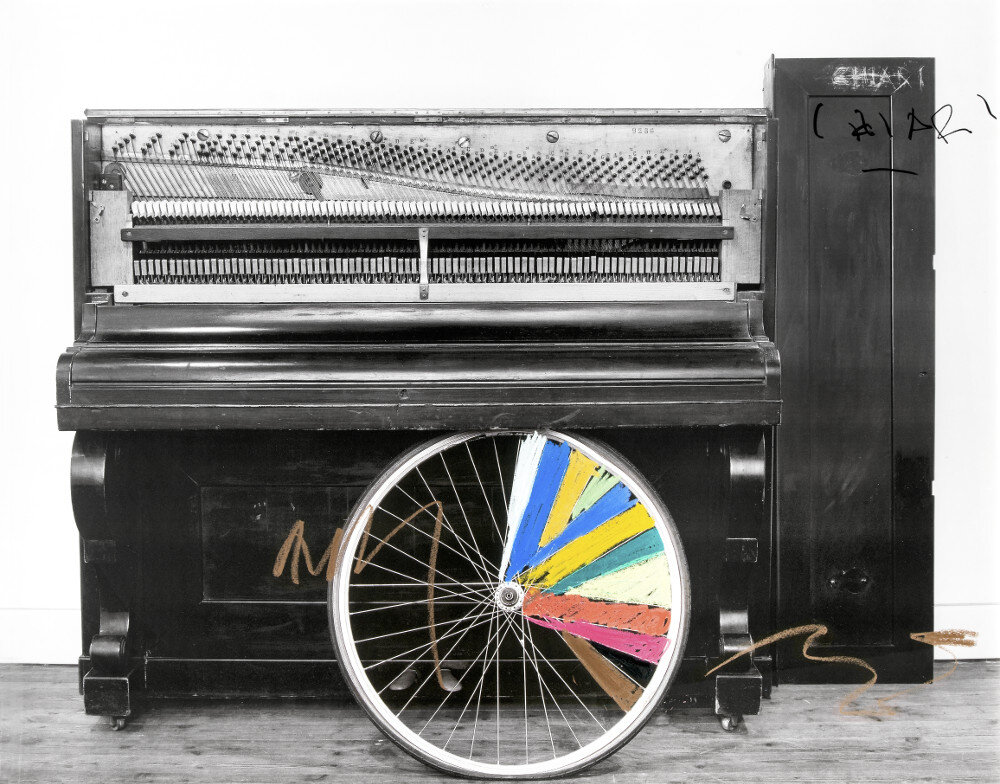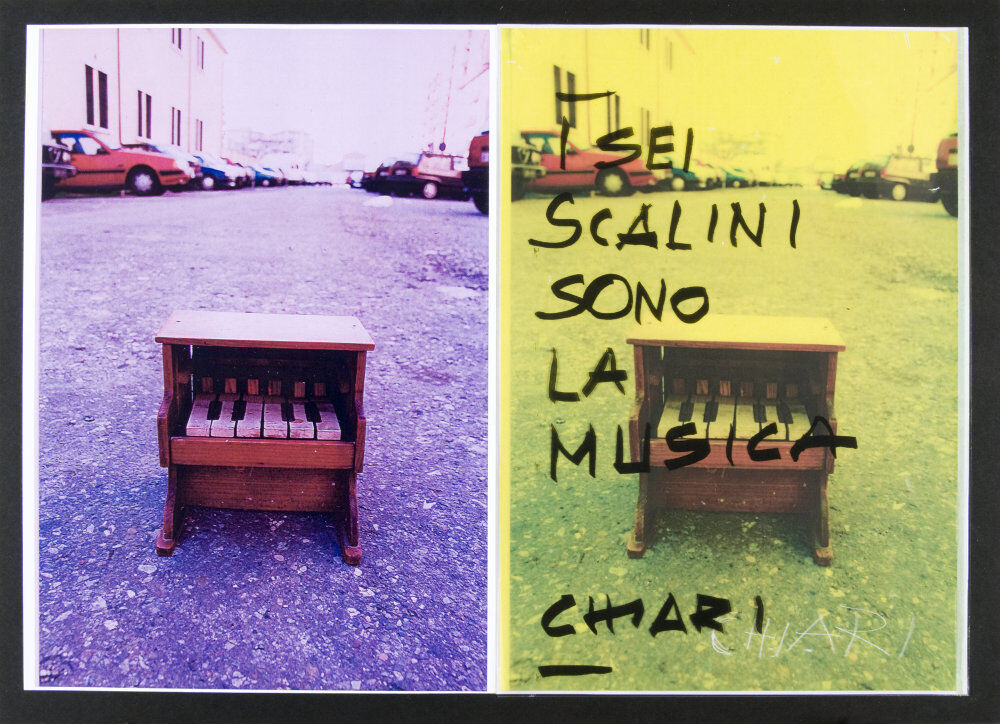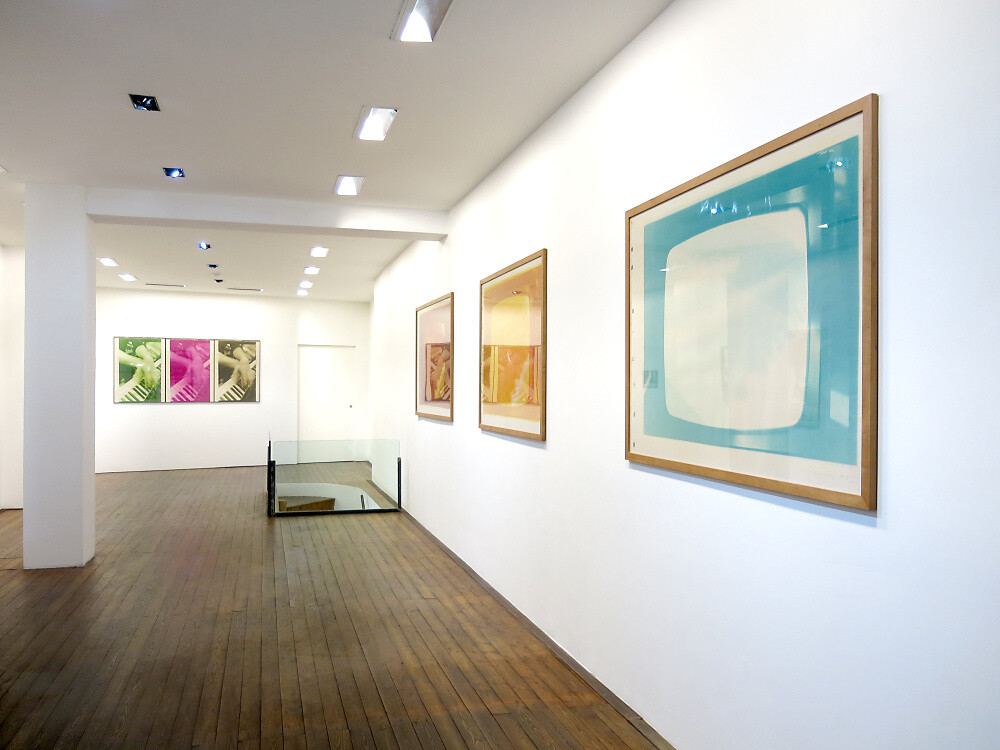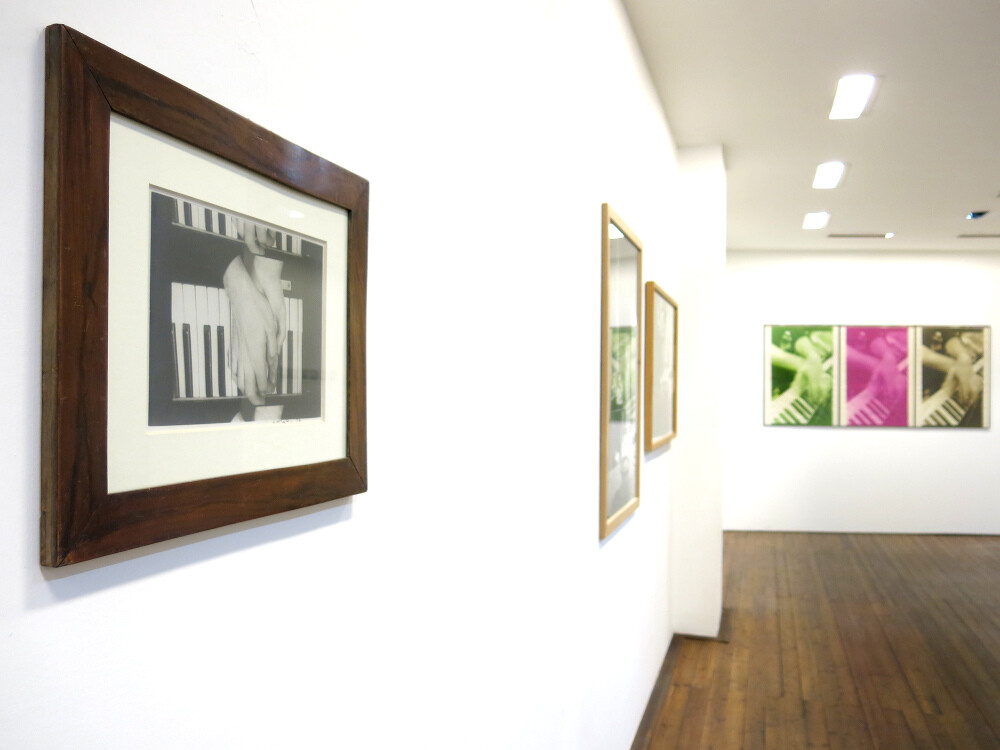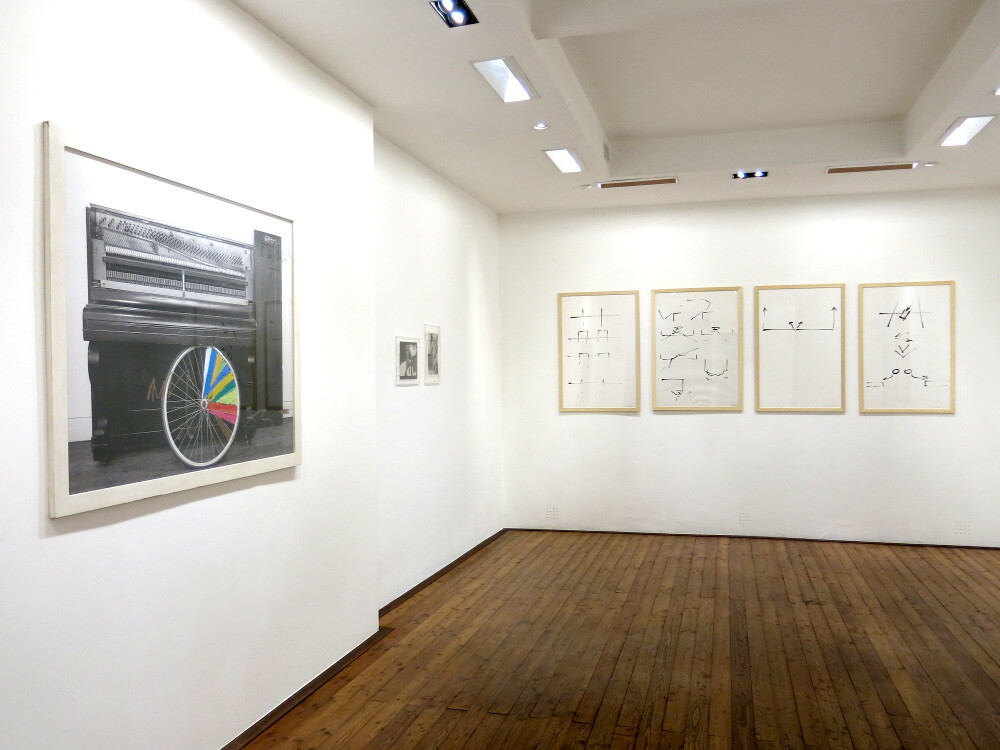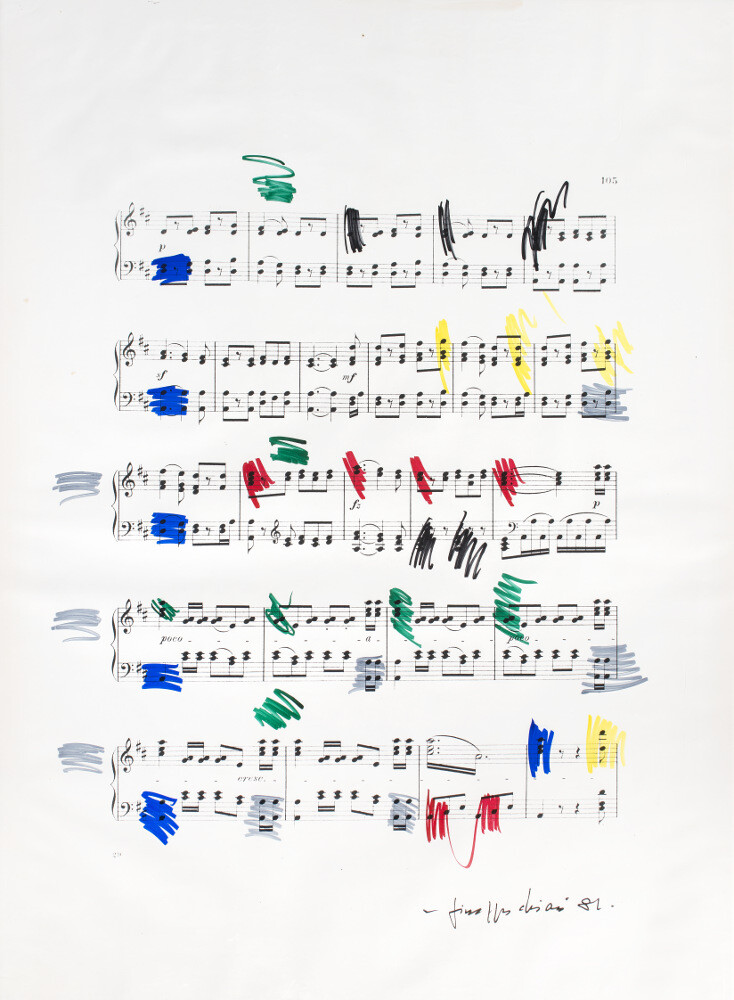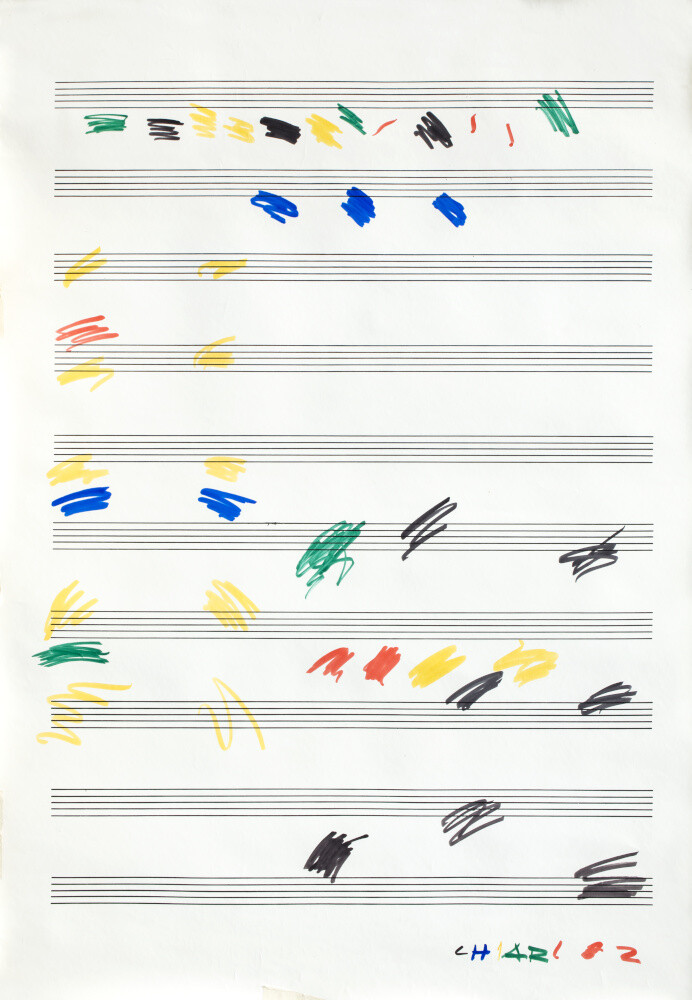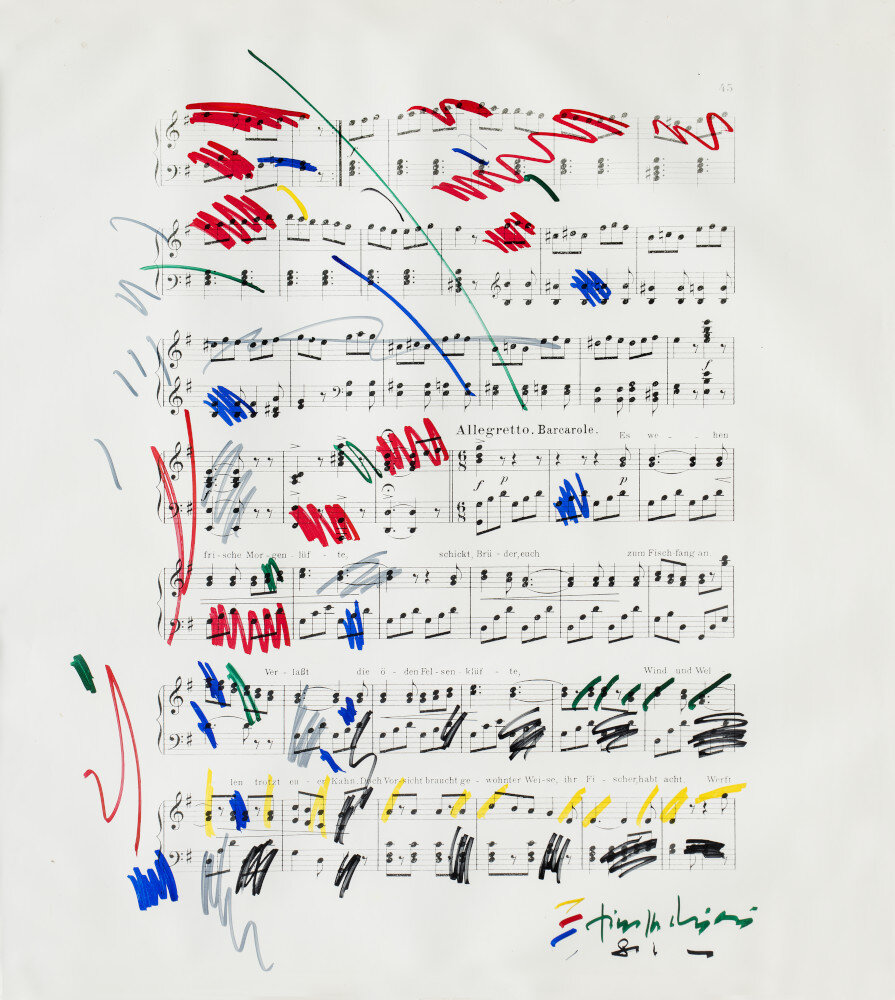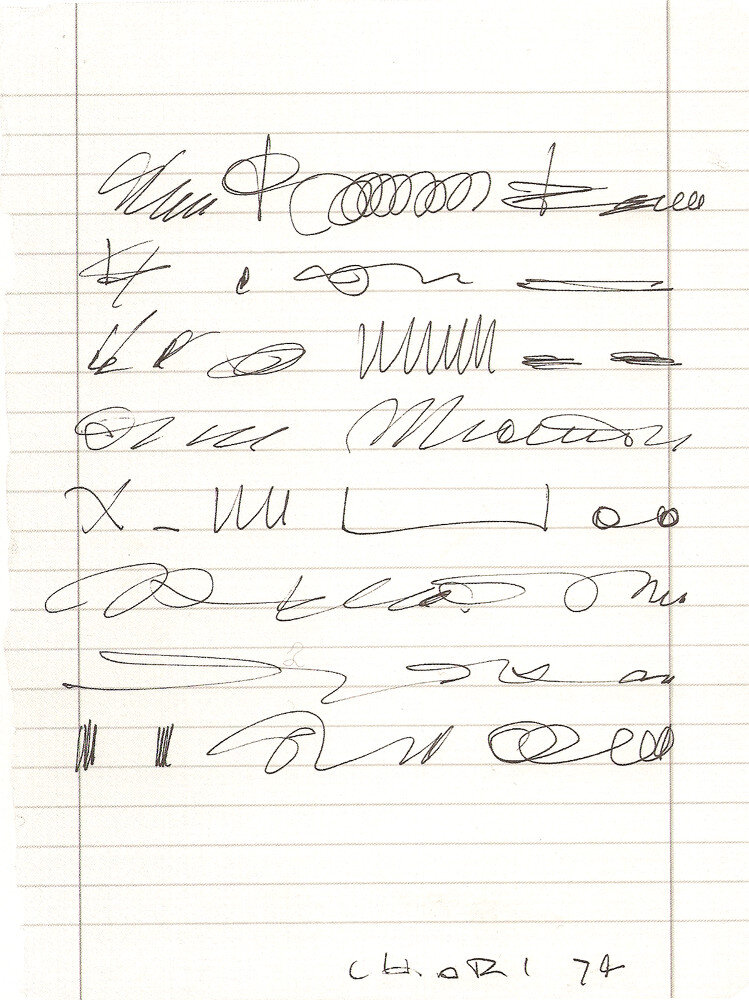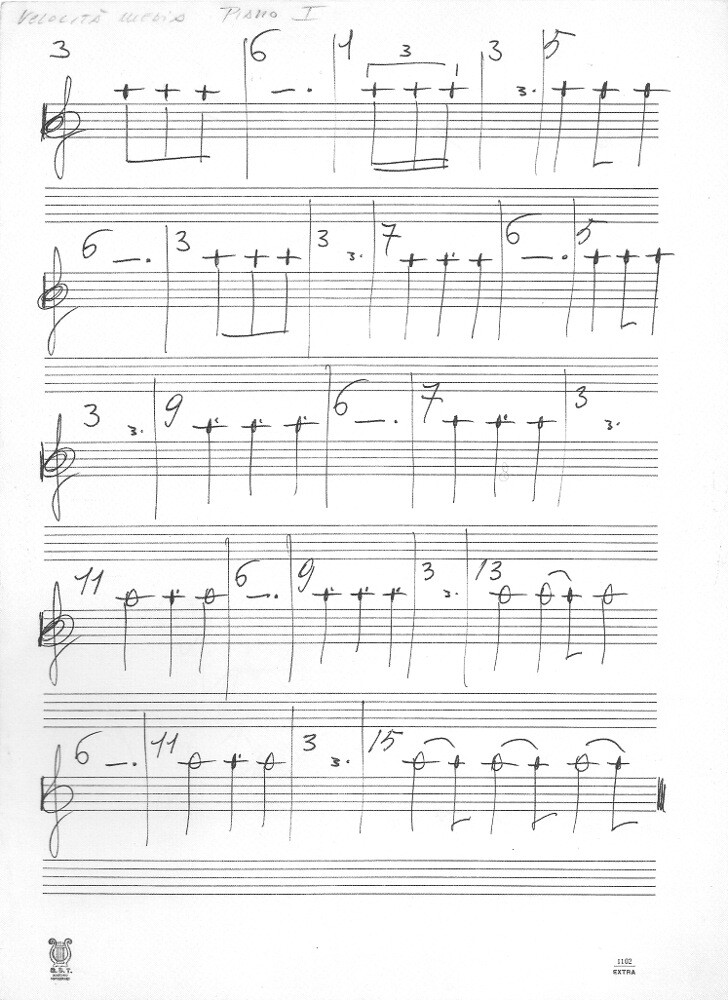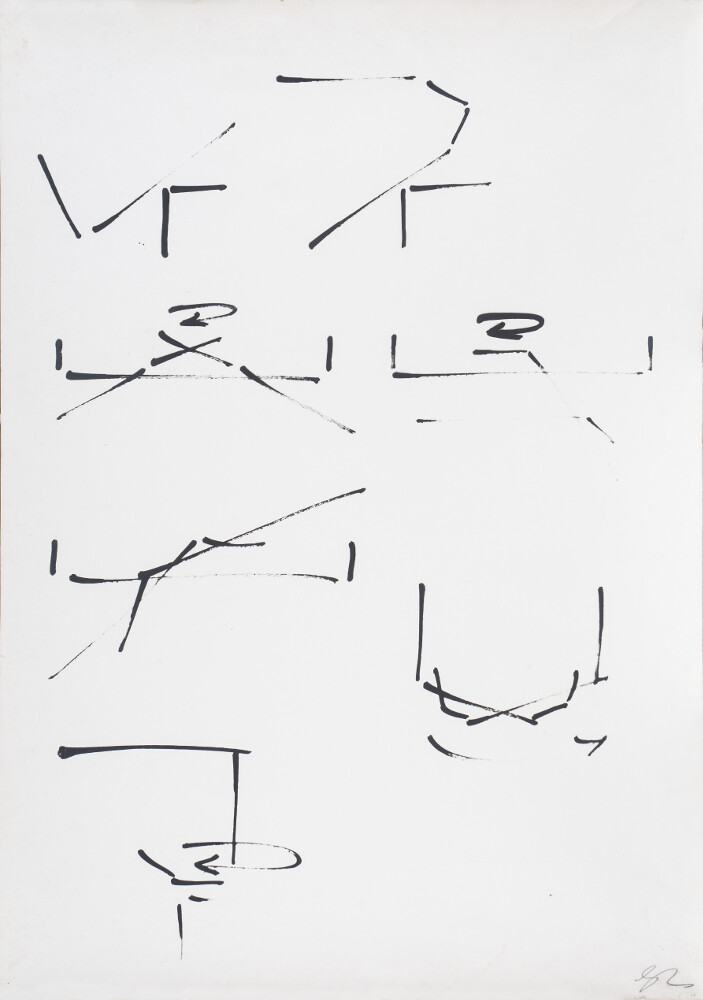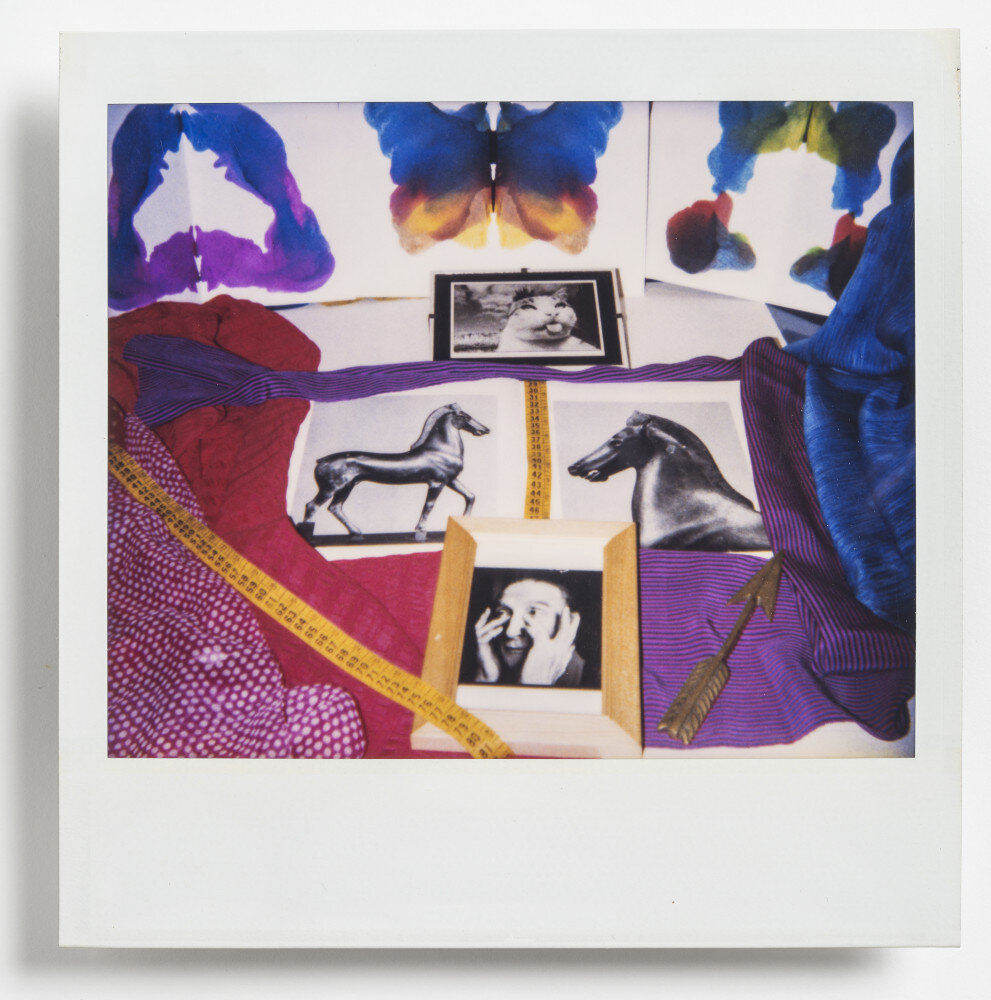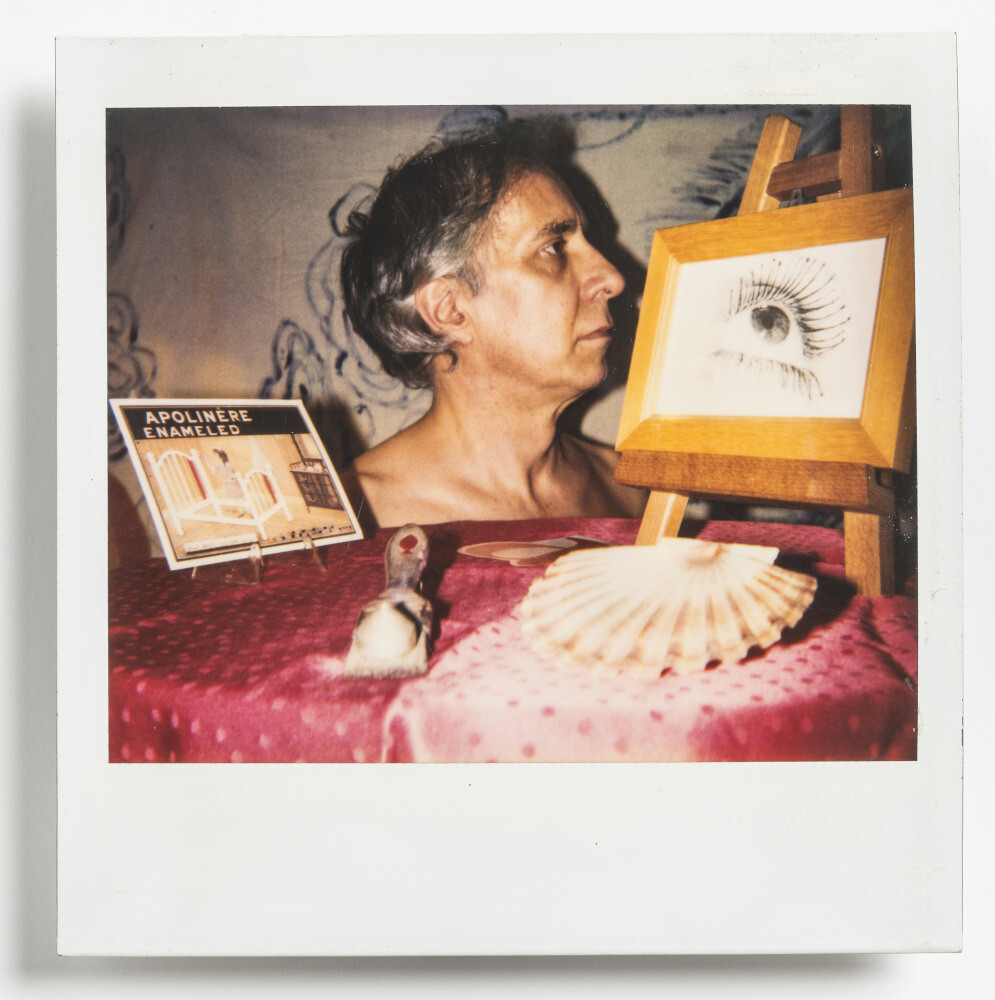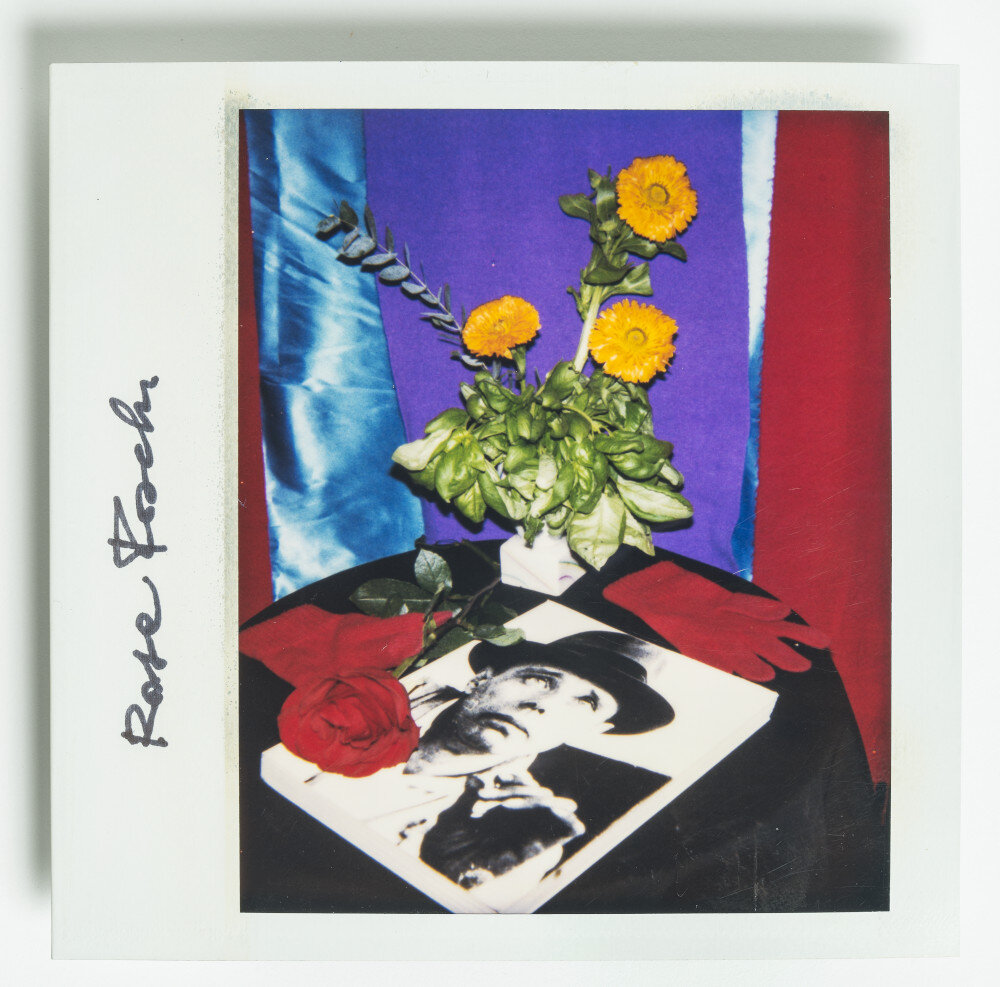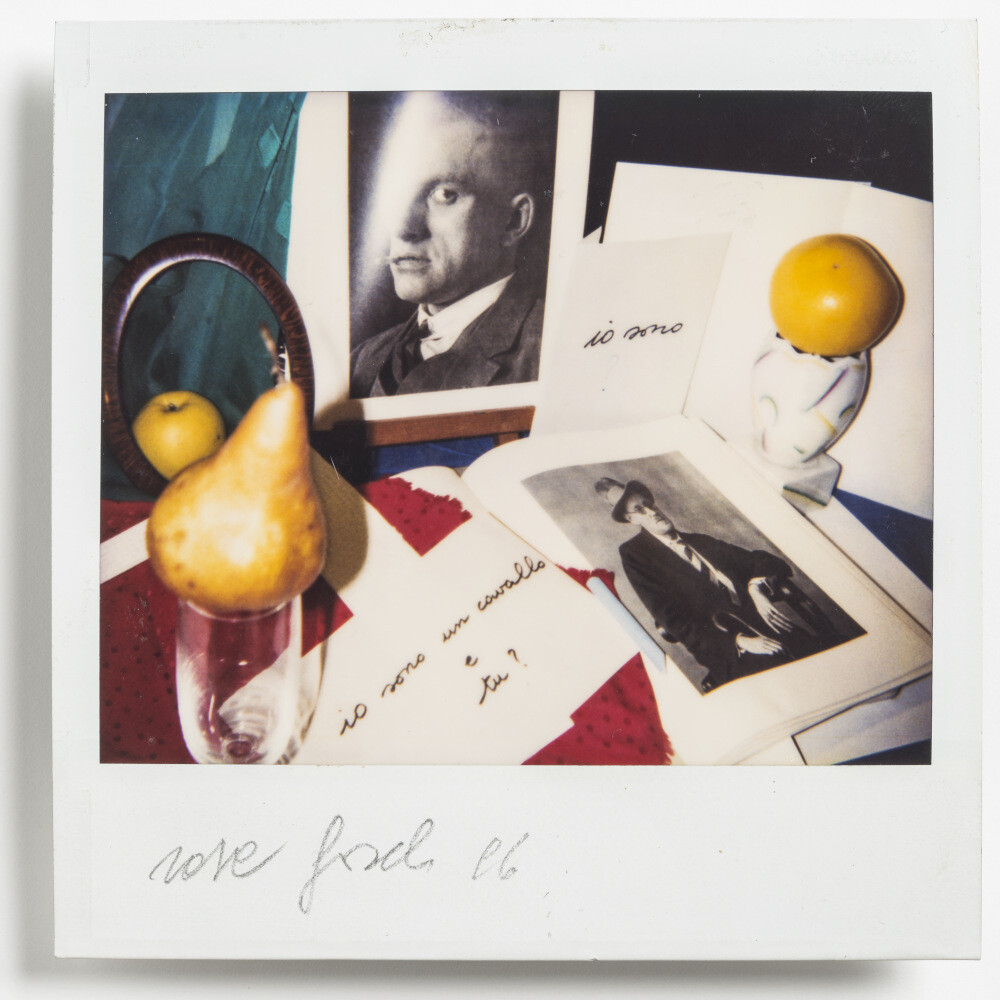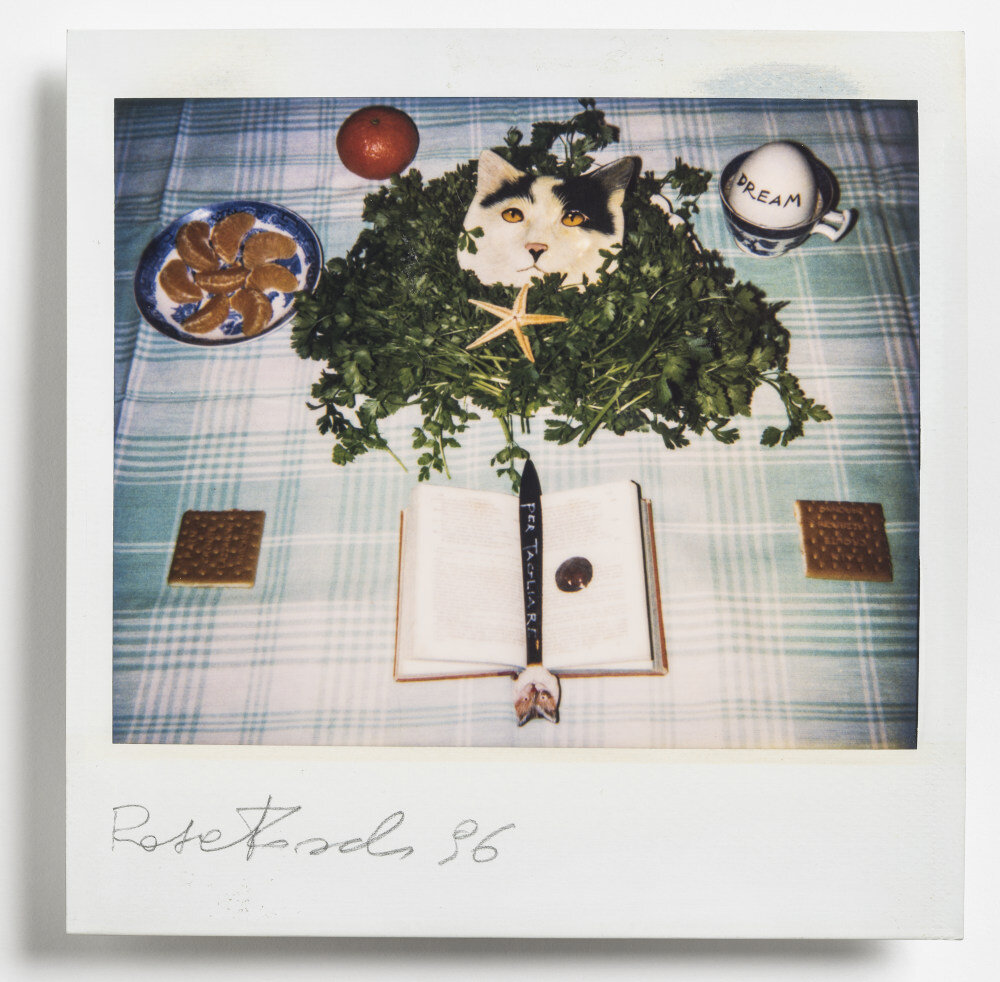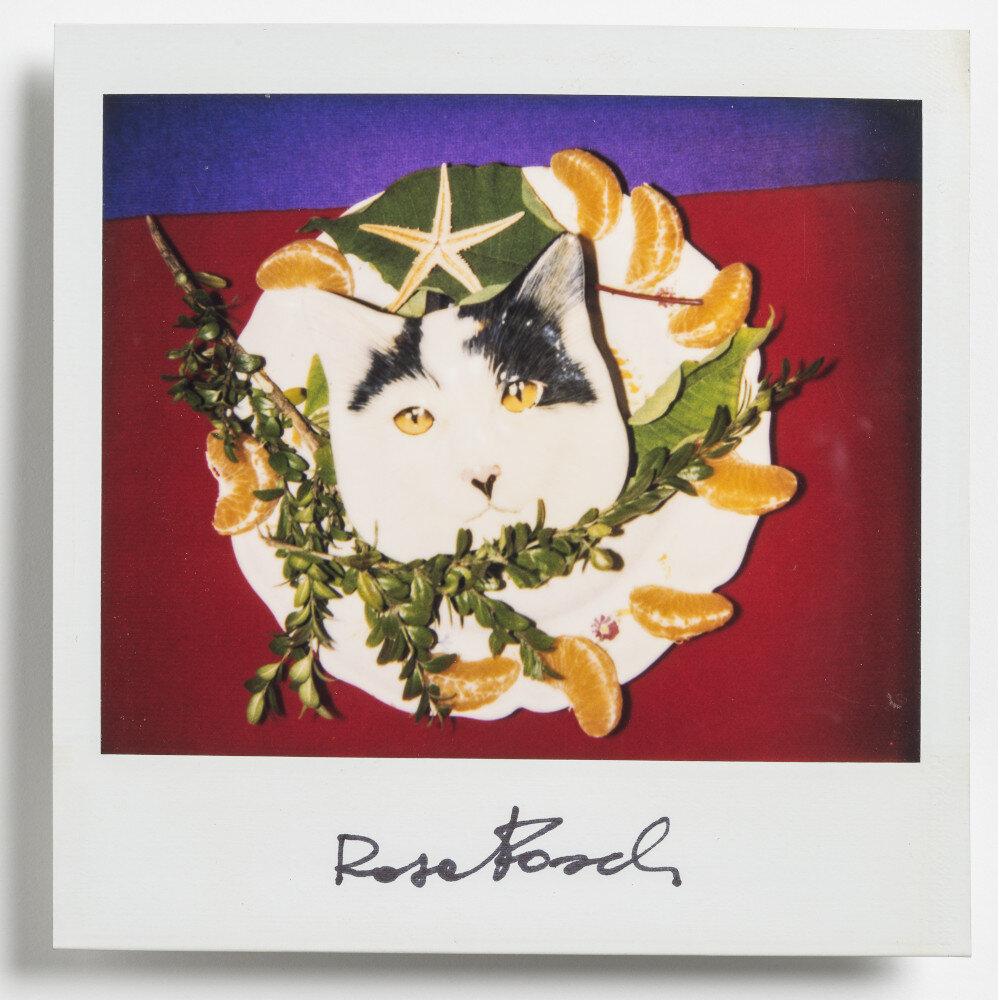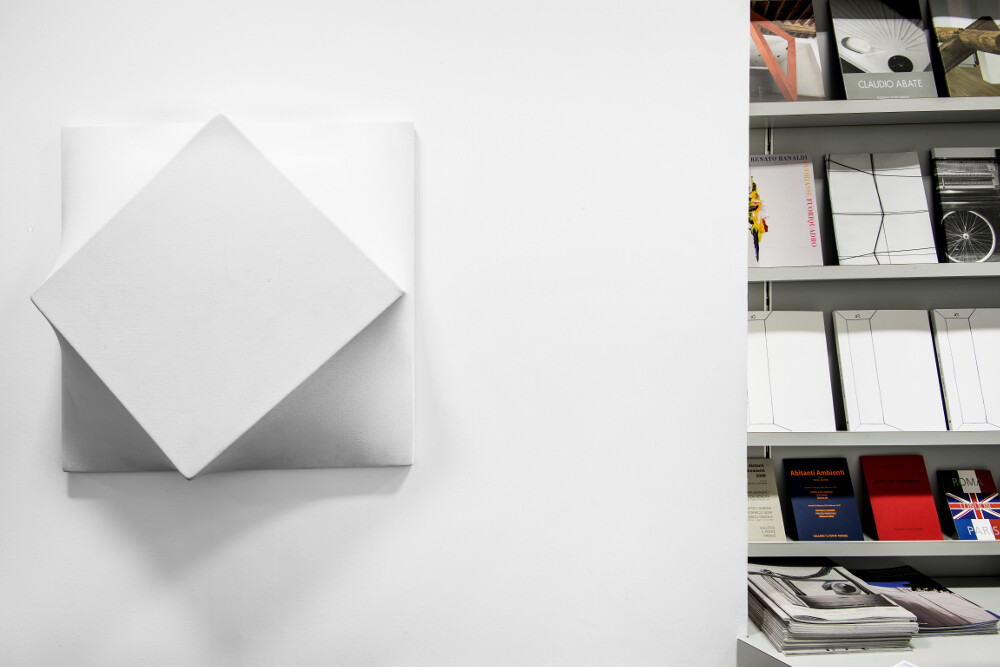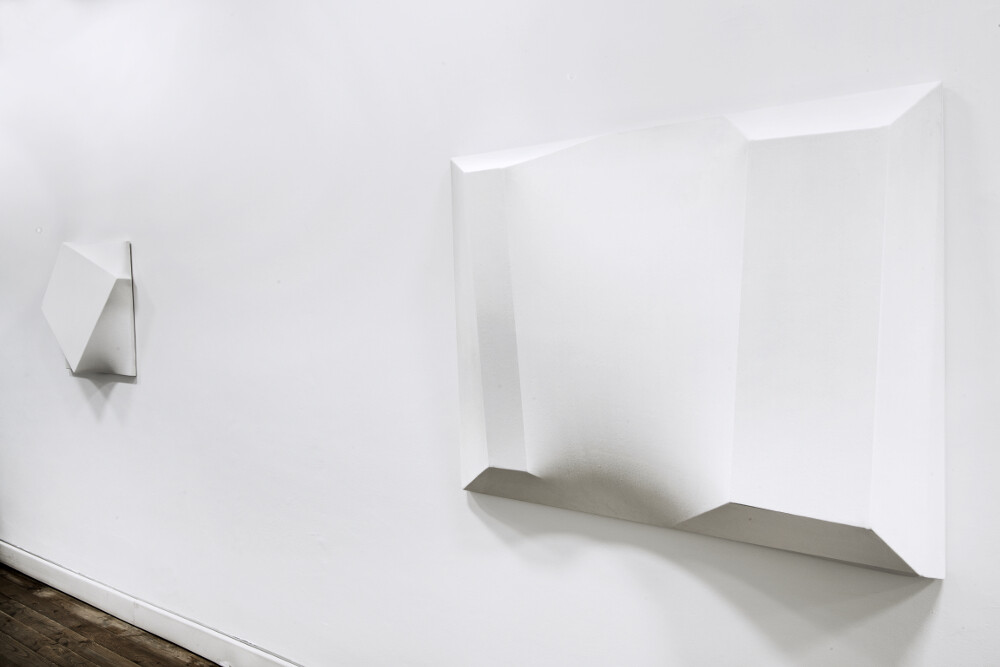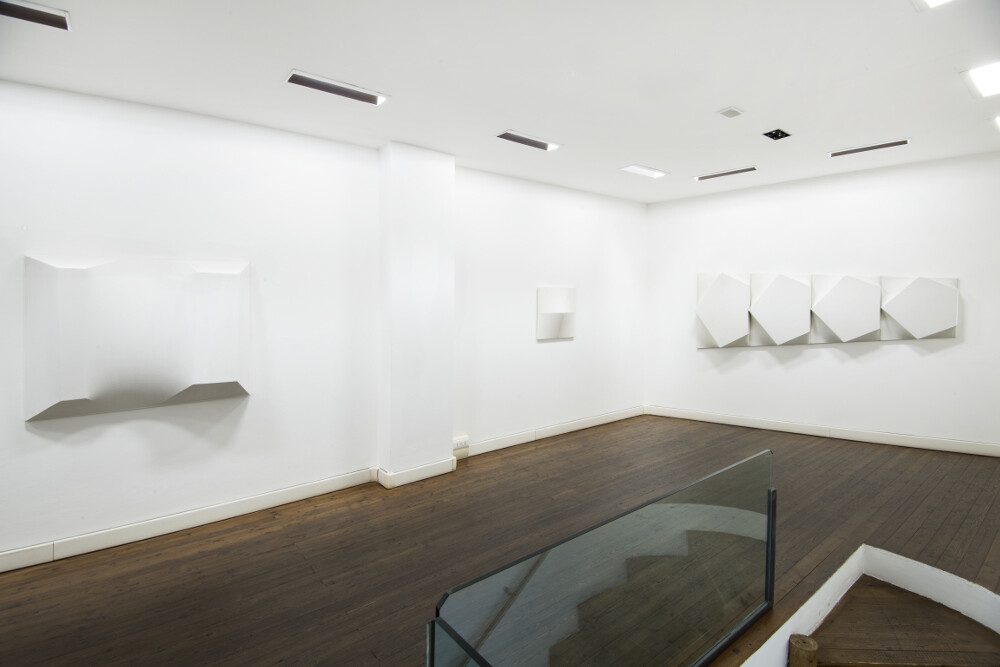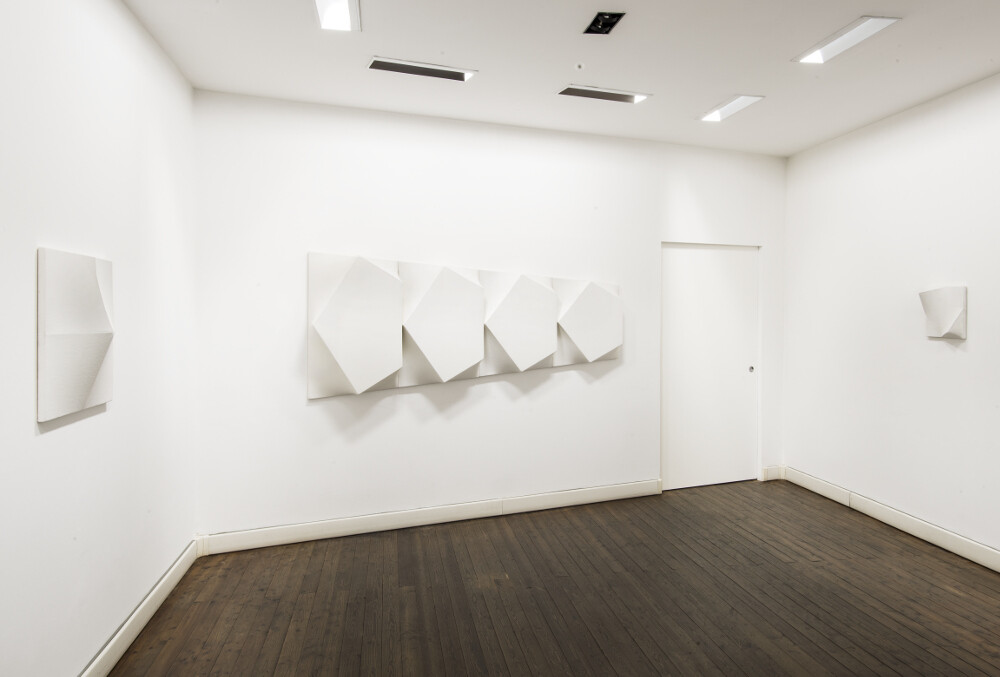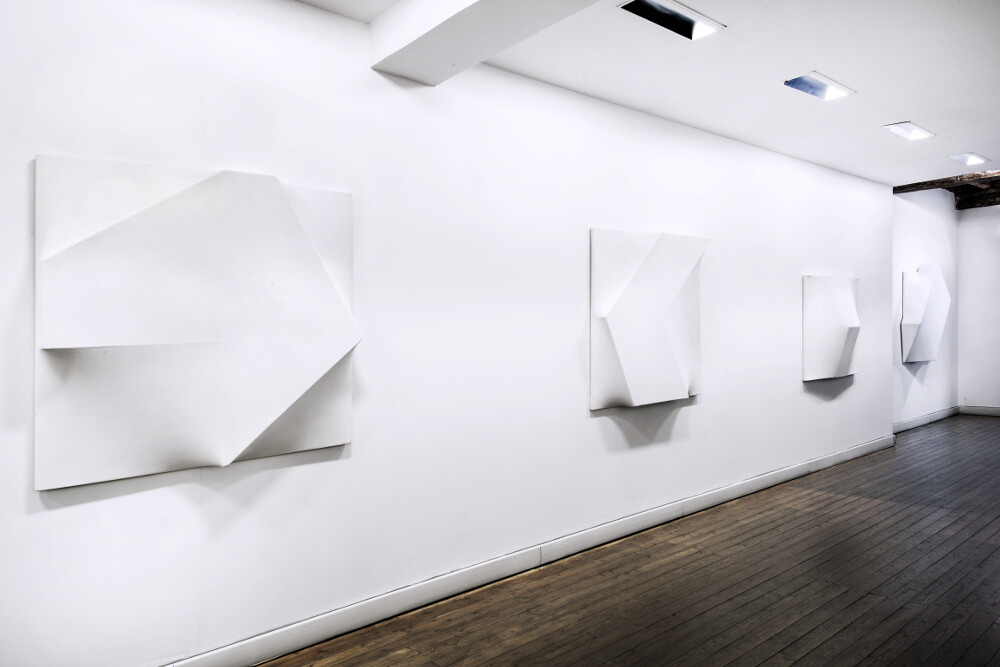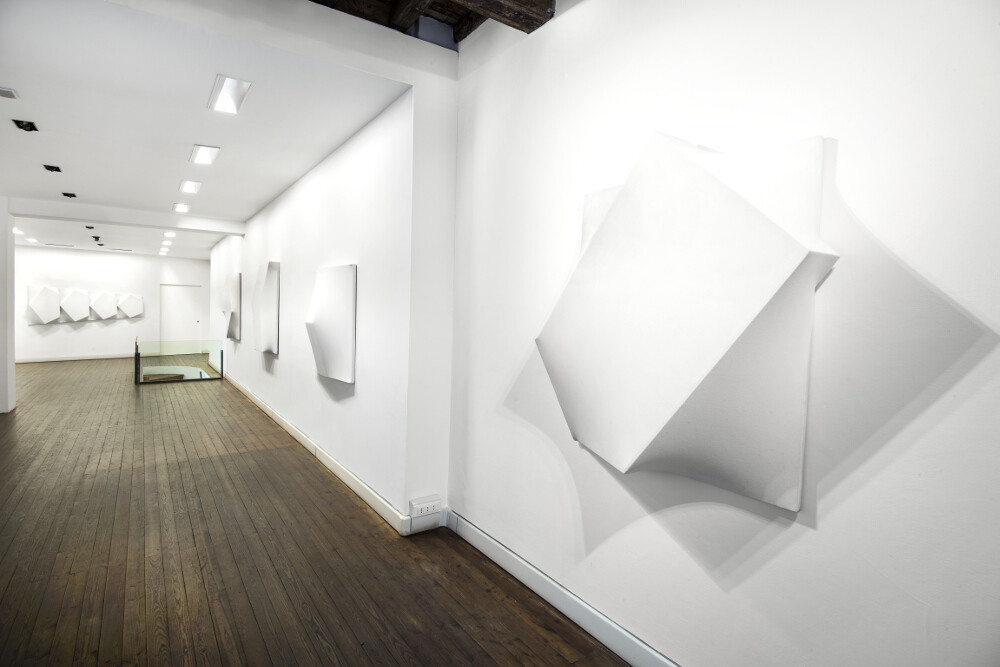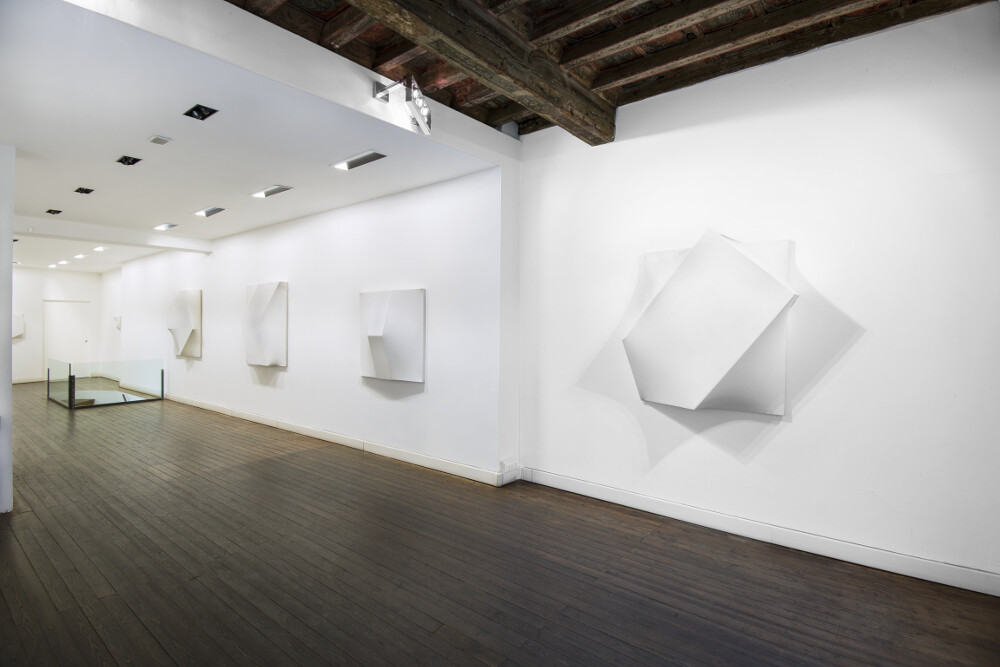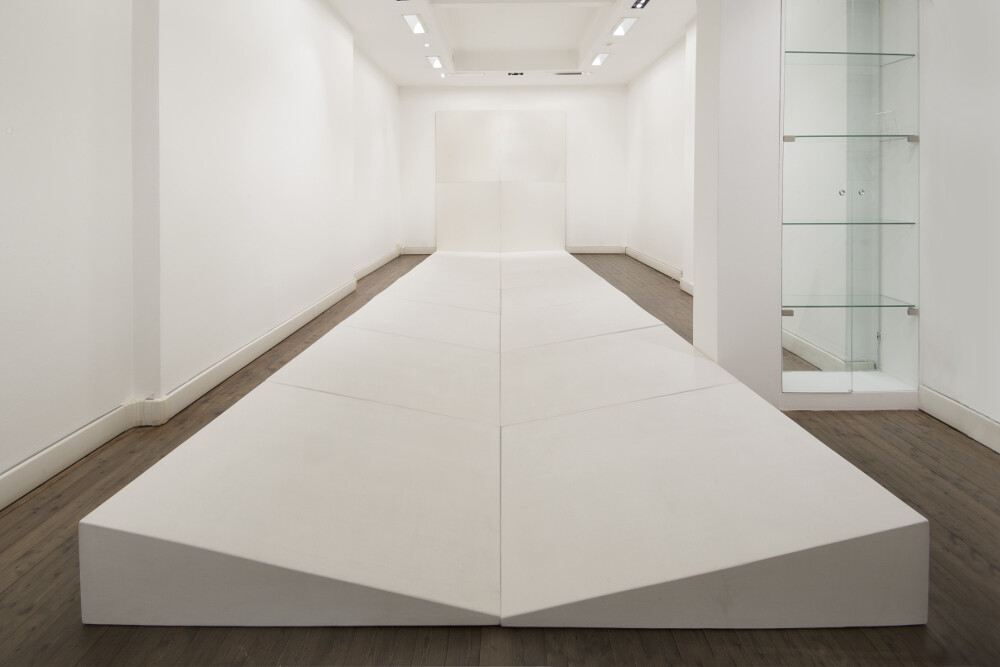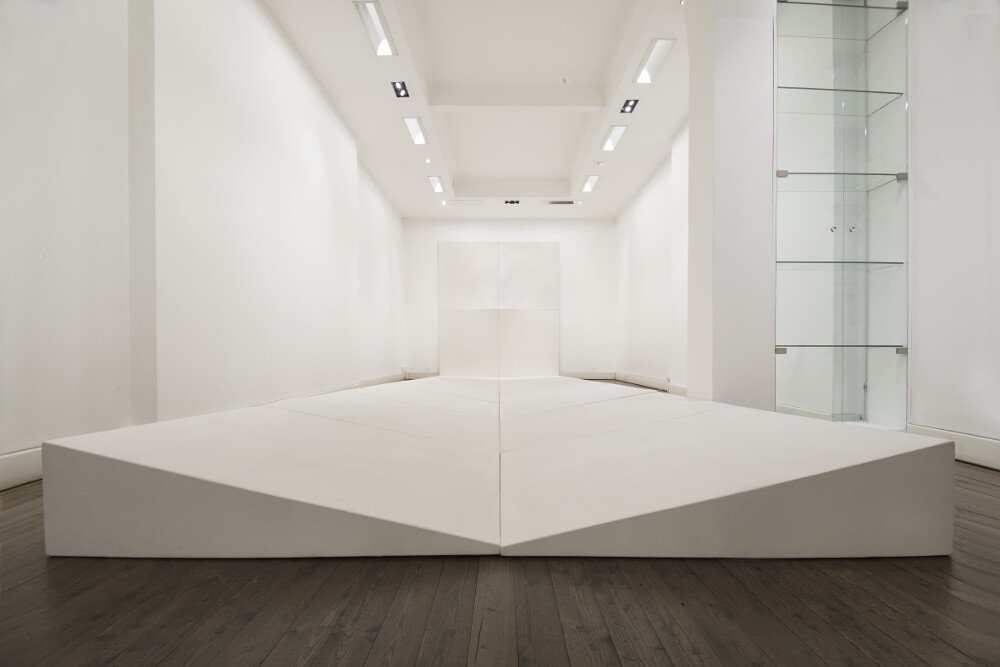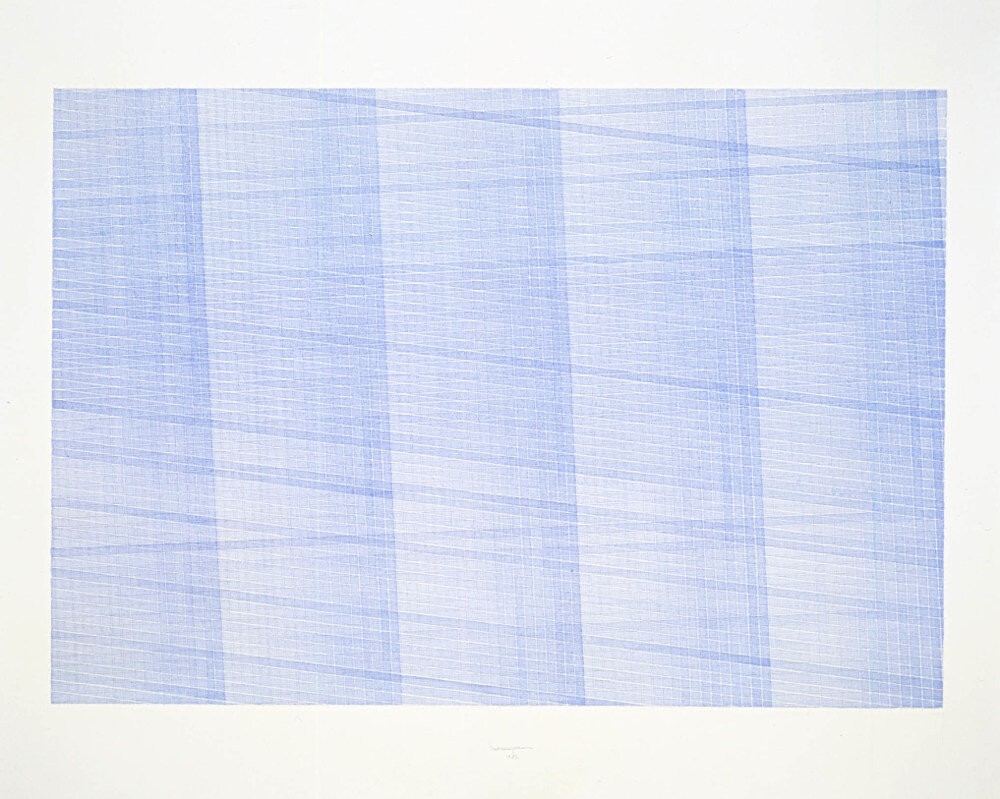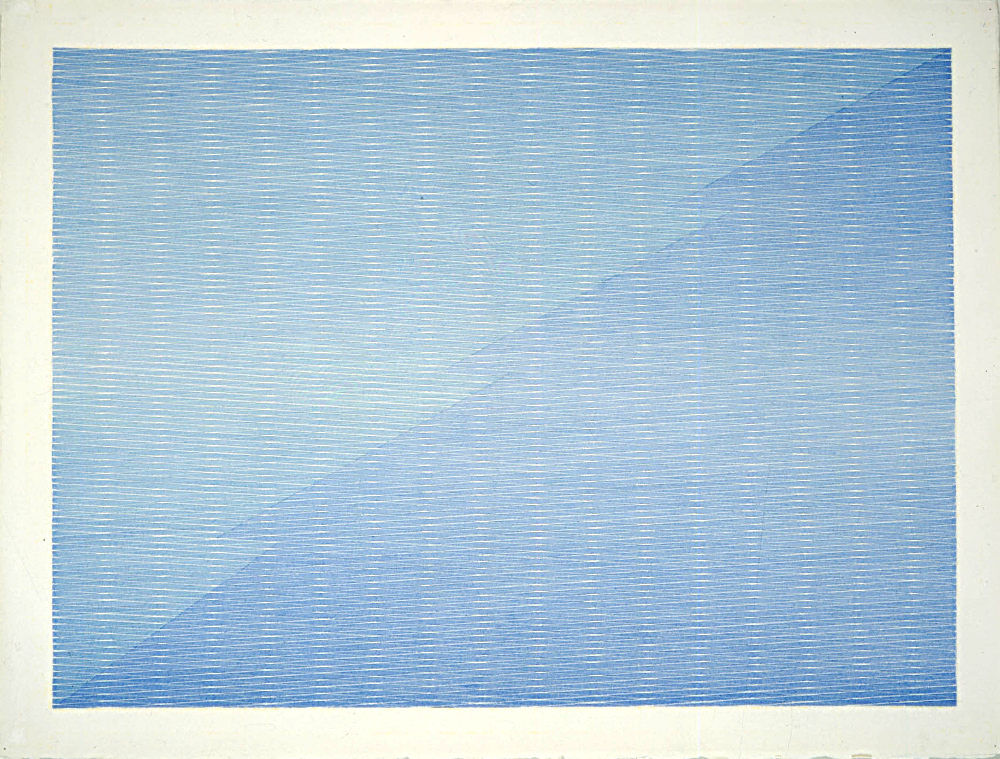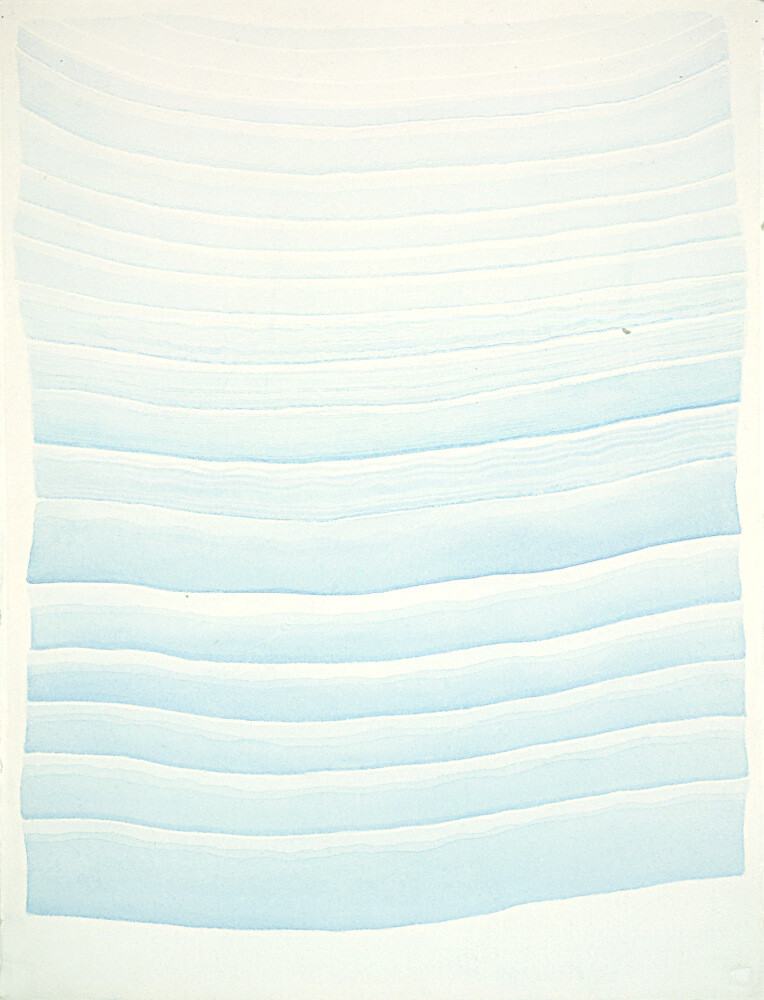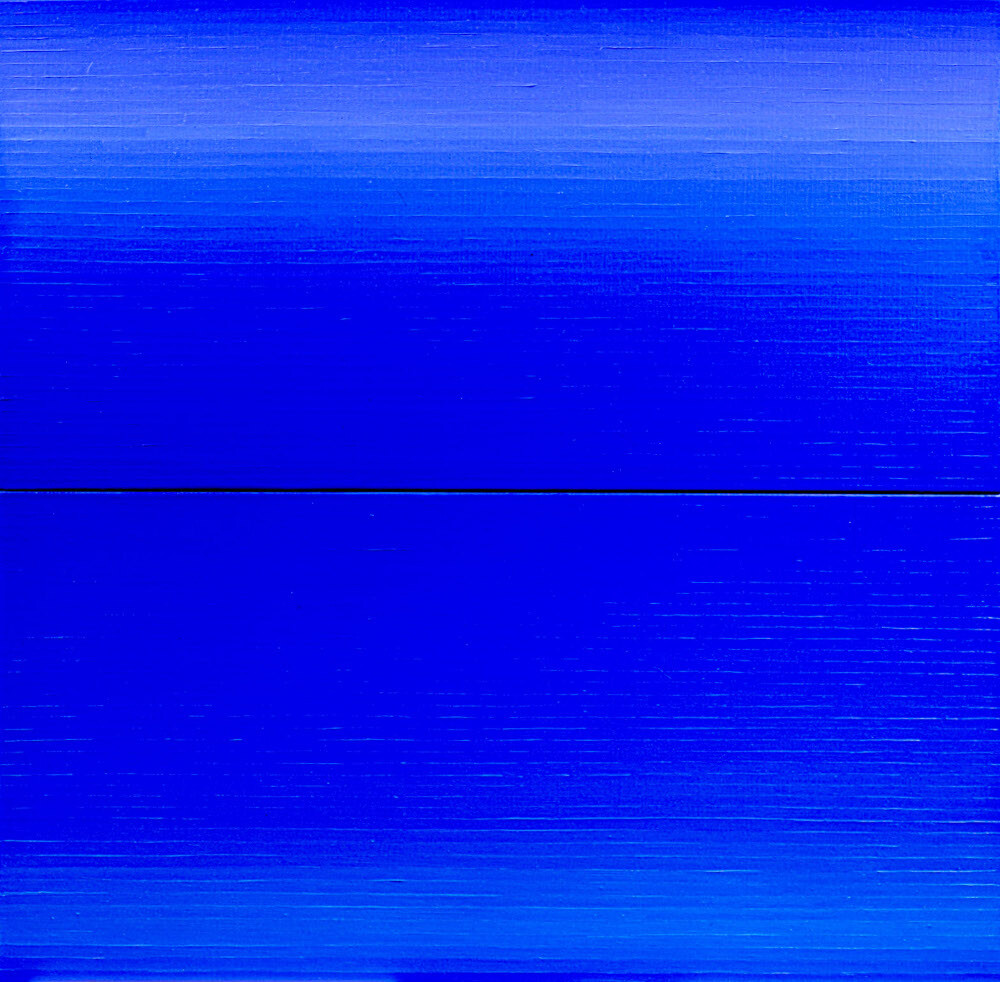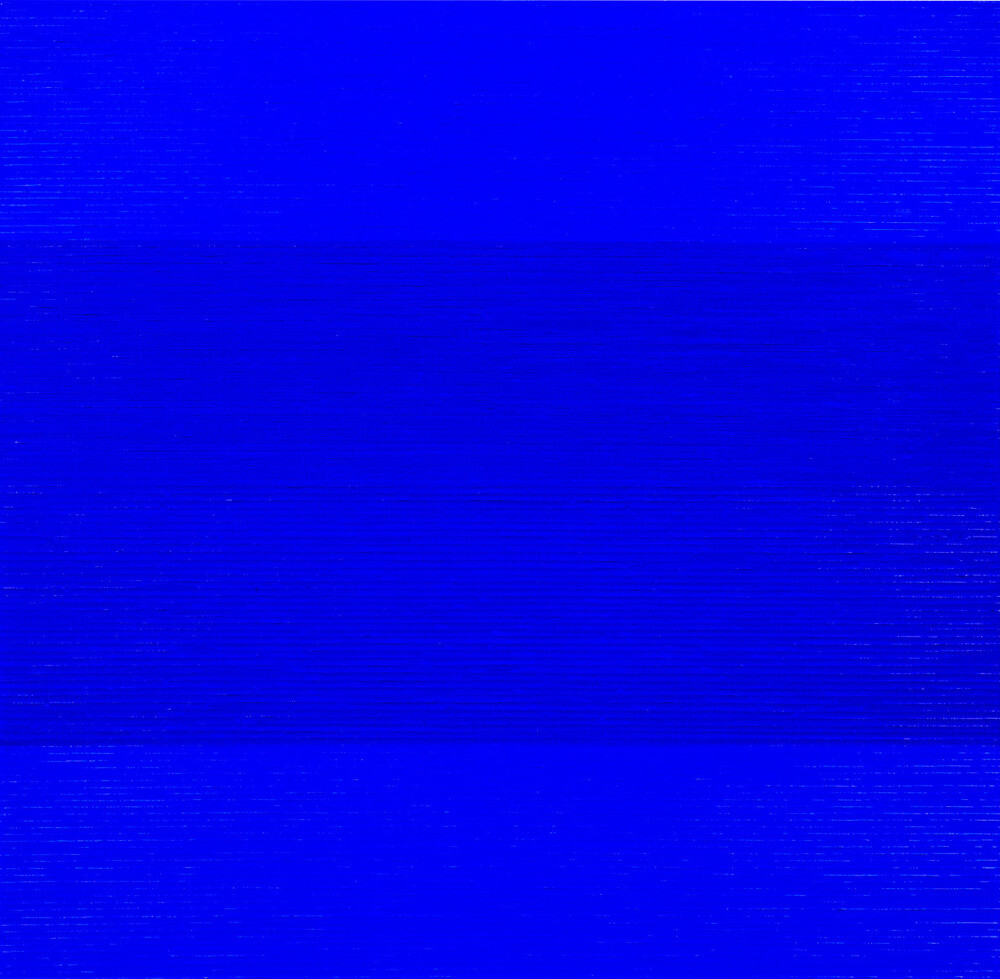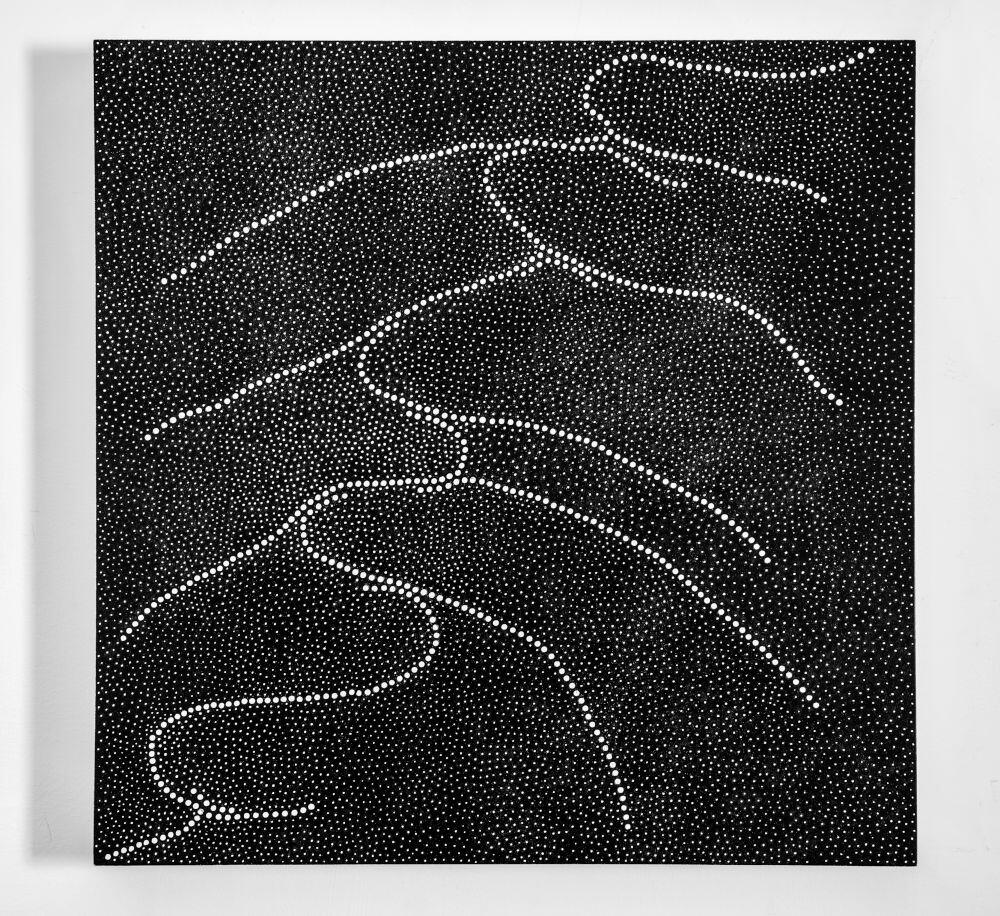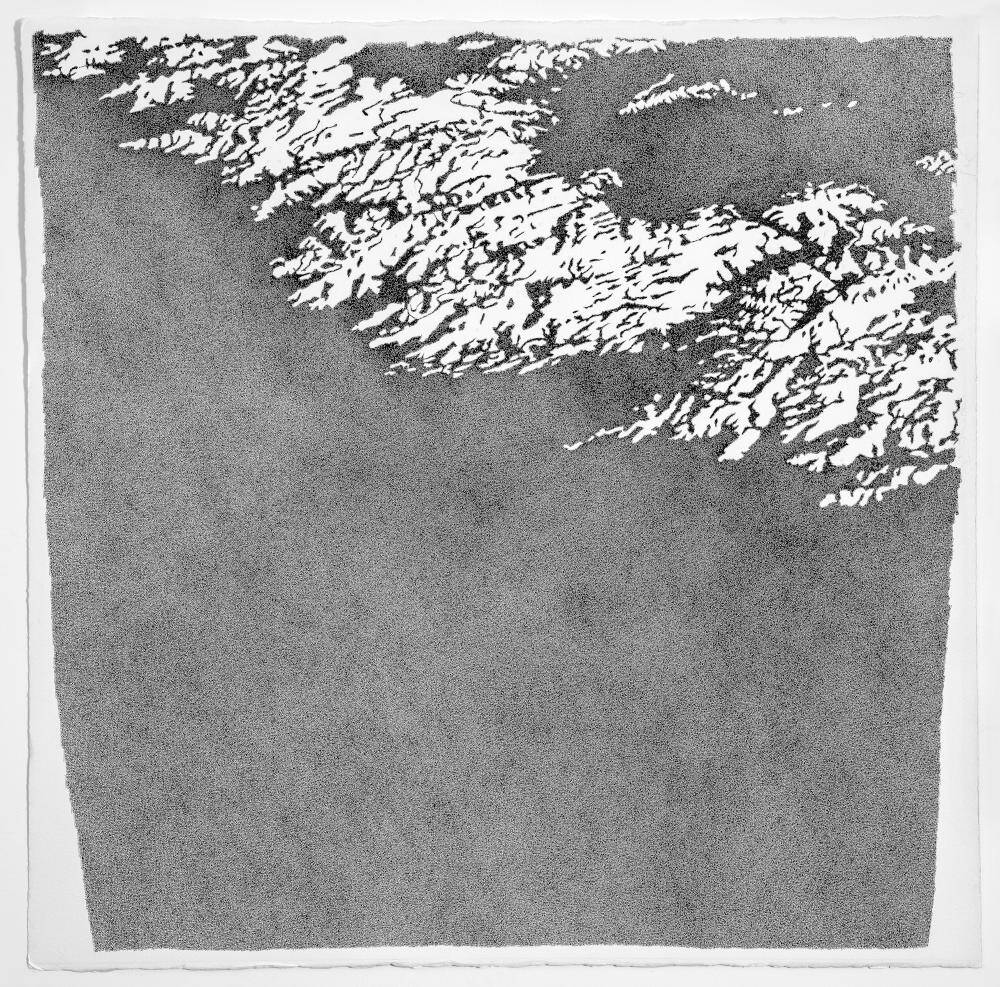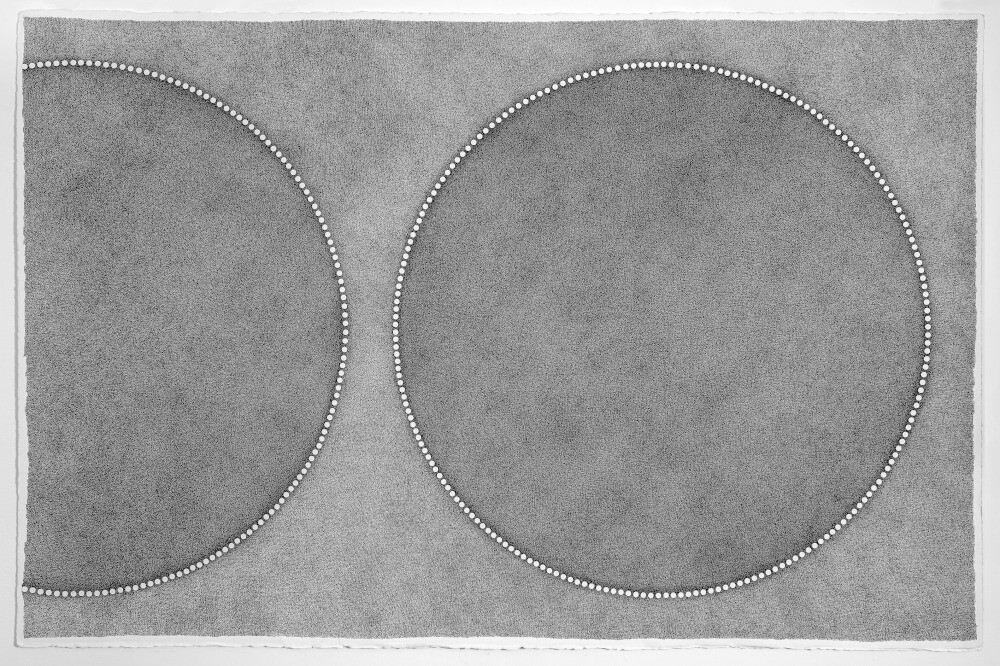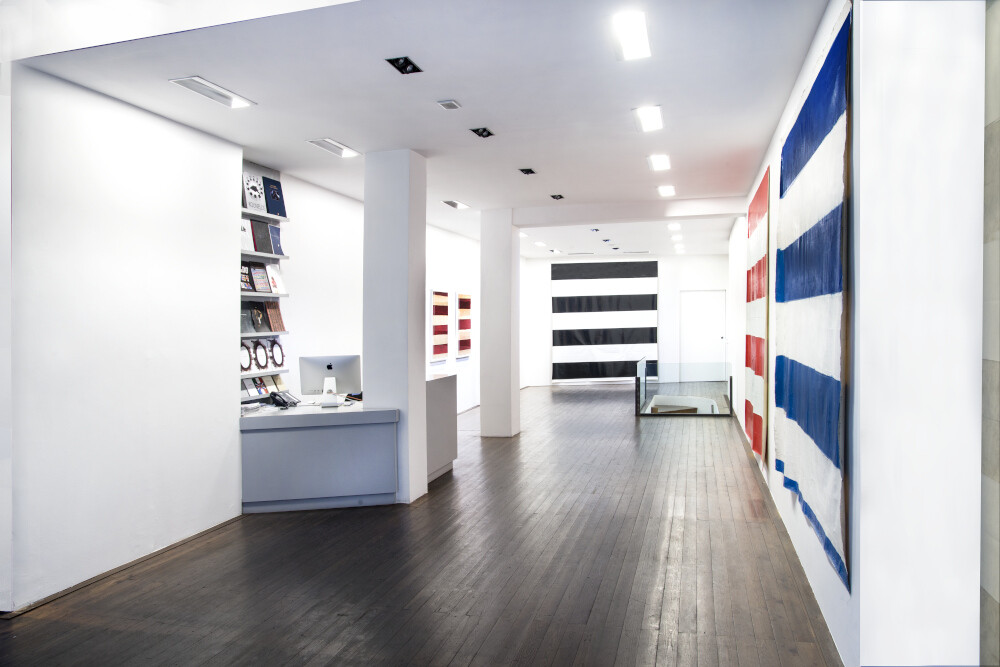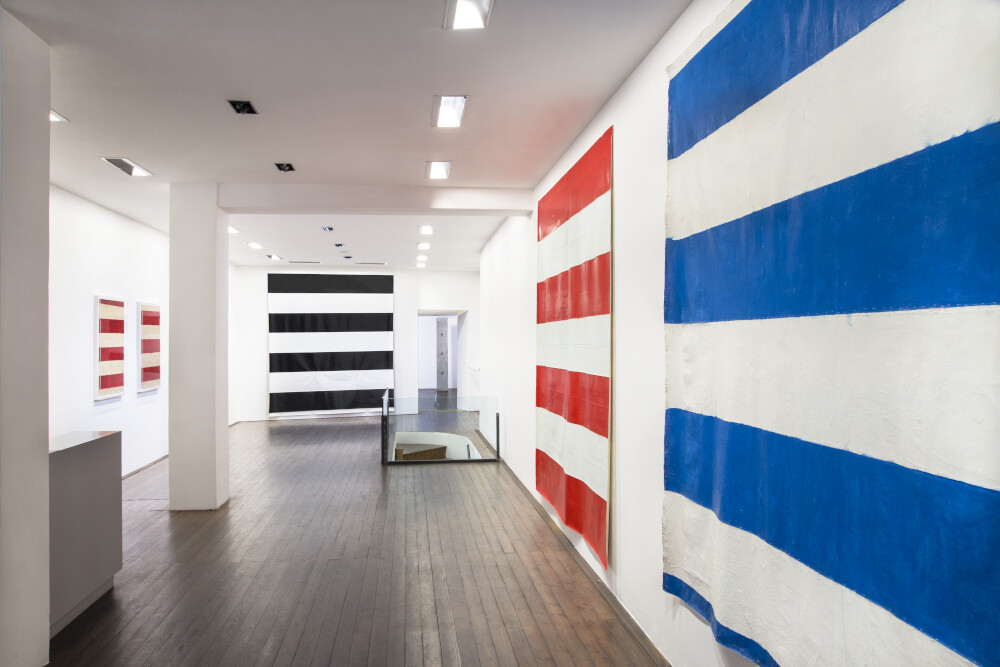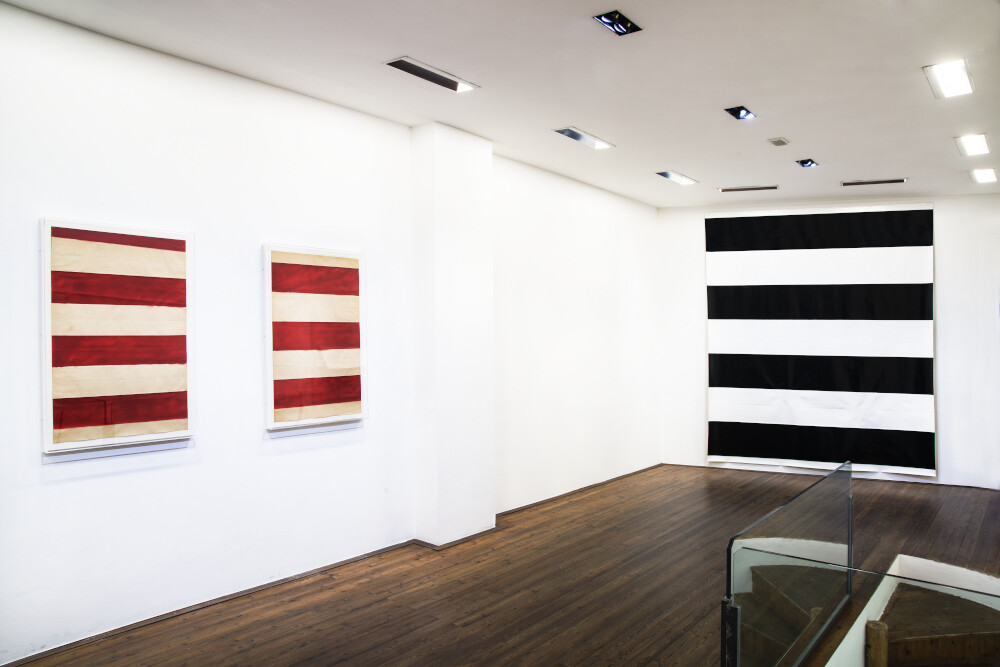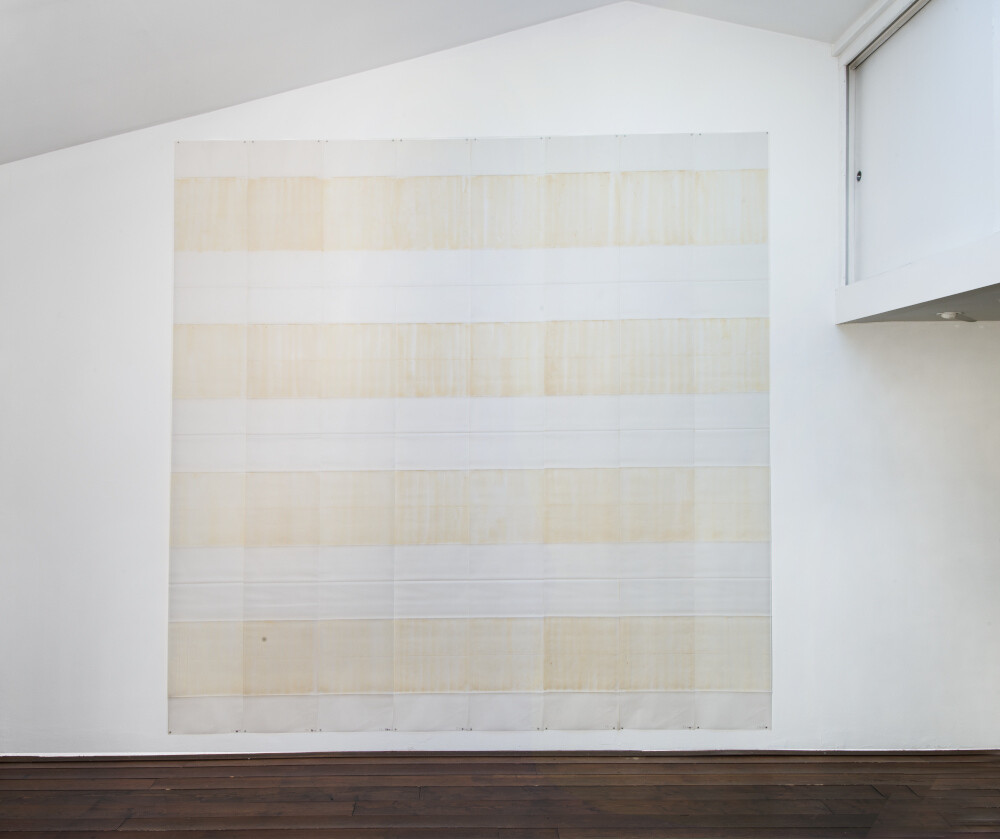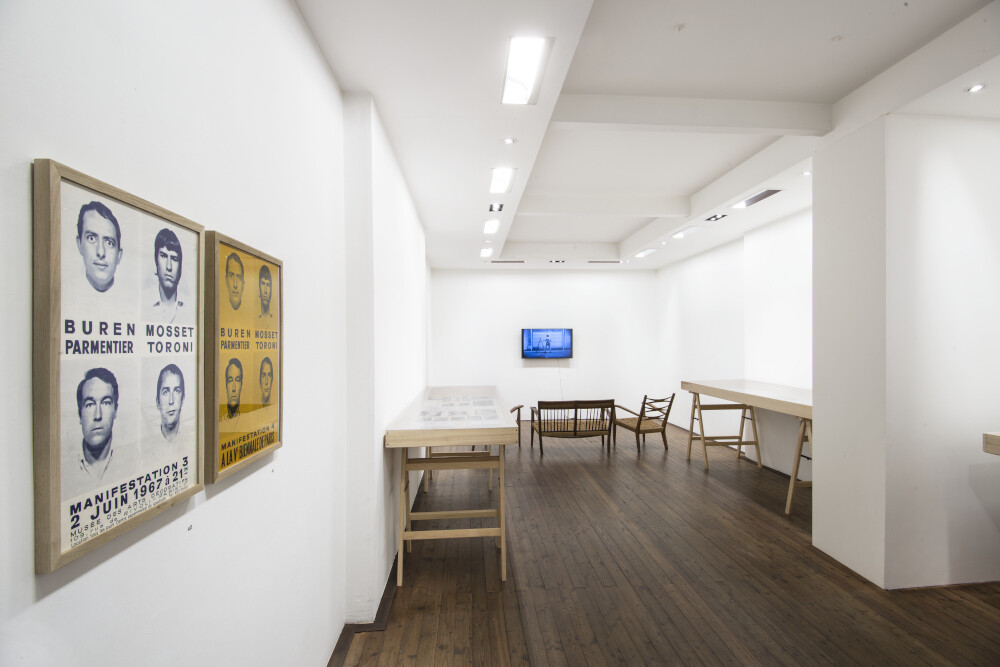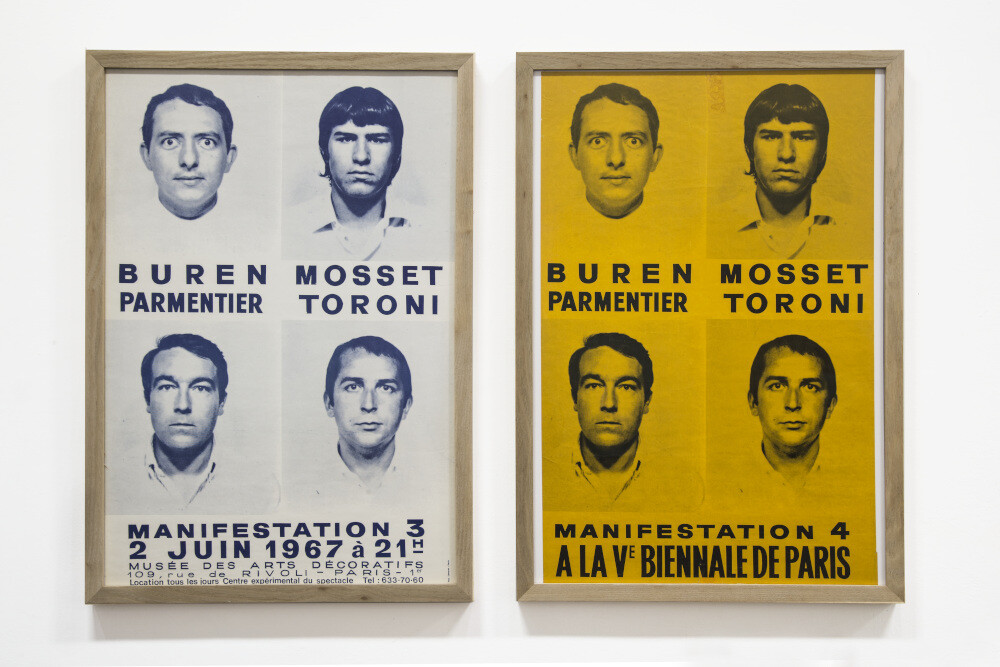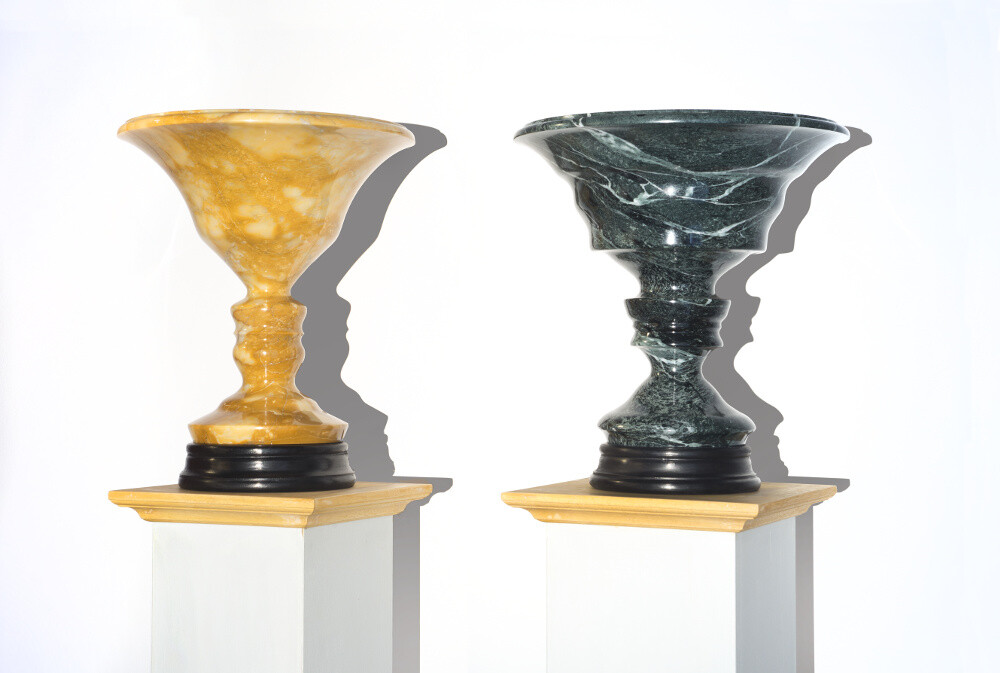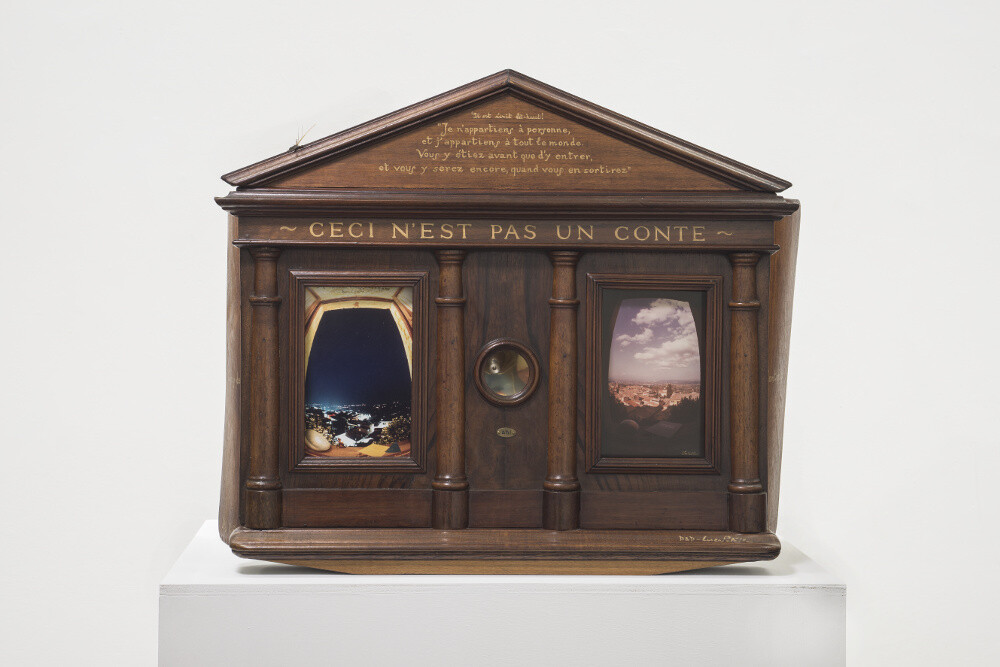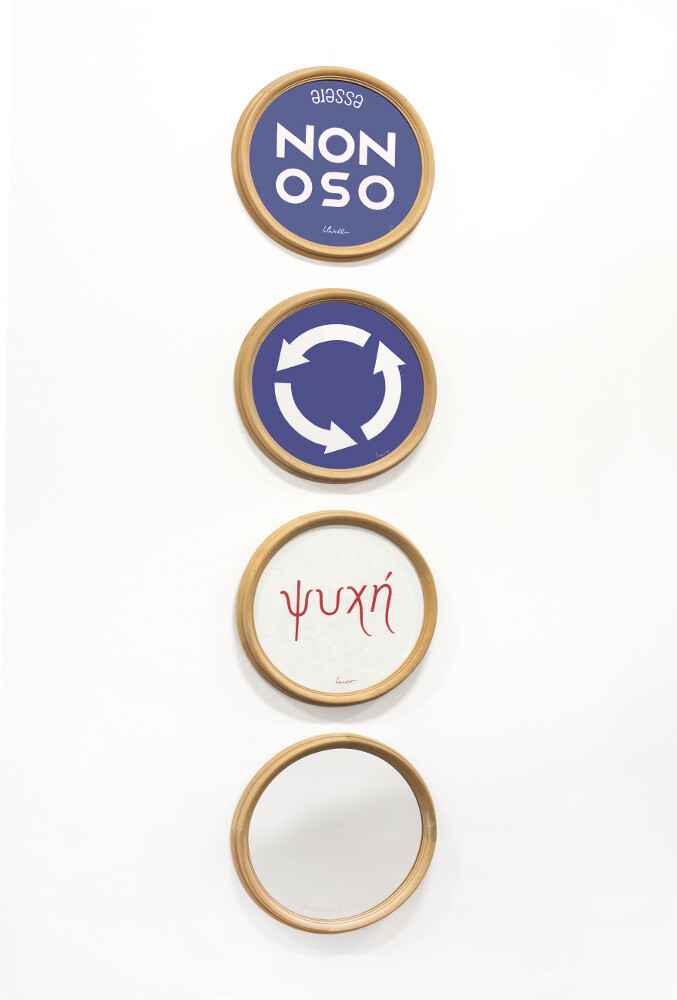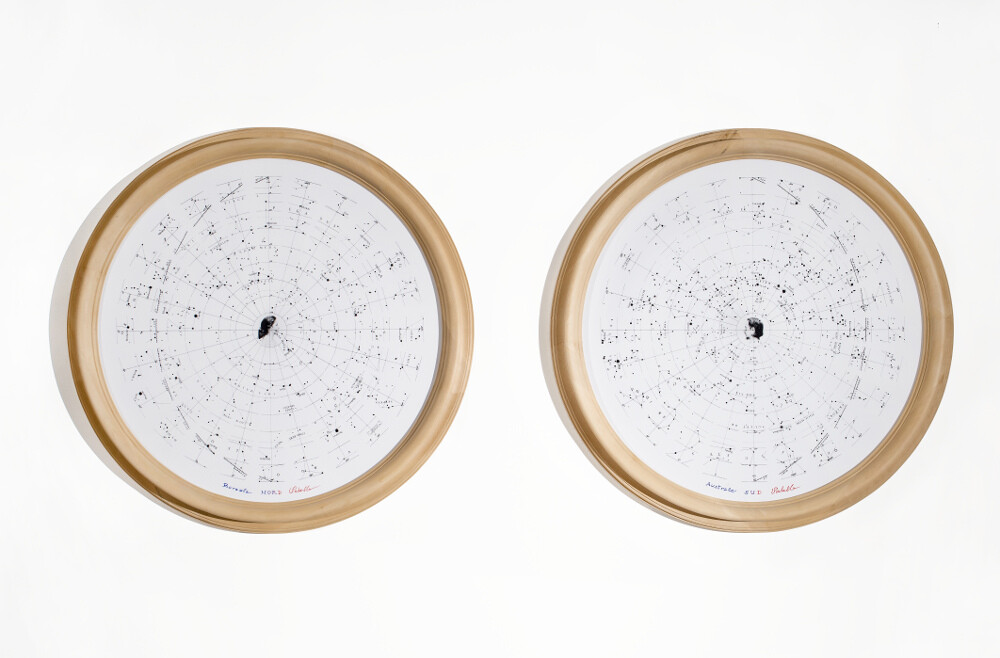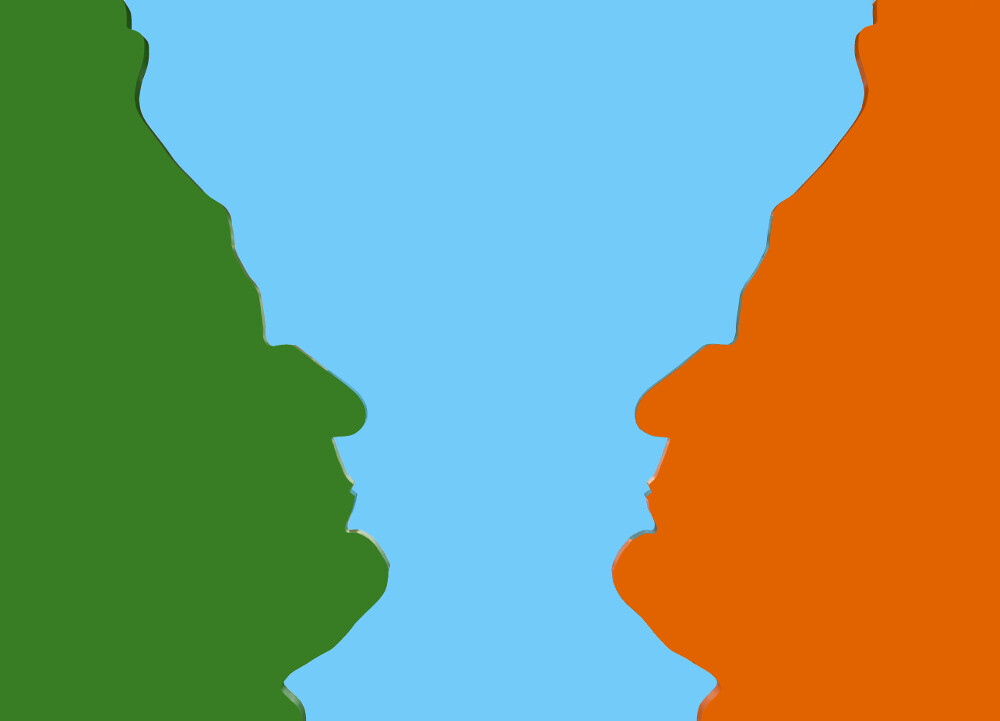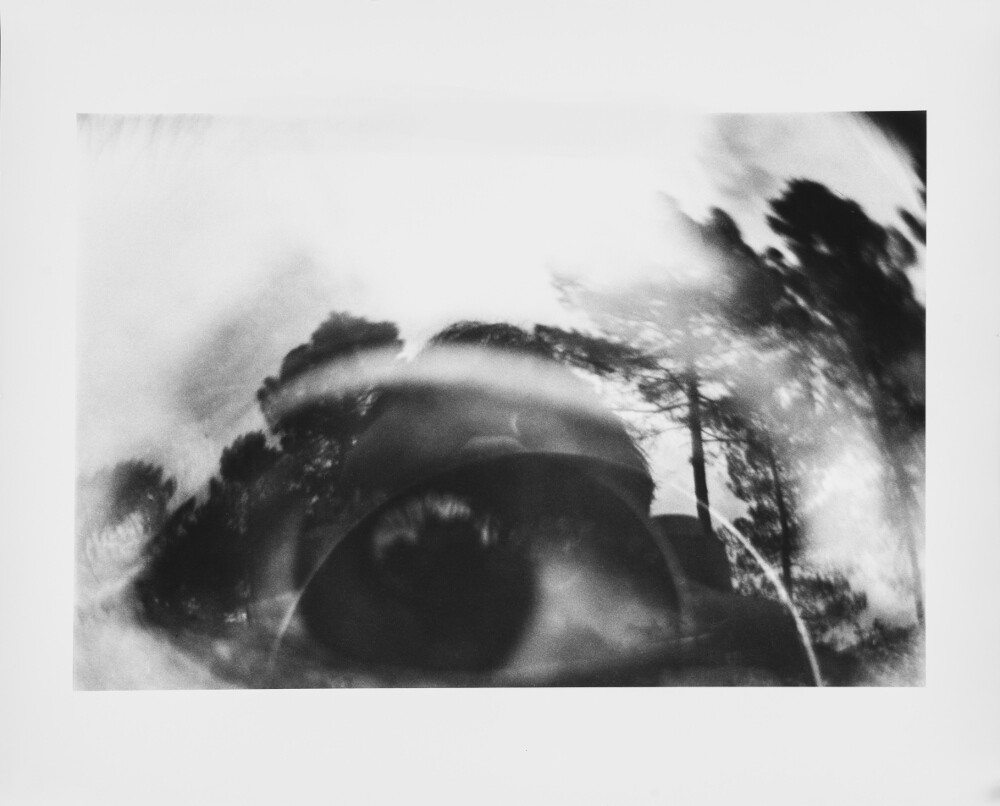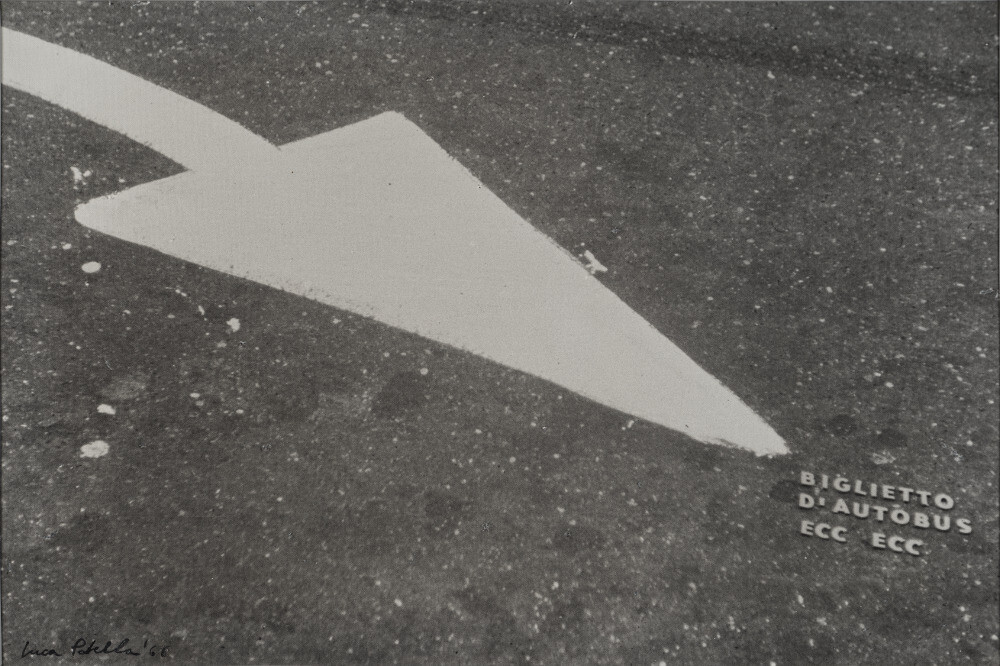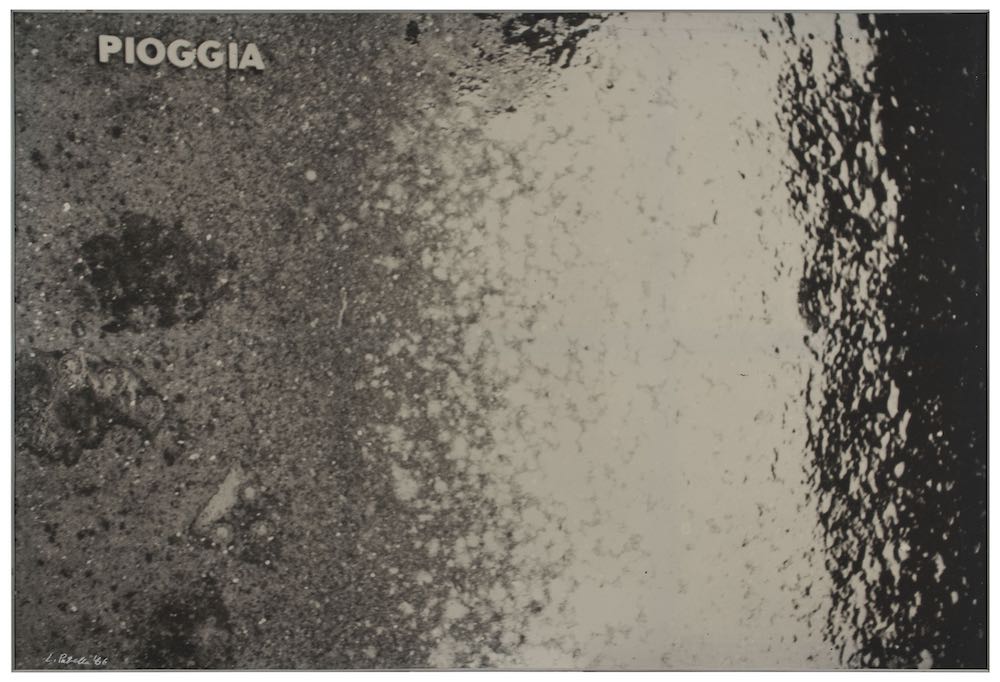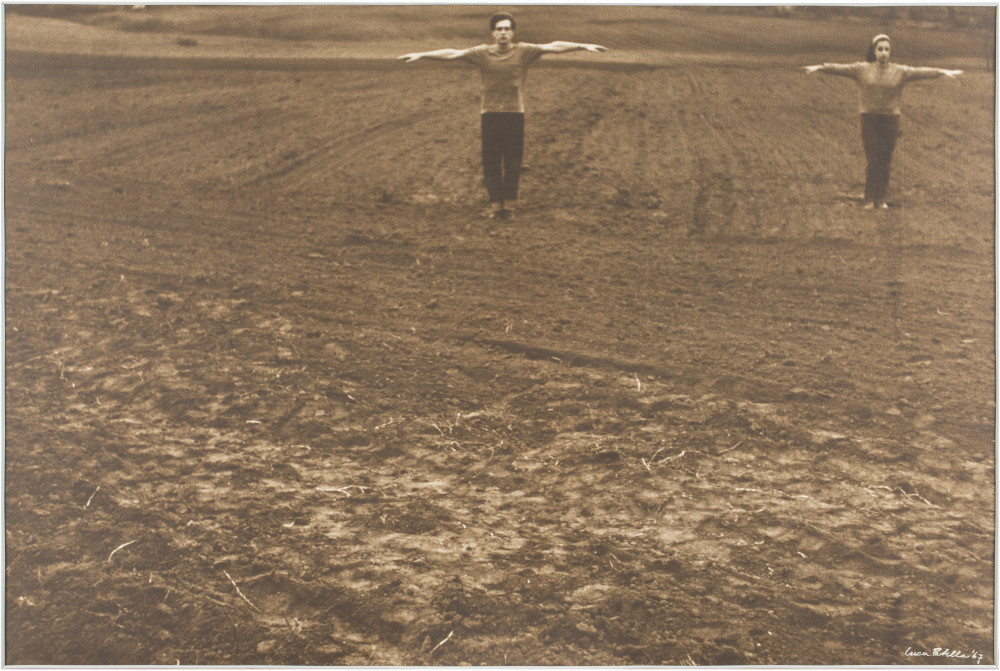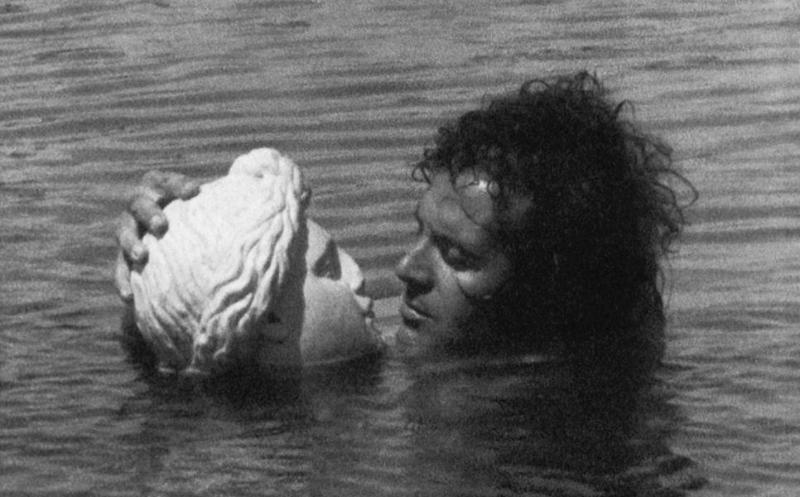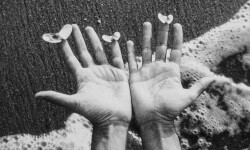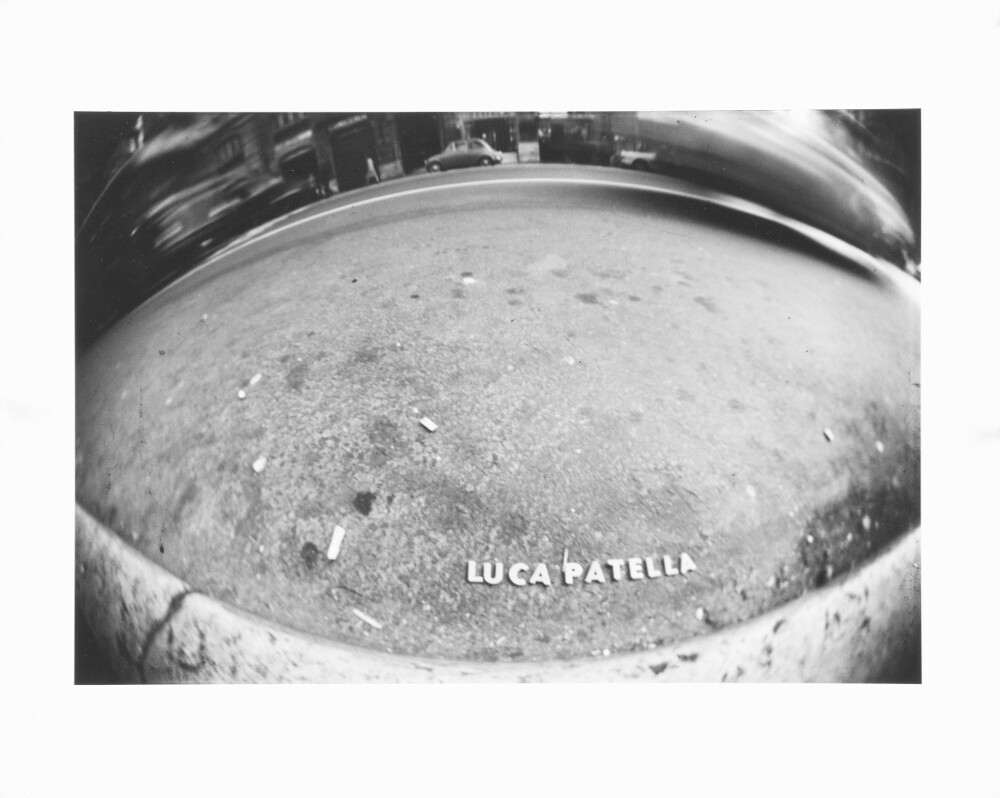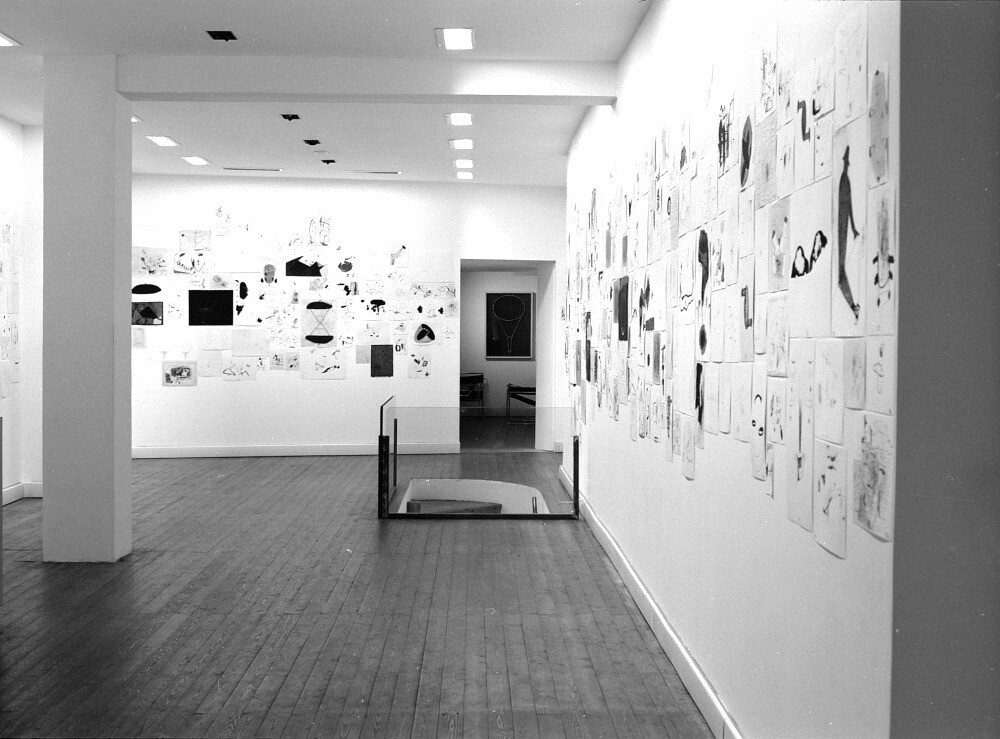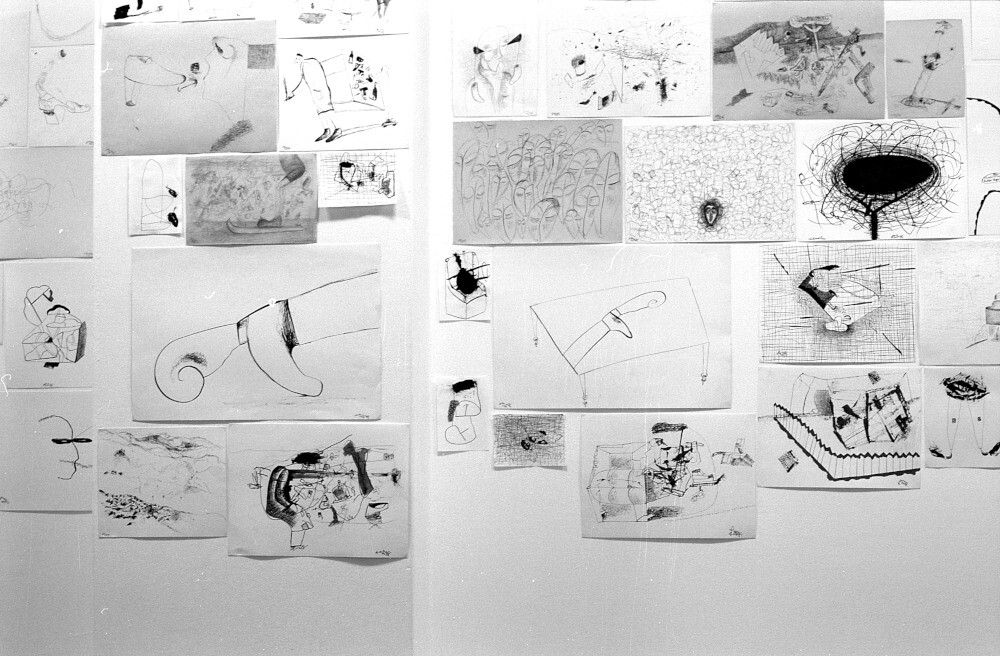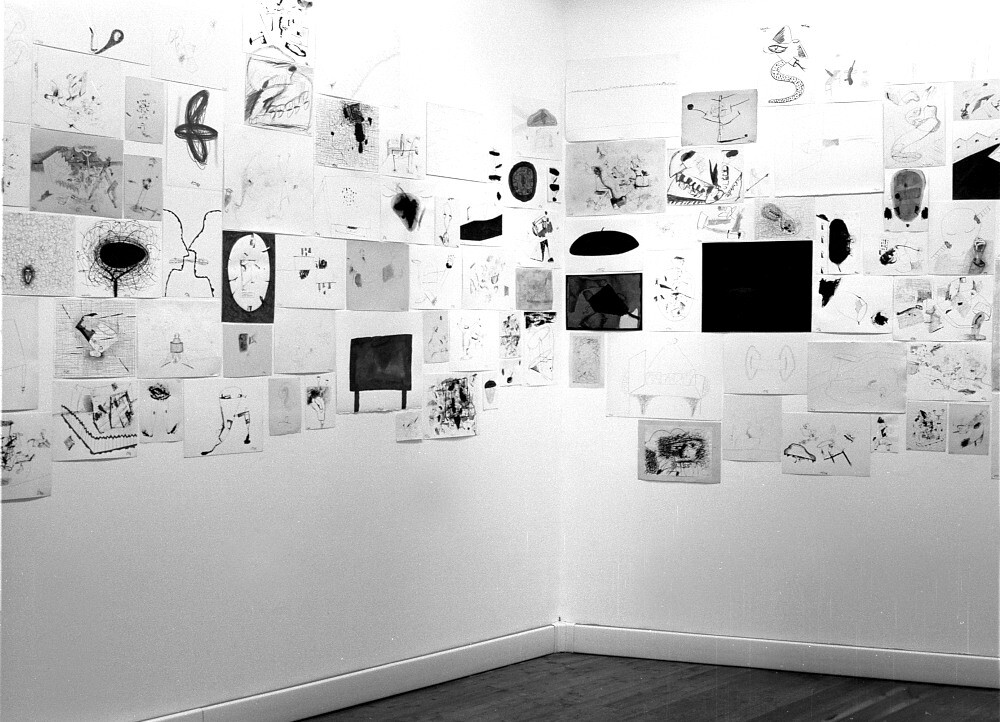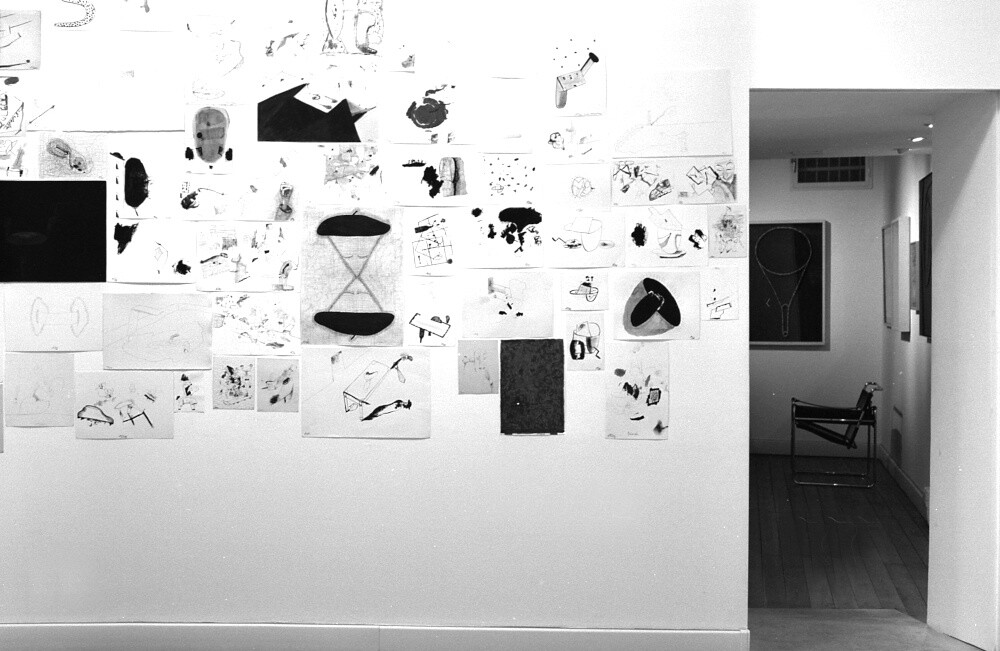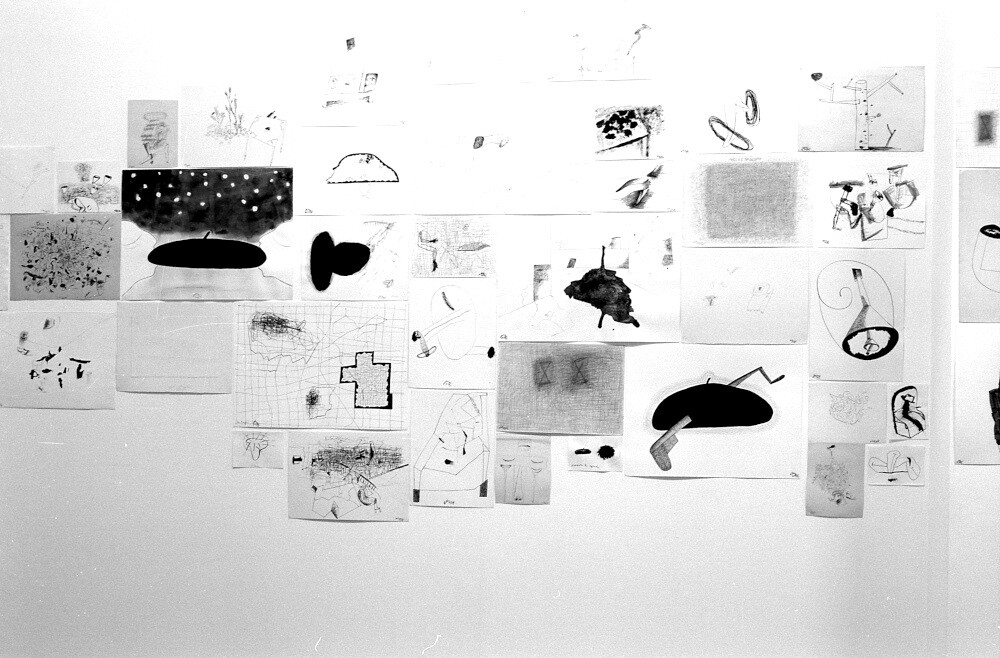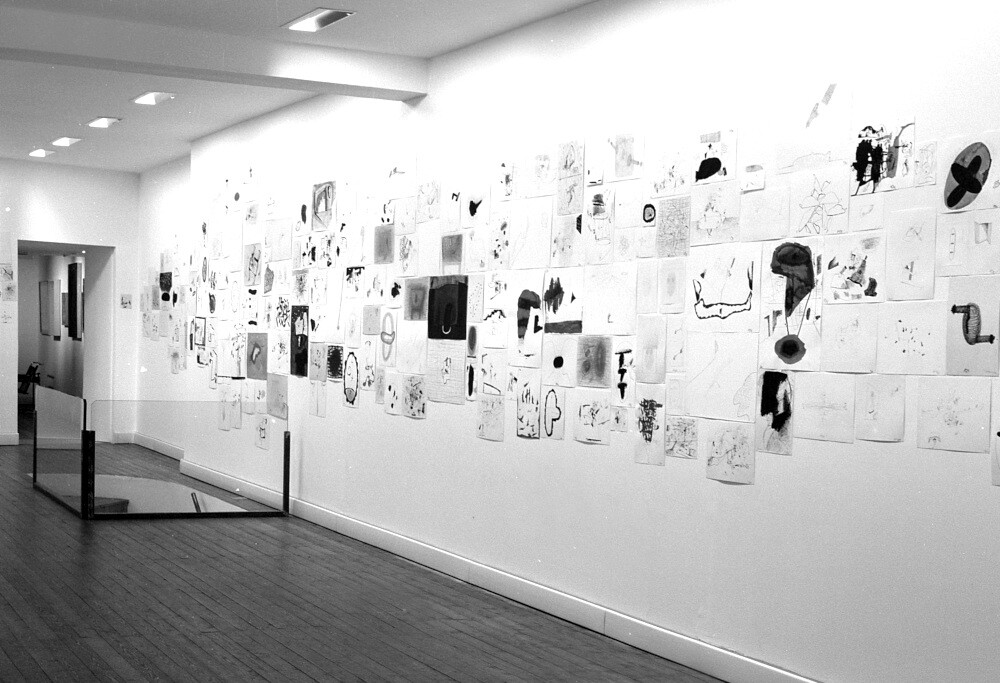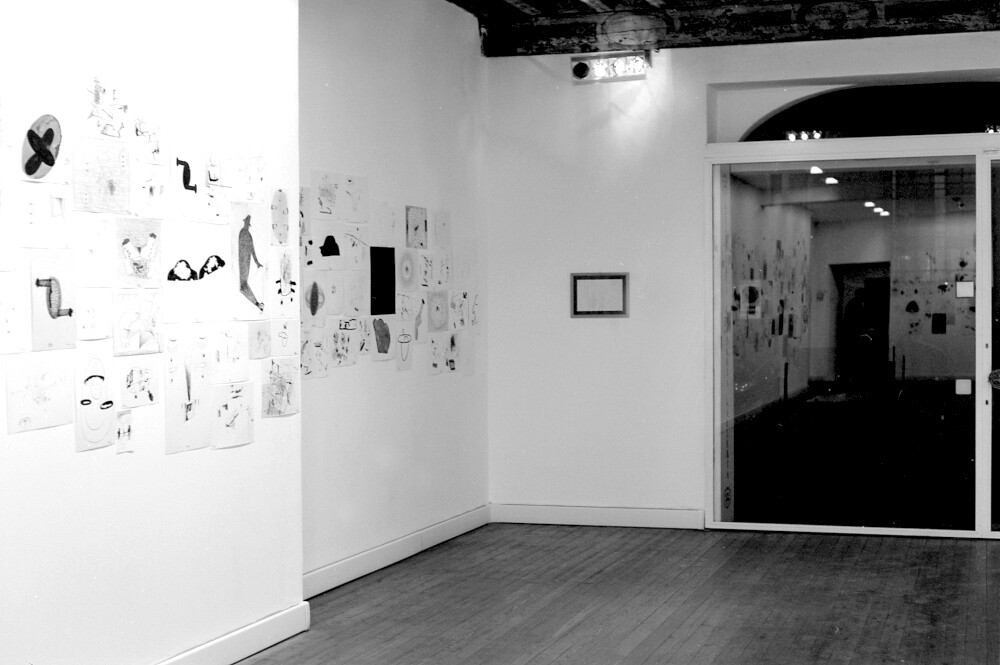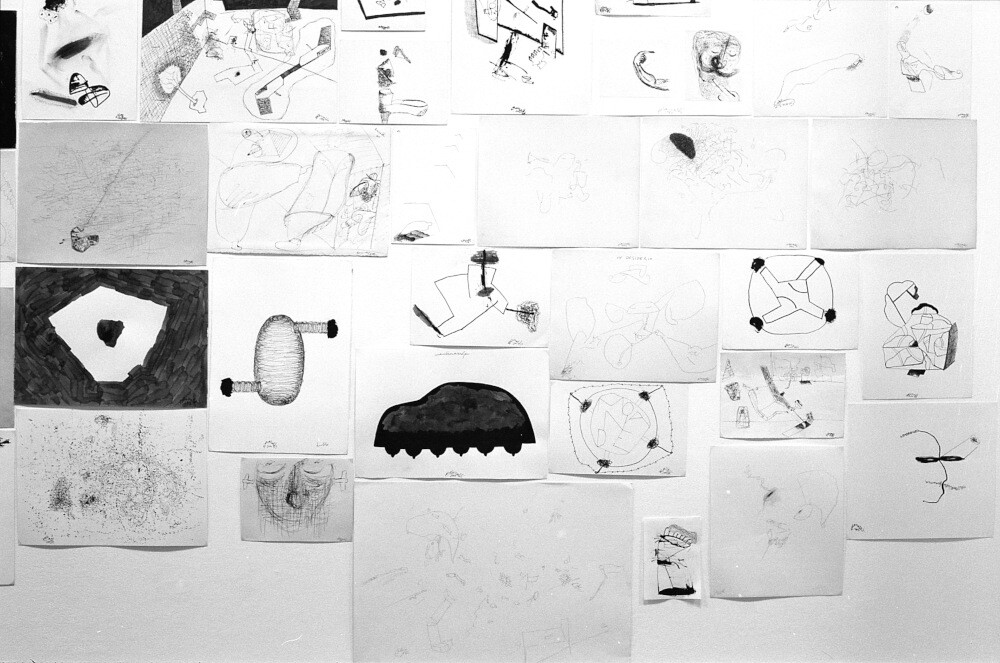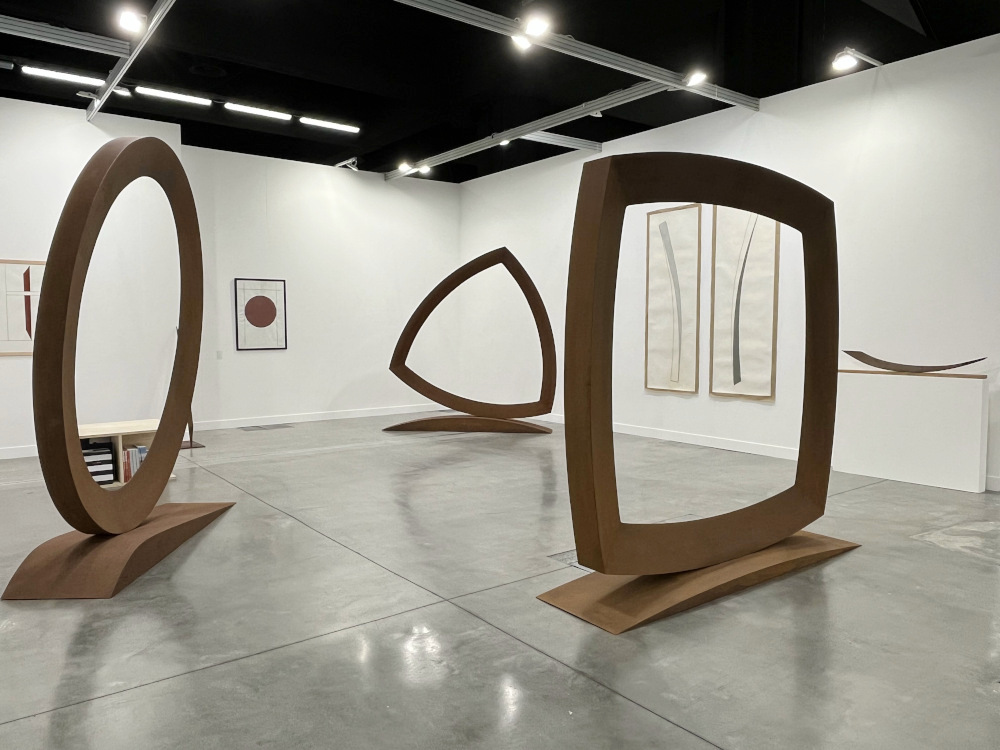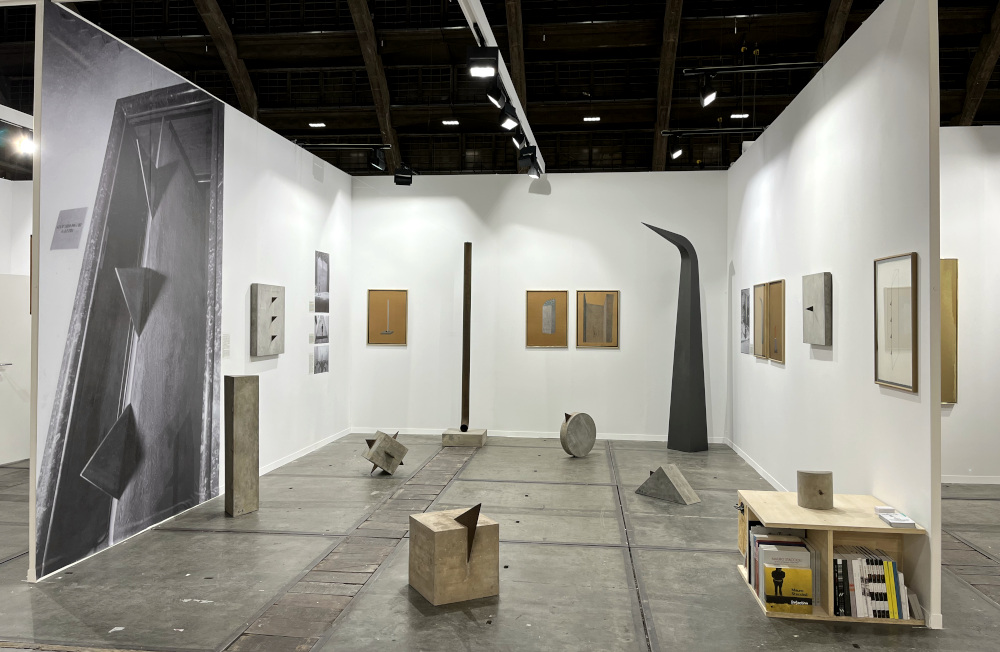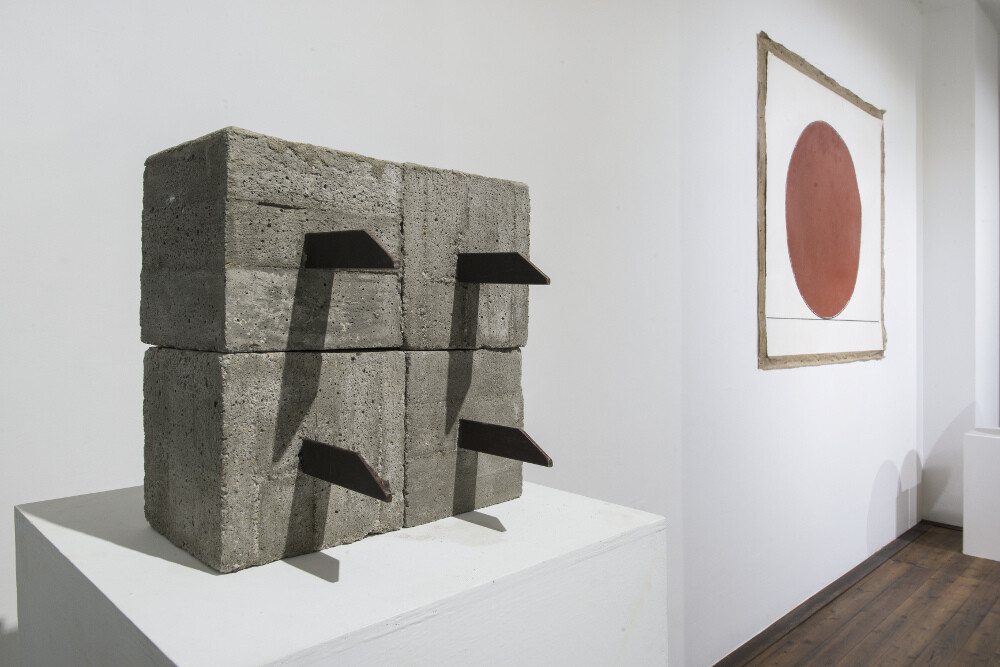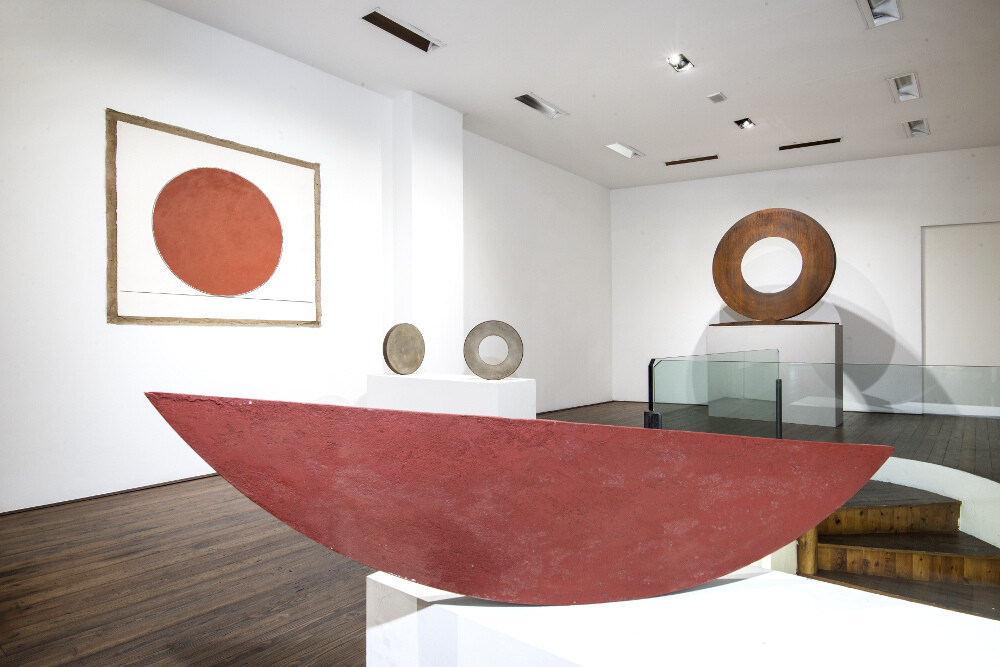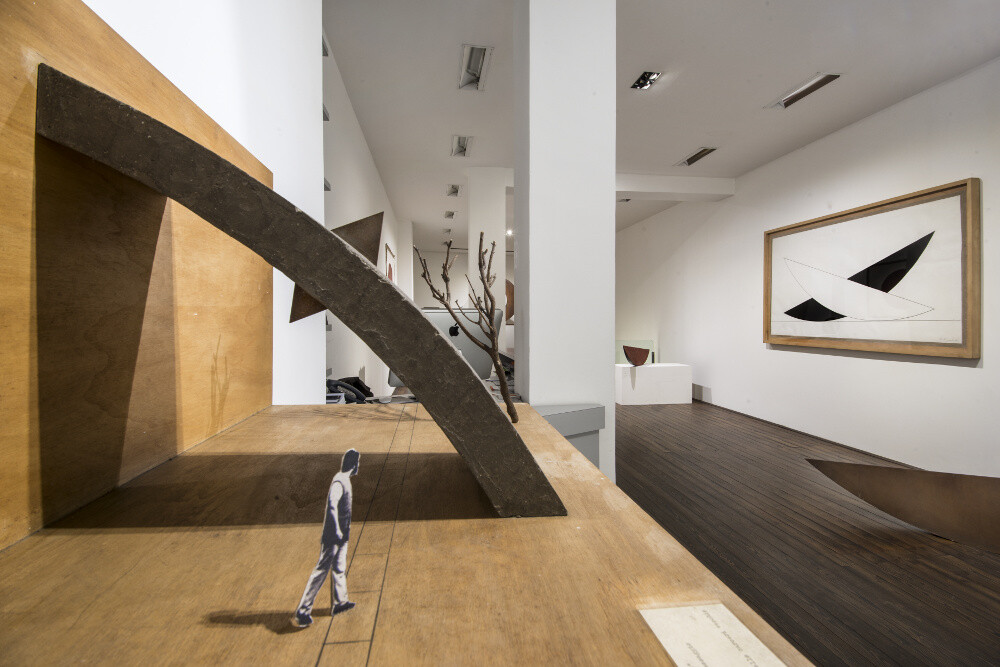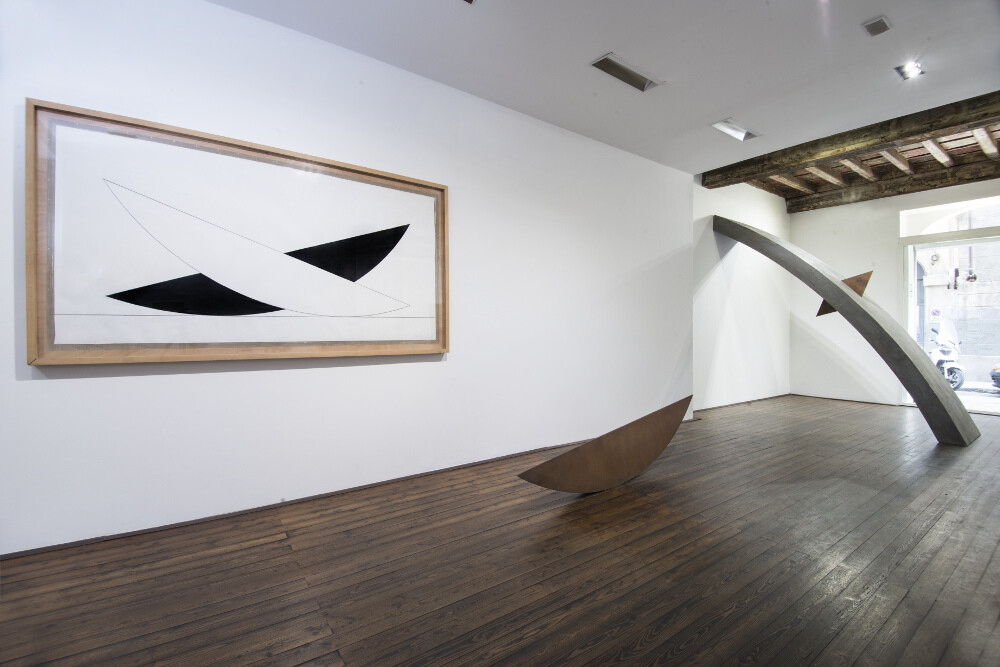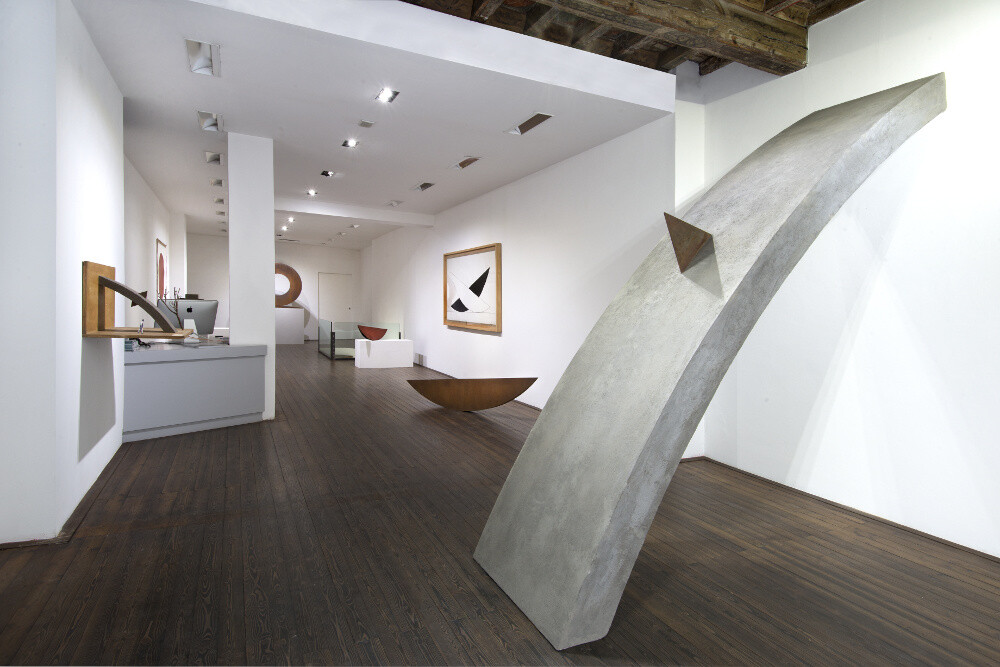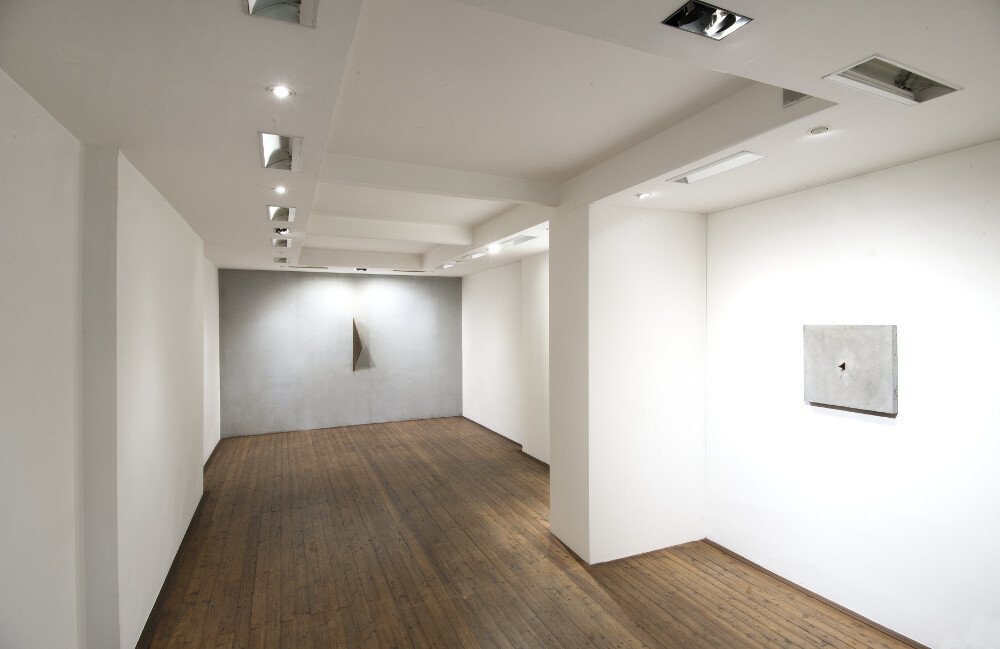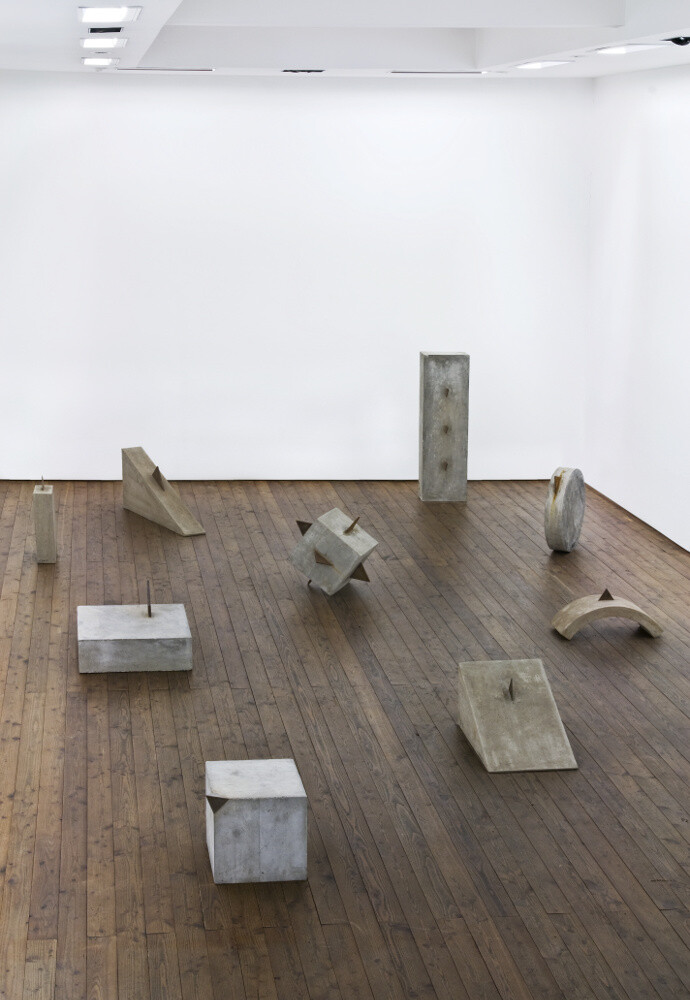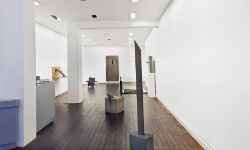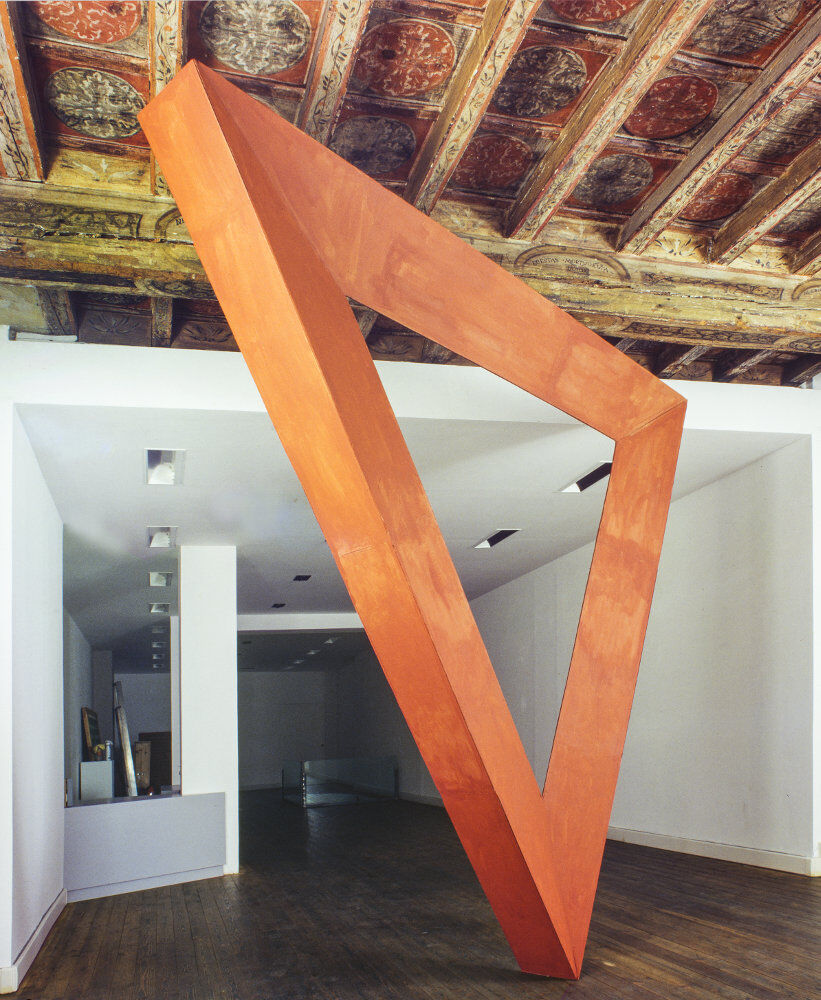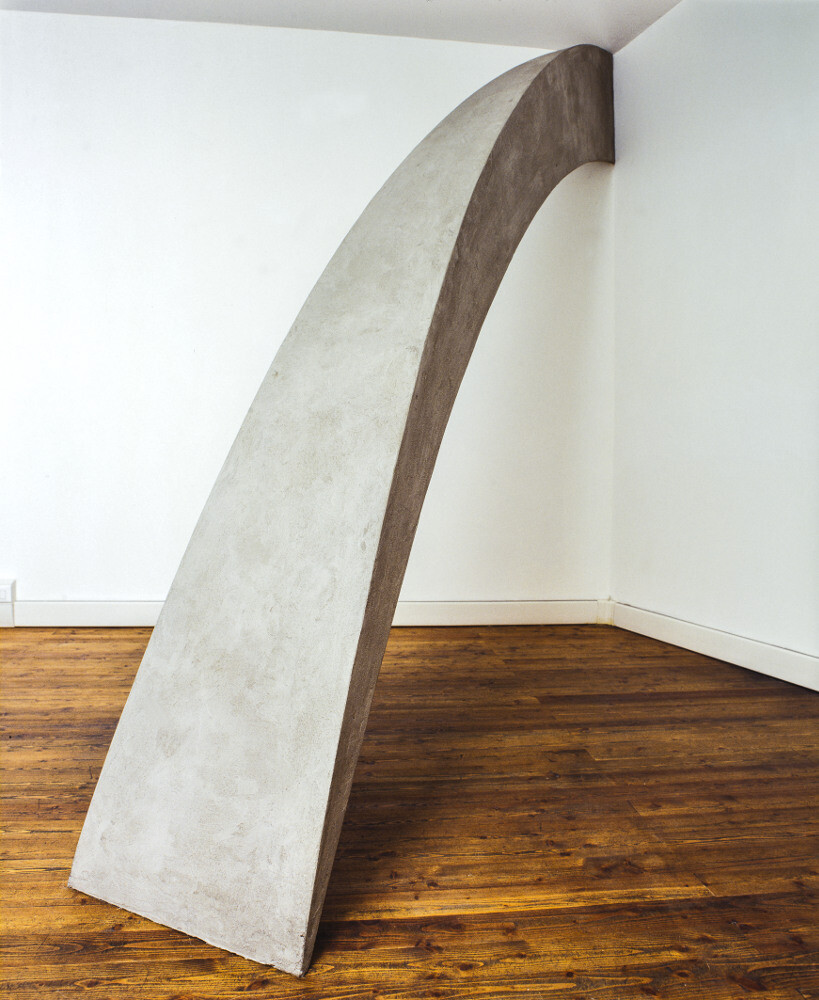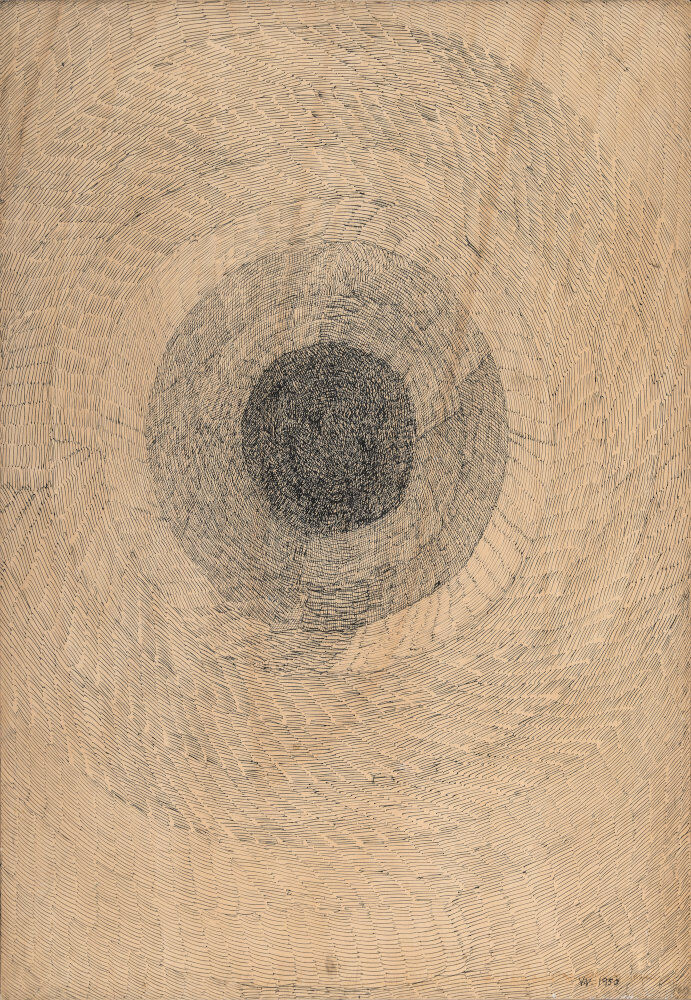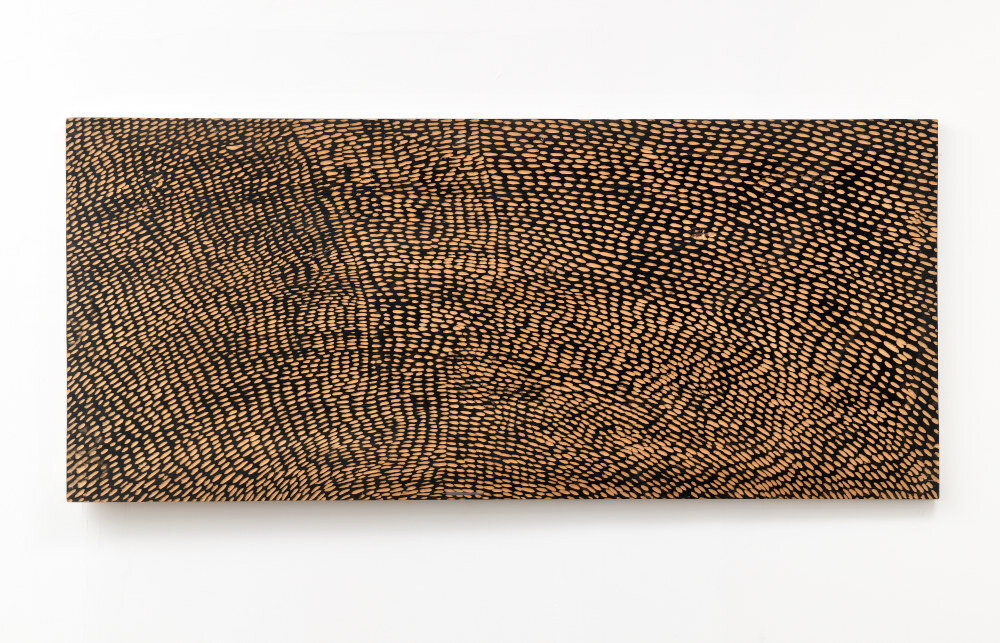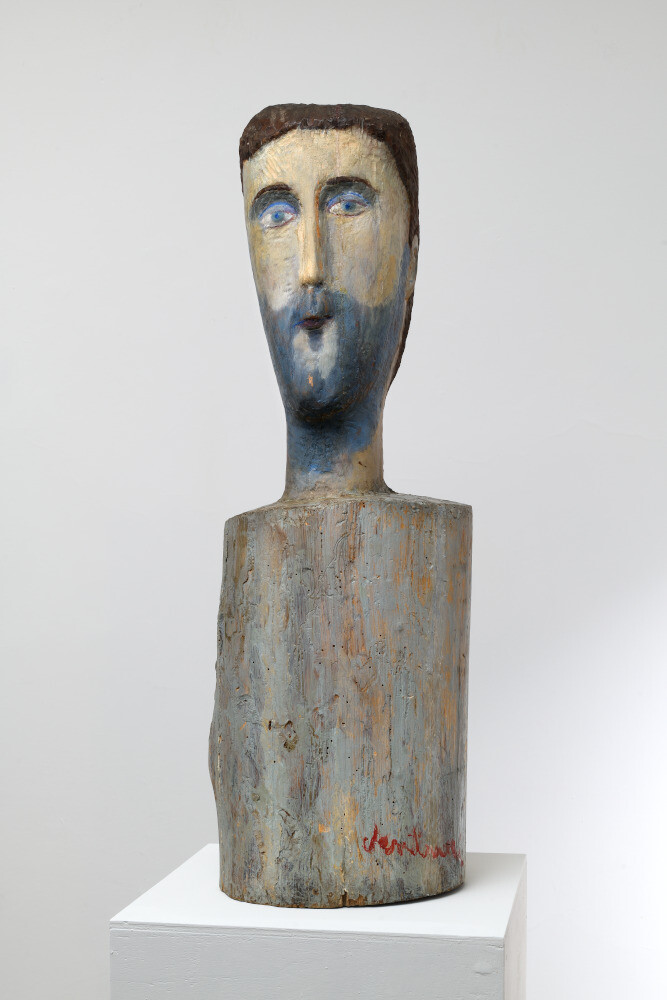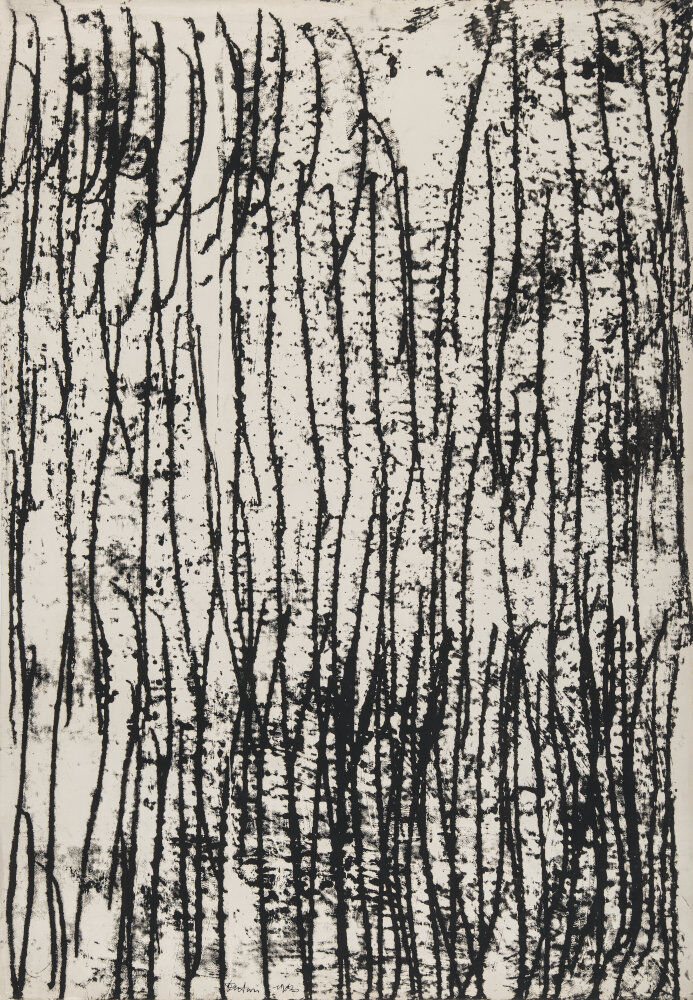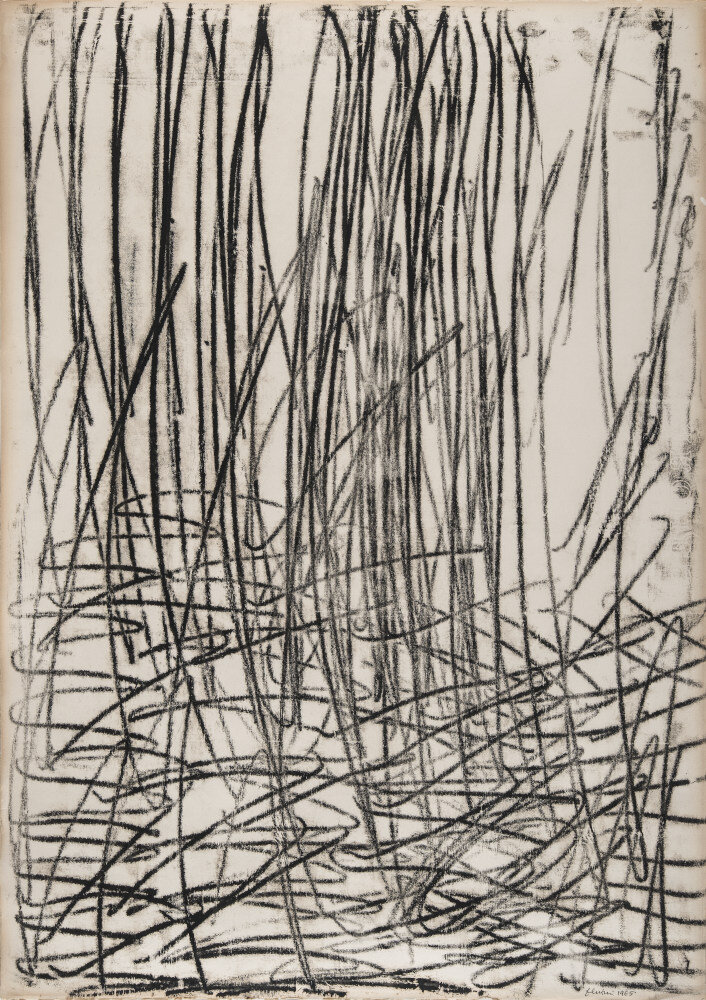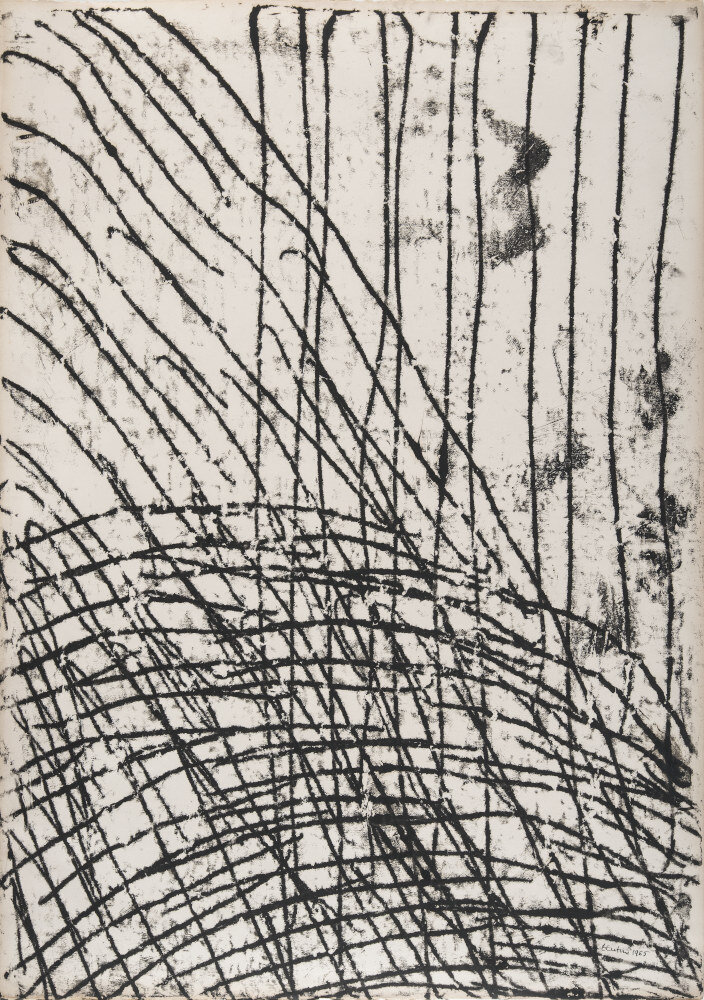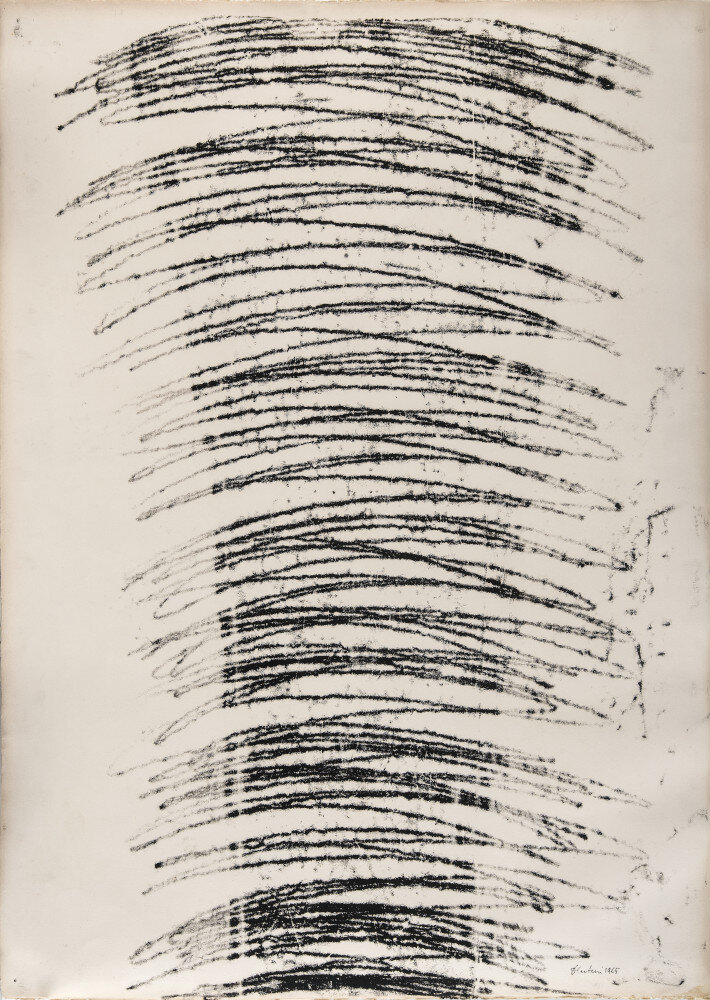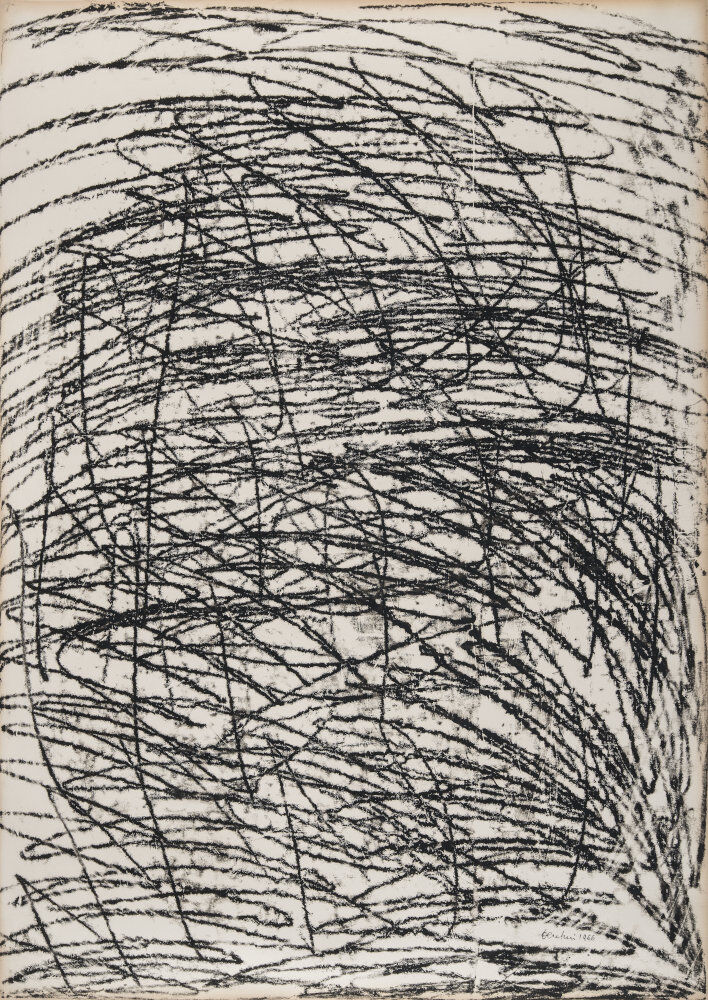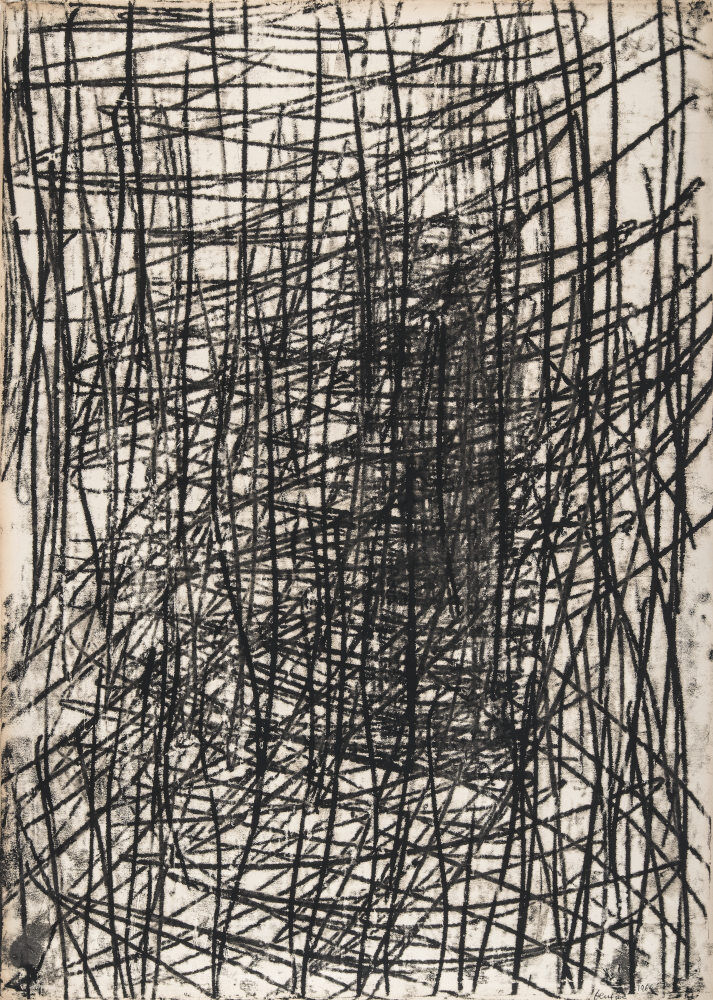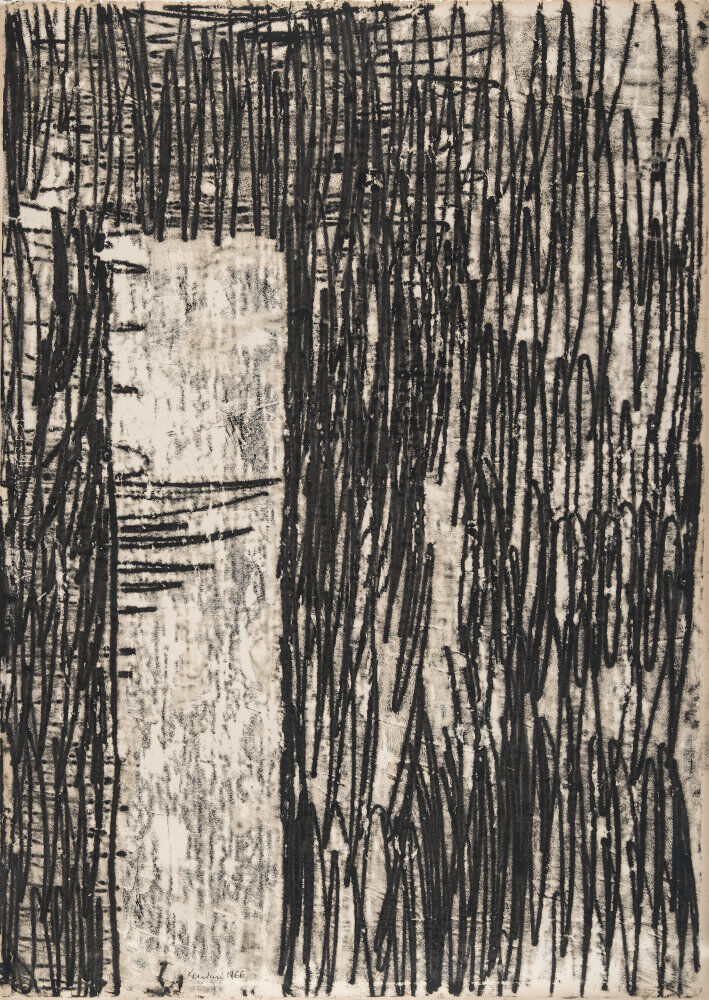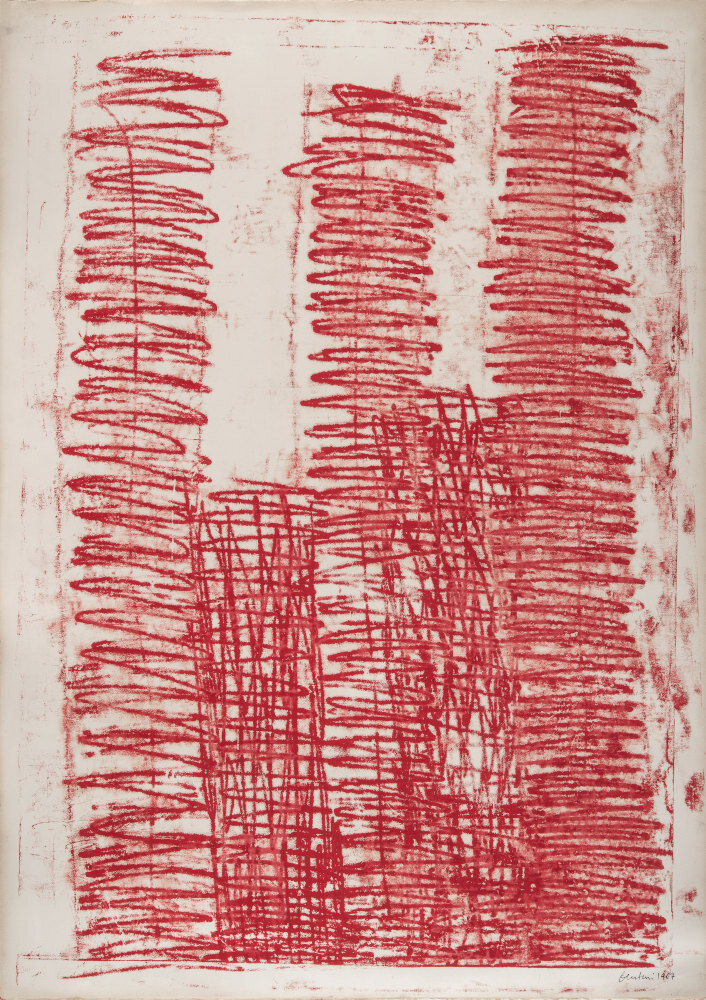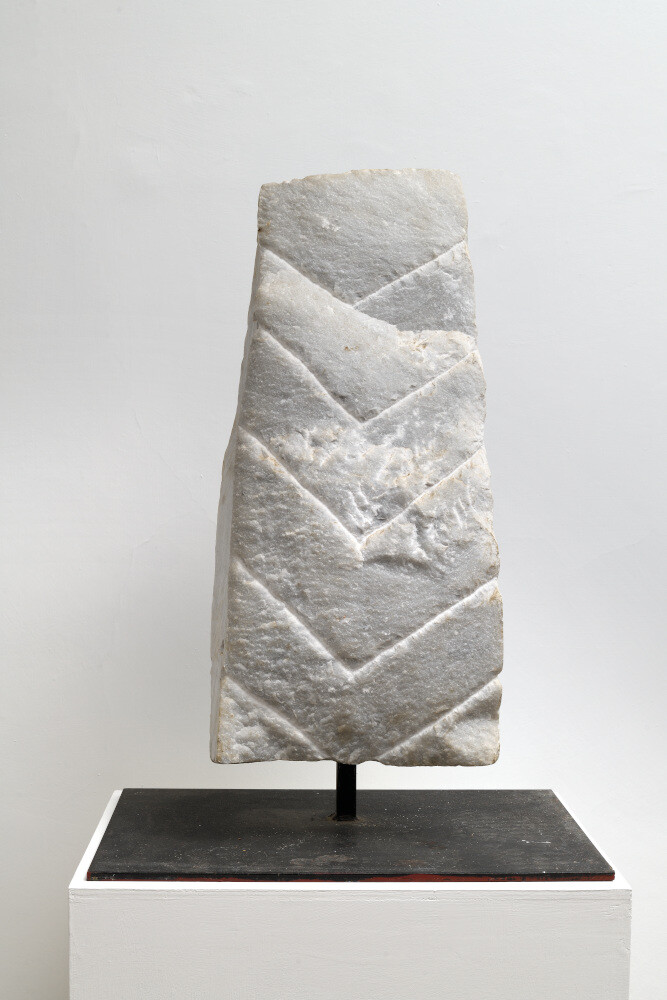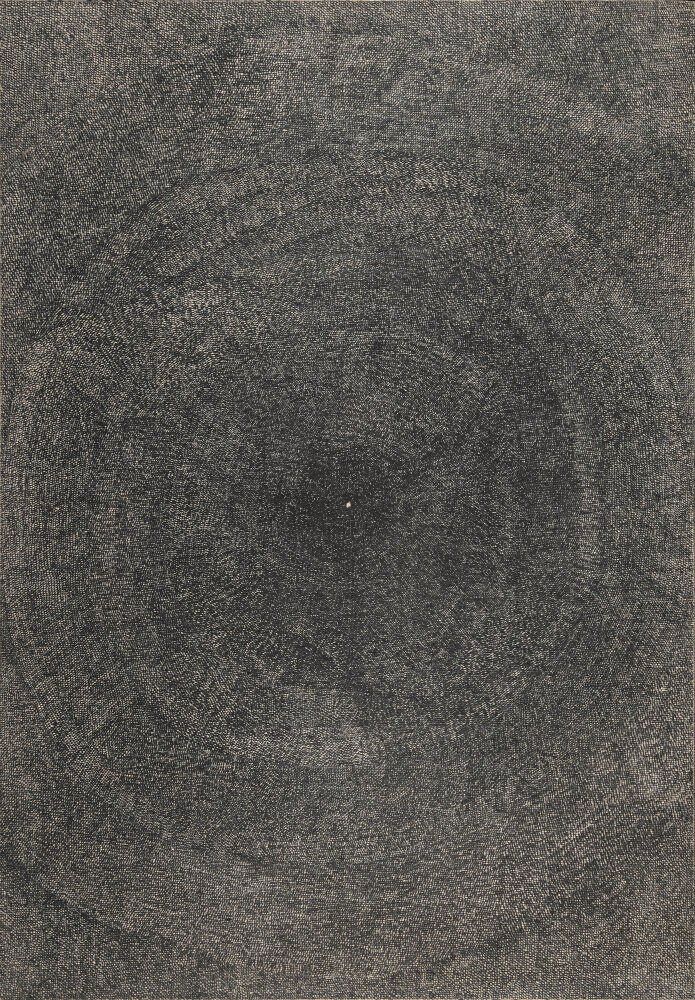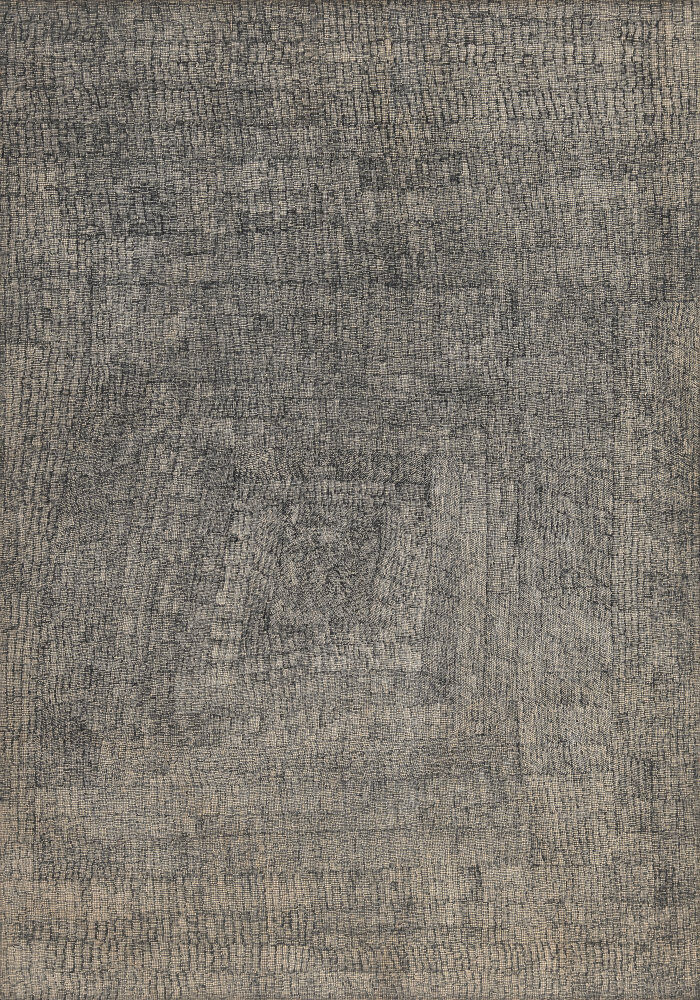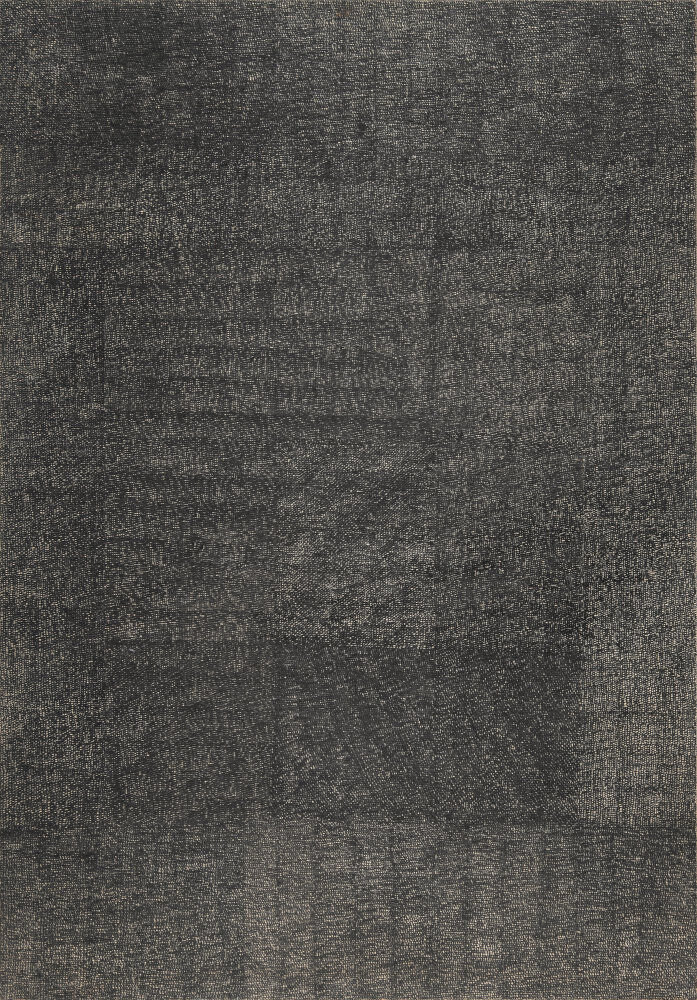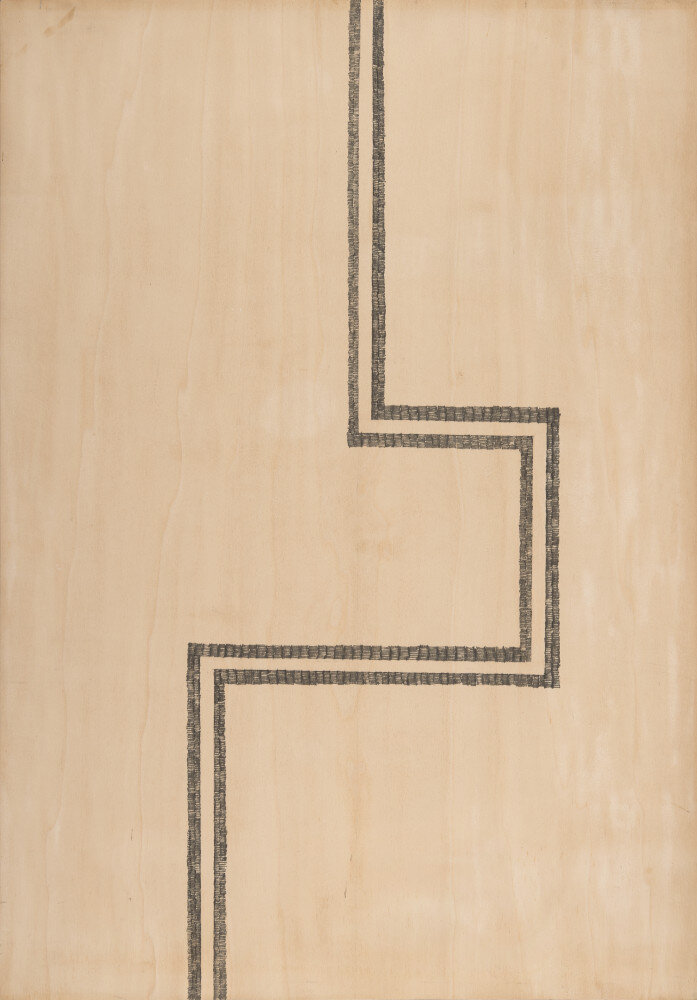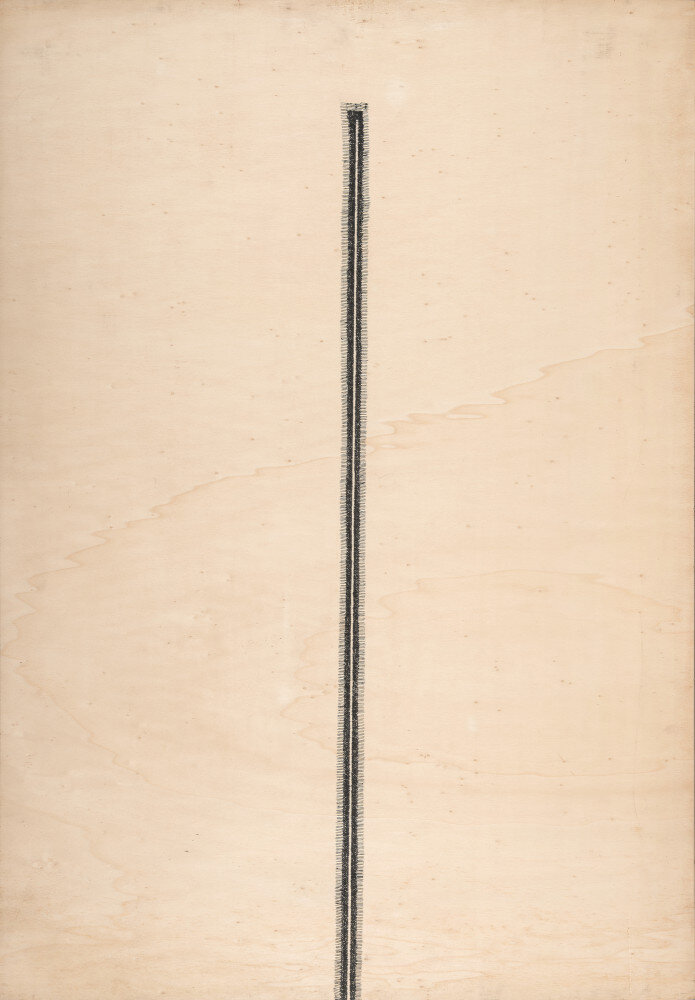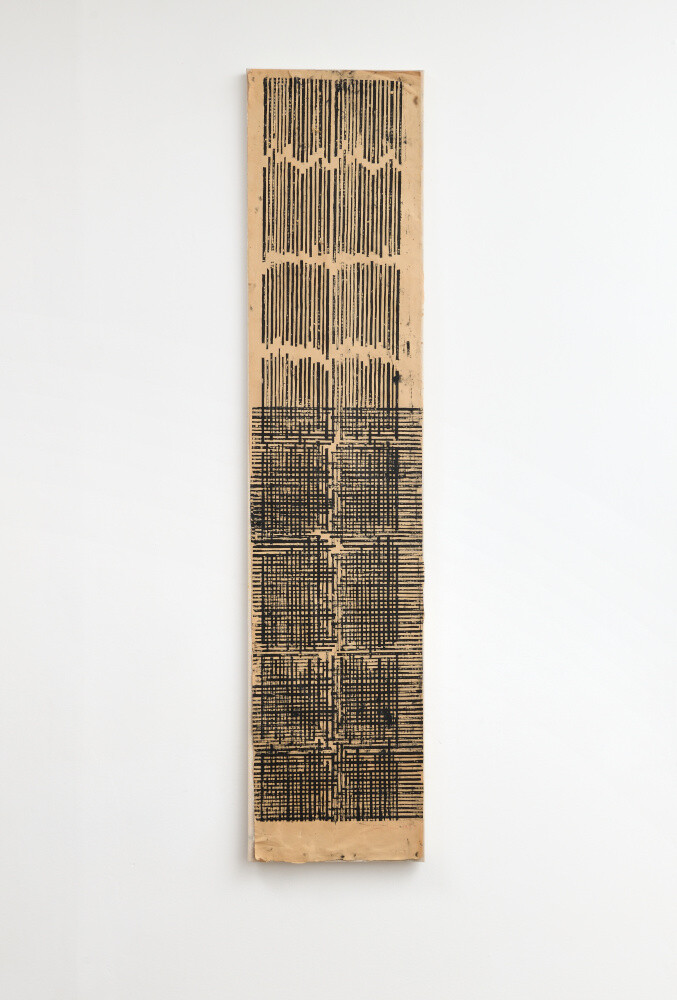RICERCA E SVILUPPO

Il Ponte gallery, with a long and prestigious history that began in 1965, has for more than a decade devoted special attention to a selection of artists working in the second half of the 20th century. These artists, of great historical and artistic importance, have not yet received adequate critical attention.
The gallery has therefore launched a research initiative aimed at furthering the study of their works. This initiative is realised through the recovery of significant works and archive materials, the publication of dedicated catalogues, and the organisation of exhibitions and shows, both permanent and virtual.
The conservation and study of these documentary collections have been developed in close collaboration with the artists’ archives and heirs. This commitment has made it possible to enhance and spread knowledge about these artists, contributing to the recognition of their contribution to the contemporary art scene.
The gallery aims to make the documentary materials and research produced as accessible as possible, both to the general public and to academic circles. This is achieved through the use of the most innovative and up-to-date information and communication systems. An exemplary model in this regard is the project to digitise the archive of the artist Mauro Staccioli, carried out in collaboration with the Bibliotheca Hertziana and the Fondazione Cassa di Risparmio di Volterra, which can be accessed freely online through a dedicated portal.
These are the artists on whom, to date, we have focused our research to broaden and develop their knowledge:
Lorenzo Bonechi
Il Ponte gallery dedicated a solo exhibition to Lorenzo Bonechi in 2020. From this time on, in collaboration with the artist’s heirs and archives, it has embarked on a path of recovery and revaluation of archival materials finalized at the creation of museum exhibitions and the future publication of in-depth studies and researches on Bonechi’s work.
Currently, Il Ponte gallery, in collaboration with the Lorenzo Bonechi Archive, is working on a significant retrospective to be held at the Castello di Soliera (MO) in the fall of 2024. This exhibition will present not only a comprehensive overview of the Valdarnese artist’s work, but also some previously unseen works, offering a unique opportunity to rediscover and appreciate the depth and variety of his artistic contribution.
Giuseppe Chiari
The collaborative relationship between Il Ponte gallery and Giuseppe Chiari and his heirs is now more than thirty years old.
The Florentine artist was one of the great protagonists of Fluxus first, then of Conceptual and Performances, who, moving from different disciplines, indicated new theoretical and practical positions towards art. His way of approaching the artistic problem is always irreverent and on the razor’s edge between doing and not doing, between saying and not saying, moving through alternative behaviors and with continuous transgressions from the specificity of languages.
After some initial contacts in the 1980s, Il Ponte hosted Giuseppe Chiari’s first exhibition in 2006 entitled “Mi hanno cercato” which celebrated the artist’s 80th birthday and collected materials (music scores, photos, writings) from the early 1960s to the present.
After the artist’s passing in 2007, the gallery continued its collaboration through the heirs and the Giuseppe Chiari Archive.
In 2010, the exhibition “I sei scalini sono la musica” curated by Andrea Alibrandi and Enrico Pedrini was held, recovering a nucleus of works related to the discovery in 1987 of a very small six-key piano and remained unseen.
In 2017, on the occasion of the tenth anniversary of Chiari’s death, Il Ponte organized together with four other Florentine galleries the exhibition “Pentachiari. Cinque gallerie per Giuseppe Chiari” curated by Bruno Corà. Within these five exhibitions, an aspect of Chiari that is perhaps less well known is persented at Il Ponte: his relationship with photography. In fact, although he was not a photographer, the artist, especially during the 1970s, often used this medium. He takes possession, however, of images not taken by him and, through his own signature, transforms them into his own work, in which the date, frequently present, coincides with this moment of appropriation and not with that of the shot.
In approaching the centenary of the artist’s birth, the gallery and the Archive are working closely together to organize a major museum exhibition in which to present an extensive retrospective of Giuseppe Chiari’s work. In this regard, a campaign of research, recovery and digitization of archival materials, both preserved at the heirs and a census of works and documents concerning the author’s artistic activity at other entities both public and private, is underway. To support this exhibition, in addition to the catalog, a first volume dedicated to his musical scores up to the 1970s will be published.
Rosa Foschi
Rosa Foschi has always operated away from the spotlight, conducting solitary and erudite research experimenting with mediums such as photography, video, and artist’s book, strongly influencing and being influenced by her life partner Luca Maria Patella.
Starting with the 2019 solo exhibition “Polaroid Rosa & Film Foschi” it is the gallery’s mission to highlight the figure of Foschi and bring it to the knowledge of the general public by enhancing his artistic research and personal history linked to the Roman and European artistic and intellectual milieu, from the L’Attico gallery to Cinecittà, from post-Dadaist suggestions to the investigations between iconology and alchemical researchs of the post-conceptual Roman scene.
The gallery will host a solo exhibition of her work in winter 2024 that will investigate her researches on the Artist’s Book concept, placing the works side by side with historical documentation and videos made by her.
Bruno Gambone
Bruno Gambone is best known to the general public as a ceramist. Few people know, however, that between the late 1950s and early 1970s he had devoted himself exclusively to painting.
After moving to New York in 1963, through vivid and bright colours along the lines of a certain US Minimalism, his geometrical painting acquired a volume that emerged forcefully from the surface of the painting. Between 1966 and 1967, both through painted wooden structures and with the creation of geometrical volumes squashed against the wall and covered in canvas, this three-dimensionality took shape and gained greatly in significance. In 1967 at Galleria del Cenobio in Milan, upon the invitation of his friend Alviani, he created an arrangement of canvases stretched over wooden structures, introduced in the catalogue by a text by Germano Celant. Then he continued along this line with works substantially with the characteristics of ‘object painting’, which Gillo Dorfles wrote of in 1967, bringing together Castellani, Bonalumi and Scheggi with Fontana in an exhibition in Rome at the Arco D’Alibert owned by Mara Coccia. To Bonalumi and Scheggi in particular, Gambone was joined by a brotherly friendship and shared intentions, and together they took part in numerous exhibitions and artistic-theatrical actions in that period.
This world of Bruno Gambone, despite being quoted in studies by other authors, we can say remained hidden for over forty years by his much better known activity as a ceramist, which he devoted himself to almost entirely following the death of his father Guido (ceramist between 1909 and 1969).
In 2014 the gallery dedicated to him the first retrospective focused on his work as a painter entitled “Objects 1965-1970” supported by a publication that traces through testimonies and numerous documents Gambone’s incredible story in the art world of the 1960s between New York and Milan.
After the artist’s passing, Il Ponte continues to collaborate with the archive to further the study of his pictorial work.
Giulia Napoleone
In 2018, the Galleria Nazionale d’Arte Moderna in Rome retraced Giulia Napoleone’s artistic career with an anthological exhibition curated by Giuseppe Appella. The works on display numbered 104 (paintings, sculptures, drawings, engravings and artist’s books dated 1956-2018) were selected to highlight the birth and developments of a precise formal language: of inner landscapes, landscapes “of dots” as she herself describes them, that research into semantic complexity which dominated the intellectual and art scene in the 1960s, when the artist made with her very personal, poetry-mediated reading of reality.
Giulia Napoleone has been collaborating with the gallery since the mid-1990s, which dedicated to her three solo exhibitions over the years and supports her work in numerous other venues both in Italy and abroad.
The first, in 1996, “La percezione della luce come emozione”, presents a group of pastels and 23 unpublished watercolors. In 2002, she presented for the first time oil works accompanied by drawings and etchings in an exhibition with the title “Mutano i cieli”, which, starting with a verse from Horace’s Epistolae, Caelum, non animum mutant qui trans mare currunt, tends to emphasize how the changing of the techniques results in a strong modification of the expressive form.
The research work on Giulia Napoleone’s practice originated in the margins of the exhibition held in 2020 “Nero di China”. This one, which featured artist’s most recent production made entirely in India ink, was accompanied by the publication of a volume that, in addition to presenting the 15 works on display, the accompanying catalogue retraces this side of the artist’s work from her very first small Indian ink drawings in the mid-1950s onwards. The images and text by Bruno Corà will take us into the distinct dimension of the world in black and white formed by works in which the artist takes Indian ink to its furthest extreme.
Galleria Il Ponte is also carrying out a careful effort to organize Giulia Napoleone’s archive, with the aim of making it available and accessible to scholars and researchers. This project will provide an important research tool not only on Napoleone’s artistic journey, but also on the vibrant artistic and literary environment in which she was formed, worked and continues to operate.
Michel Parmentier
Galleria Il Ponte presents the first Michel Parmentier exhibition in Italy in 2022, curated by Guy Massaux, artist and his historical assistant, in collaboration with Eduardo Secci Gallery in Milan and the Association Michel Parmentier.
The exhibition “Michel Parmentier. Works and Documents” presents historical works from the 1960s, 1980s and 1990s, accompanied by a rich selection of drawings, photographs and historical documents that testify to his remarkable artistic journey. This was accompanied by the first publication in Italian (in French and English as well) about the artist, in which, in addition to important critical texts, the entire creative and intellectual path of the French artist is retraced through documentary evidences.
Luca Maria Patella
Luca Maria Patella grows, under the influence of his father Luigi, cosmographer and humanist, between Europe and South-America. His background is artistic, scientific (structural chemistry: he was the young assistant – for the relationships between “resonance” and biochemistry – of Linus Pauling, twice Nobel prize winner) and psychoanalytical (from 1967, with Ernst Bernhard). His principal work as an artist began in the mid 1960s and his interests embraced both art and science, using various experimental means of expression, such as photography (colour slides, large toned photographic canvases, colour and b/w prints and various personal techniques), “film-works”, video, sound, books, computers, painting, engraving and installations. He studied both artistic and scientific subjects and was strongly influenced by astronomy, structural chemistry and analytical psychology, becoming inventive in all these fields during his years in Rome and Paris. He had many friends and acquaintances among international artists and personalities, amongst whom Marcel Duchamp, André Masson, André Breton, Jacques Lacan, Giorgio De Chirico, Michelangelo Antonioni, Pier Paolo Pasolini, Lionello Venturi, Roman Opalka, S.W. Hayter, Leo Dohmen, Max Lüscher, Joan Jonas, Paul Watzlavick, Meret Oppenheim, Andy Warhol Sol LeWitt. He stands out in the world of Italian art thanks to his invention of complex technical and creative procedures.
Since 2017, the gallery has dedicated publications and solo exhibitions to his artistic method, delving into innovative techniques and intermediary and multidisciplinary research.
These include “La fotografia di Luca Maria Patella”, edited by Alberto Fiz, the first publication that collects Patella’s major photographic works between 1965 and 1985, and the exhibition “NON OSO / OSO NON / essere” in which Patella, saying: “Well! more modestly (alertly now?) I am returning to Florence, to The Ponte (The Bridge) (!) with some of my (Florentine?!) ideas (which conjure up a profound dialectic between INConsciousness & CONSCiousness)”, presents a selection of works rich in references to the history of art and literature from Dante to Lacan among many others.
The gallery has been able to recover some of his important historical works over the years, which have been presented in almost all of the artist’s major exhibitions, both Italian and international. These include some from the “Terre Animate” series considered by the curators of MOCA in Los Angeles “a key-work in the history of Land-art” and recently presented in the exhibition “Renverser ses yeux” at Jeu de Paume and Le Bal in Paris.
Renato Ranaldi
Il Ponte has assiduously followed the work of Florentine artist Renato Ranaldi for over twenty years, producing solo exhibitions, catalogs and supporting him in his literary production.
In 2005 Ranaldi’s first exhibition at Il Ponte was held, a retrospective devoted to small drawing from the 1960s to the present. “Parusie – repertorio del piccolo disegno”, curated by Bruno Corà, was born to accompany the impressive volume tracing the development of Ranaldi’s work through the entire corpus of his small-format drawings, covering the span of forty years. The eight hundred and twenty-six plates that make up the book have been presented in their entirety in the gallery through an arrangement that follows the logic of the picture gallery, almost to the point of occupying every possible space on the walls.
The gallery’s attention to Ranaldi’s production of drawings does not stop with this first instance. In fact, Ranaldi feels “the inner need to find in drawing a way to exist, to be present in the world and thus express his own vision of things”. Thus come to light in 2015 the two tomes of “Disegni 1959-2013” edited by Gli Ori and the book “Fuoriarchivio. Disegni 1980 / 2022” published by Forma in 2023.
Another dimension of Ranaldi’s artistic practice that Il Ponte is delving into is the video experimentation conducted by the artist in the late 1960s started with the release of the film Senilix in 1968. This lesser-known aspect of Ranaldi’s work stems from the experience of the Teatro Musicale Integrale with Andrea Granchi and Sandro Chia in the period 1967-1969 and developed until 1978 by making various works of artistic cinema.
Ranaldi’s artistic production has always been flanked by a tireless writing activity that over the years has produced texts of various genres, from essay to narrative and novel, through the tones of invective and lamentation. His writings have appeared in the contemporary art magazine Mozart, the bimonthly magazine of images, politics and culture Il grande vetro, and the quarterly literature periodical Il portolano.
His writing tends to describe the original tension and physical-mental precarious balance that imprint his signs. La misura, la rotazione, il ritorno and Tebaide, which deal with the bewilderment of the artist in a totalizing identity crisis, precede his latest release, the volume “Ala spazzina” edited by Le lettere.
.
Mauro Staccioli
Il Ponte gallery inaugurated its collaboration with Mauro Staccioli in 2004 with the exhibition “Sculture e progetti” for which the artist made two site-specific artworks, Firenze 2004 and Uguale e contrario.
Since this experience, Il Ponte become one of the reference gallery for the artist in Italy, curating together with Galleria Niccoli of Parma the installation of the work Quadrato dai lati curvi in Piazzetta Reale in Milan on the occasion of Miart 2008.
The collaboration between the two galleries produced in 2009 his largest exhibition in Volterra, his hometown, “Mauro Staccioli. Volterra 1972-2009 – Places of Experience.” This featured not only a selection of drawings, small sculptures and photographs presented in some of the city’s exhibition spaces, but also as many as 19 large-scale environmental sculptures that, affecting not only the city of Volterra but its entire territory, emphasize a landscape in which history, culture and human labor are intertwined in the artist’s work. Many of the environmental works conceived for the occasion are still in place today and have become a proper outdoor sculpture journey.
The production of this exhibition and its numerous monumental sculptures highlighted the need to create an organization dedicated to the enhancement, protection and maintenance of Staccioli’s works around the world. This was how the Associazione Archivio Mauro Staccioli was born in 2012, in which the gallery has been a part since its founding.
To celebrate this event, Il Ponte and Niccoli galleries jointly held the exhibition “Mauro Staccioli. The Concrete Years 1968-1982”, and accompanied it by the eponymous volume. This book, for the first time, documents and reconstructs the first fifteen years of Staccioli’s artistic production through the works, events and documents that characterized the highlights of his artistic journey.
In 2018, the year of his passing, Il Ponte gallery dedicates to him the exhibition “Mauro Staccioli. Lo spazio segnato”, curated by Alberto Fiz and, also curated by him The Soprintendenza Speciale di Roma – Archeologia Belle Arti Paesaggio and the Galleria Nazionale d’Arte Moderna e Contemporanea organize a major retrospective in Rome at the Terme di Caracalla, “Mauro Staccioli: Sensibile Ambientale” (June 13-November 4, 2018).
The year 2020 marks the beginning of an important process of scientific restructuring of Mauro Staccioli’s archive. “Digital for Mauro Staccioli”, a project curated by Ilaria Bernardi, wins the “Toscanaincontemporanea 2020” call for proposals. These funds were used to finance, in parallel to a digital exhibition that can still be seen on the archive’s website, the inventorying of the paper and photographic documentation kept at the Mauro Staccioli Archive, relating to the artist’s projects carried out since 1971. This digital inventory, created by Dr. Caterina Martinelli, is of fundamental importance in allowing scholars to remotely identify the presence or absence of documents related to the subject of their interest.
Collateral to this project, a collaboration was born in 2019 with the Bibliotheca Hertziana – Max Plank Institute in Rome, which, from 2020 to 2023, carried out through its Digital Humanities Lab a monumental digitization campaign of the documents produced by Staccioli from 1971 to 1988. These materials have been published online, freely accessible, on a custom-made application which enables users to explore the digitized collection. It leverages semantic data storage technologies, employing a structured data graph, complemented by hidden features designed to facilitate the discovery of new content during browsing.
This interface was presented to the public in conjunction with two events: the documentary exhibition “Mauro Staccioli: Consolidare un’eredità artistica” and the workshop “Scultura italiana dal secondo dopoguerra agli anni Ottanta”, both held at the Bibliotheca Hertizana in Rome.
On January 2024, thanks to the partnership with the Fondazione Cassa di Risparmio di Volterra, more than 30,000 documentary units of Mauro Staccioli’s archives, his drawings and the library have found permanent residence in the Ex-Oratorio del Crocifisso, inside the Centro Studi Espositivo Santa Maria Maddalena. In addition to ensuring the preservation and accessibility of the materials to scholars and researchers, the Mauro Staccioli Museo Archivio presents, in a permanent exhibition space, about forty maquettes, some of the many made over the years by Staccioli to study, test and present his sculptures. The actual works, combining a strict architectural outlook with a poetic utopian vision, are found in urban or natural contexts. The set of sculpture designs is accompanied by an interactive touch screen specially designed to trace the story of the large sculptures made by the artist in Italy and abroad using archival documents, sketches, preparatory drawings and digitized design photomontages.
The Mauro Staccioli Archive, Galleria Il Ponte, the Fondazione Cassa di Risparmio di Volterra and the Bibliotheca Hertziana – Max Planck Institute of Rome are collaborating to complete the digitization of the entire documentary and book collections relating to the work of Mauro Staccioli. The goal of this project is to make these materials freely accessible online, thus promoting knowledge and study of the artist’s work and facilitating access to valuable resources for scholars, researchers and art enthusiasts worldwide. This initiative aims to preserve Staccioli’s cultural legacy so that his works and artistic contributions can be appreciated and studied by future generations.
Venturino Venturi
To Venturino Venturi, a Tuscan artist who was born and lived in Loro Ciuffenna, Il Ponte dedicated a retrospective exhibition in 2023. The exhibition was the occasion to re-establish the relationship begun with Venturino Venturi by gallery founder Vincenzo Alibrandi, who exhibited his works several times in San Giovanni Valdarno from 1966 to 1974 and with whom he had collaborated on a cycle of more than thirty graphic works, including etchings and burins, in 1972.
The ties forged for this recent exhibition with the Venturino Venturi Archive led to the creation of the volume “Nato sì, molto tempo fà, Scritti 1936-1974”, edited by Lucia Fiaschi and Nicoletta Mainardi, published by Gli Ori from Pistoia, which collects almost the entirety of the artsit’s literary production.
Il Ponte gallery is also involved in the preparatory work for the new catalog raisonné of Ventuino Venturi’s work to be published in 2025, for which a significant photographic campaign is underway to document works produced by Venturino and a major process of digitizing the archival materials that will become part of the volume.
